(I, myself, write books professionally, and I hope you will sample them—you can find a generous list on amaz0n, on bookshop.org, at b&n, or in your local library. This will not be the last time I mention this fact. I am also tippable, for the generous, here. Upcoming appearances: July 15, 6–7:30, author talk, Old Stone Church, 251 Main St., East Haven CT) | July 19, 10–3, Book Walk, Main St., Old Wethersfield CT.)
About Daniel Pinkwater (henceforth DMP) I know nothing and everything. I say nothing because I’ve never met the man. I’ve never spoken to his friends or relatives. My few attempts to flirt with him online have been failures (as such flirtations tend to be). Whatever deeds he has done in his life await the pen of a hypothetical future Boswell or more likely, as is the fate of most deeds, the oblivion of time.
But every man husbands inside his breast a secret soul, which some eschaton or another is always threatening to reveal but which can be perceived on this side of the veil solely through the intermediary of art. I know a lot about DMP’s art—the literary art of his published books, specifically. That’s what we’re here to talk about.
DMP wrote or co-wrote (depending on how you count) about 105 books in his career, and what follows is a ranking and discussion of 104 of them.
The remainder of my methodology I have relegated to a footnote1 so as not to tax the patience of the reader.
Without (as they say) further ado, the entire DMP canon, best to worst—scroll down to your favorites and get mad at me!:
•1 Alan Mendelsohn, the Boy from Mars (1979 middle-grade novel)
[Two junior-high students gain psychic powers to 1. baffle their classmates and idiot teachers and 2. travel to other dimensions.]
Alan Mendelsohn, the Boy from Mars (permit me to here at the beginning to proffer a smidge more of plot outline) is the story of young Leonard Neeble, suffering through a terrible junior high experience until he meets a weird classmate known as Alan Mendelsohn; Alan claims to be from Mars (or alternatively the Bronx). Together Leonard and Alan frequent used bookstores, and lo in an occult shop they discover the secret to psychic powers and eventually interdimensional travel. They have an adventure. Leonard finds peace.
I’ve argued elsewhere that many or most of DMP’s books follow a similar structure: An alienated young man meets a weird character, gets drawn by him into an ever-weirdening world of weirdness, and finally achieves some kind of transcendent experience . You will notice that this monomyth, this DMP-standard plot structure, also fits Alan Mendelsohn; so why, then, is the book special? What makes Alan Mendelsohn better than its superficially similar rivals? Why (specifically) is it number one on this list?
One thing may be that Leonard, the narrator of Alan Mendelsohn, starts from a lower point than any other DMP protagonist. He’s genuinely suffering! Maybe the Dada Ducks from Young Adults (#2) are also suffering, but they are clearly suffering intentionally, gratia artis. Leonard is unwillingly uprooted and deposited in the hell that is West Kangaroo Park. Uprooting is a classic opening to a novel, and DMP’s canon is filled with uprooted protagonists (Robert Nifkin from The Education of Robert Nifkin (#4), Nick Itch from Looking for Bobowicz (#100), Neddie Wentworthstein from The Neddiad (#15), Jules McSchwartz from Jules, Penny, and the Rooster (#35))—but they all end up better off than they were before relatively quickly. Chicago, Hoboken, L.A., and the ’burbs (respectively) are good to them. Leonard (on the other hand) leaves friends, family, and a neighborhood he loves to find himself friendless, miserable, and failing out of school. The stakes are higher here than in any other book (even Nifkin, which comes second)!
The driving theme in almost all of DMP’s work is (as alluded to above) the quest for transcendence—“the blessings of enlightenment” one character calls it in Adventures of a Cat-Whiskered Girl (#26). The quest is often driven by a dialectic or conflict between two proposed routes to transcendence, which could be simplified as meditation and art, or the way of the guru and the way of the artist. Perhaps in Alan Mendelsohn the scalepan is tipping towards guru: Leonard uses (thinly disguised) Zen meditation to find adventure and yoga to find happiness, while the Waka-Wakans discover that pure aesthetics lead not only to cowardice but also, which is worse, to bad art. Perhaps a rival reading will insist that meditation brings Leonard nothing but boredom and lukewarm fleegix, and the Waka-Wakans’ mistake was in consuming art without producing it. I’m not here to adjudicate your readings. I don’t want to get bogged down in this stuff (yet).
Generally (by my math) a DMP book is two-thirds setting, one-third theme, one-third jokes, and maybe some plot. Alan Mendelsohn is less jokey than later books while still being very funny; it also has one of DMP’s most satisfying plots (insofar as there are coherent conflicts and difficulties, and they are all resolved at the end). We’ve already addressed the theme, so let me propose that the best thing about the book is the setting: I don’t just mean the city of Hogboro, a funhouse-mirror version of Chicago (more on this later), or the nightmarish Bat Masterson Junior High. I mean a world in which two friends can learn secrets, cause havoc, and have adventures. I mean that the best place to find adventure is a street full of used and weird bookstores, and the best place to leave this earth is an abandoned, forgotten, and overgrown exotic-garden tourist trap—and they’re all here!
Unlike later DMP books, in which adult advisors (Chicken Nancy in Cat-Whiskered Girl, the Yorkshire witch in Dwergish Girl (#31), almost every grownup in The Neddiad) are benign, everyone in Alan Mendelsohn is on the make. Samuel Klugarsh is three-fifths sheer fudge, and only accidentally does he fail to defraud our heroes. Clarence Yojimbo is not about to give away the secret to Hyperstellar Archaeology. Dr. Prince is a sap if not a fraud. You get the feeling that everyone sees Leonard and Alan as a “mark” except William Lloyd Floyd, whom Alan sees as a “mark.” This is merely another way of saying that Leonard and Alan are treated as adults, the most exciting moment in the life of a junior-high student. And the coda, where Leonard comes into his own; and is then given the promise of future adventure…this is the world I would wish to live in.
DMP has a great many wonderful books, and I won’t kick if you (dear reader) have a different favorite, but Alan Mendelsohn is the book for me.
•2 Young Adults (1985 YA novel, or novellas, or weird collage of stuff)
[Six friends devote their lives to art despite the carpings of a philistinistic world.]
I’ve written about Young Adults at some length before, and I’ll try not to repeat myself—but of course I have to justify placing a book at the #2 spot, especially when that book is hardly even a book, but rather a miscellany. The bulk of Young Adults is comprised of three parts: two linked novellas (one previously published as a separate volume) and a long chapter purporting to be the first of an actual novel. Just as things are getting started…the book ends. These three parts are in some sense conventional narratives, if we stretch the meaning of the word conventional and ignore the fact that extra chapters of an endless Dada young adult novel find their way to be scattered in here and there.
Mixed in around and between these three conventional parts are a collection of crude Dada comics and illustration galleries, plus a lengthy surreal attack on DMP’s art and character apparently written by a friend of his. The book was reprinted without all of these extra parts, and I didn’t notice for years.
The conventional narrative—or three conventional narratives—tell three stories in the degraded lives of six teenage friends who alternate between elevating artist and guru in their desperate attempt to wring some meaning from the suburban hellscape they live in. It goes poorly.
And none of this should work—I mean, as a book. The characters are not even characters, as their only defining features are how tall and how thin they are. The plots—and remember, there are three separate plots for three separate narratives—are all slim and implausible.
But none of that matters. “This is a Dada story.” Modernism 101 is that you cannot grapple with the chaos of modern life with classical forms. The Dada Ducks—our heroes—can express neither their art nor their pain constrained by an Aristotelean story arc. As I said before, these are the only characters that suffer as much as Leonard Neeble, and if the suffering is almost 100% their fault, surely this just makes it nobler.
It’s also one of the funniest books ever written. I understand that Modernists have subverted narrative in the past, but if Kotik Letaev or In Parenthesis had made me laugh this much, I’d be writing about them instead of this book.
Probably you should eventually go read the really very long piece I wrote about Young Adults, but do it later, because Lizard Music is next on the list.
•3 Lizard Music (1976 middle-grade novel)
[Young Victor is left alone by vacationing parents and an irresponsible sister, and soon finds himself tracking down clues, absorbed through late-night television, about a civilization of intelligent anthropomorphic lizards.]
Lizard Music is DMP’s first novel (I consider Blue Moose (#59) and Wingman (#10) to be novellas), and he hit the ground running. It features what is in some ways DMP’s most polished or conventional plot. The “call to adventure” is carefully set up, with Victor first isolated from his regular life and then slowly realizing that something weird is going on in the world—other DMP books move at such a fast clip that you might not notice that the action in many of them is precipitated by the narrator just meeting some guy at random. Although many of DMP’s novels build to an absurd or surreal conclusion, never again would the conclusion be as satisfying as the chicken-obsessed lizards of Diamond Hard.
For that matter, no DMP protagonist would have a transcendent experience as beautiful as Victor finding his squirrel in the House of Memory. If he had not brought the squirrel home I would have thrown the book in the trash, but he brought the squirrel home and so I love the book.
Most DMP protagonists are more or less interchangeable, and I think even a close reader would be hard pressed to distinguish between Leonard Neeble (#1) and Walter Galt (#7 & 30) and Robert Nifkin (#4) and Neddie Wentworthstein (#15) and Harold Knishke (#8) (etc.) outside of the specific lineaments of the situations they find themselves in. This is not to say that DMP does not create memorable characters; in fact, he excels in creating memorable characters. One of his most memorable is the narrator, who appears in a dozen books under a dozen names! But Victor is different. Victor is, I think, the most practical and proactive character to narrate a DMP book. DMP’s narrators are always up for adventure, but Victor seeks it out. He needs no Alan Mendelsohn or Winston Bongo (from Snarkout Boys (#7 & 30)) as accomplice; for that matter he needs no Osgood Sigerson (also Snarkout) or Melvin the Shaman (Neddiad (#15))—Victor follows clues on his own.
Needless to say, one of DMP’s other most memorable characters is the Chicken Man, a real figure from Chicago folklore who appears in three DMP novels and one book of essays, but here in Lizard Music for the first time. Less sinister than his appearance in Snarkout Boys, less purely mad than he is in Bushman Lives! (#8), the Chicken Man in Lizard Music is a strange but wonderful combination of Gandalf, Don Quixote, and Lord Buckley.
Lizard Music lays out the basic DMP landscape quite starkly: There is a preterite and an elect. The preterite are possessed by aliens. The elect learn to appreciate musical lizards and dancing chickens. The scene in which Victor realizes, while watching a talk show, that American pop culture is indistinguishable from the aftermath of an alien invasion is at once hilarious and harrowing. If DMP’s texts are an attempt to articulate a mystical experience, they are also an attempt to delineate a roadmap out of the hell that is life among pod people. This theme he returns to again and again in his later novels, but it’s all right here in the first.
The character Victor also features in another, later book, and when he reappears he is the director of a secret art collective. For this to happen he has to cross time, space, and (I do not say this lightly; it’s all there in the text) the other. But he also has to believe in art. DMP’s texts, more and more as time goes on, will be simultaneously art themselves and a finger pointing at art. But it starts here in Lizard Music.
•4 The Education of Robert Nifkin (1998 YA novel)
[In 1950s Chicago, a young man fails out of public high school but finds his place in a much sketchier private school.]
Many of DMP’s earliest books tend to take place in what one might call the real world: Hoboken (Hoboken Chicken Emergency (#46)), Rochester (Last Guru (#29)), or Washington Heights (Wingman (#10)); then, after a spate of novels set in some kind of fantasy America where Chicago is called Hogboro or Baconburg,2 DMP returns to reality. There are exceptions to this schema—Yobgorgle (#37) is in Rochester, Lizard Music (#3) in Hogboro—but it helps me, at least, pin down DMP’s books in place and time. It helps me sort.
When The Education of Robert Nifkin came out in 1998, it was DMP’s first novel for young readers in eight years, following Borgel (#11) (which takes place nowhere and everywhere). It is set in, and is about, Chicago. Almost all DMP novels are bildungsromans, but Robert Nifkin is the most bildungsromany. It is perhaps not DMP’s most savage but certainly his most sustained attack on public schooling. Yes, it takes place in the real world, but it’s a version of the real world in which Kevin Shapiro (boy orphan from Young Adults (#2)) can be “Professor of Art History at Miskatonic University.”
Good old Miskatonic U. is, of course, a reference to a different creator’s work; but Nifkin’s real-life Chicago abounds also with cameos from DMP’s own. Artifact smuggler Samuel Klugarsh from Alan Mendelsohn (#1) and master criminal Wallace Nussbaum from the Snarkout Boys books (#7 & 30) both appear, and their chronologies line up fine with their established lives (unlike Kevin Shapiro’s above). William Lloyd Floyd and (unnamed) the Mad Guru are there, presumably because these are real denizens of the Chicago of DMP’s youth (and Floyd reappears, himself unnamed, in Bushman Lives! (#8)).
But we’re not here to talk about Chicago. We’re here to talk about education! Robert Nifkin (nifkin, where I come from, is slang for perineum; just saying) has to get educated.
One can view the title with some degree of irony; the entire book is a college application (“use additional sheets of paper as needed”—one of the driest of witty intros to a novel), so perhaps the education comes later, after the application essay/book is handed in and accepted; in other words after the book is over. But Nifkin is also straight-up about Robert’s education. Like a Saul Bellow character, Robert can learn how to be a slightly crooked hustler (“that’s the Chicago way,” as they say in the Untouchables) before his book-learning kicks in. But he also manages to book-learn, all while attending a broken-down parody of a fancy private school. The Wheaton School defies casual description, with its Southern-gothic decay and pornographer teachers; it’s not a place that demands that students learn, but significantly it is not a place that forbids it, either. (It encourages comparison with the unorthodox education offered to the Dada Ducks by Henrich Bleucher at the end of Young Adults (#2).)
I mentioned before that a DMP novel is a roadmap out of the hell. This is Robert’s true education. He knows what hell is—Riverview High School (Harold Knishke from Bushman Lives! also attends, slightly later) or, perhaps, the tacky bourgeois world of his parents—and various people offer him ways out. Sergeant Gunter offers communism. Clifton Fadiman (“no relation”) offers life as a hoodlum. Jack Evergreen doesn’t so much offer as disappear down a chess hole, but surely that’s (“the Luzhin defense”) an option. Robert Nifkin reads books (he tells you which books) and looks at art (he tells you which art) and watches movies (he tells you which movies) and listens to music (Odetta; he tells you) and presumably will escape to a thinly veiled analog for Bard College (here called St. Leon’s; a Bard alum explained the joke to me). But his secret, of course, is that just wandering around Chicago he had already escaped. Chicago was all he needed. Riverview was terrible, but Chicago was good to him.
Unlike just about every other DMP protagonist (I’m aware there are a couple other exceptions), Robert Nifkin never experiences a moment of transcendence. This is a naturalist novel, true, but even James Joyce gave his characters epiphanies. I should be disappointed by this fact, but I’m not. Robert Nifkin is trapped in the real world, and the real world is all he gets, but the real world is also his way out of it.
And this burden—of abandoning his usual novelistic structure, of being unable to fall back on some mystical experience—forces DMP to give Robert Nifkin some real bildung in this roman. Nifkin achieves an almost impossible feat: Robert matures and grows and learns and, you know, comes of age; but—and this is the wonderful part—only a little. Robert Nifkin is ready for the next step, and no more. He is now (in the words of his faculty advisor) only “slightly repellant.”
Knut Hamsun’s Hunger is the story of a callow youth who eventually works himself up just enough to go to something else…and that’s the closest book I can think of to Robert Nifkin. Except Nifkin is funnier, more hopeful, and has a lot more Chicago in it than Hunger does. (Also DMP appears to be less repellant than Knut Hamsun.)
•5 The Big Orange Splot (1977 picture book)
[When Mr. Plumbean’s perfectly neat house gets slightly marred, he decides to shoot the moon and paint it in an absurdly colorful manner.]
Far and away my favorite of DMP’s picture books is this early charmer. It features an overt moral, which is usually death to any text, a children’s book especially, and the moral here is do your own thing, which is somehow even worse. But the insane delight the characters take in doing their own thing is both infectious and bonkers. None of this should work. All of it works (“no one knows why”).
On a dull street of identical houses, the kind Pete Segar would make fun of in “Little Boxes,” an accidental glitch in the uniformity inspires pure freedom and chaos. Mr. Plumbeam’s (eventual) house is the most splendid of eyesores. The rest of the block is even crazier, to the extent that probably some of the houses are completely unlivable, even if theoretically they could stand. So it goes.
Having people celebrate individuality by chanting a cultlike mantra is a strange choice, but it just comes across as fun. This whole book is fun Probably do not let your neighbor actually keep a pet alligator. Or do, I guess. I’m not your boss.
Note the constant stress upon the reader occasioned by saying the word Plumbean, with its three bilabial consonants followed by an alveolar /n/. The word perpetually strives to resolve itself into *Plumbeam, which would keep the bilabial pattern going. I imagine this stress is how the pre-splot Plumbean felt, desperately trying to keep his street neat despite the rainbow-explosion nature of his dreams.
My young son’s favorite DMP book, as he will tell anyone who asks. Certainly one of the all-time best picture books.
•6 Fish Whistle: Commentaries, Uncommentaries, and Vulgar Excesses (1989 essay collection)
[A collection of humorous essays, most of them having originated as radio pieces broadcast on NPR.]
First off, the titular essay (“Fischvistle”) is the funniest essay ever written, so even if the rest of the book was trash, or lorem ipsum nonsense, this book would still rank high. “Fischvistle” is the funniest essay in the book, and it’s the funniest essay in any book, and I find this strange because I cannot put my finger on why it’s so funny. When I first read it (as an adolescent) I thought “Compass, compass” was the choicest part, but now I think “Son, I want you to invent a fish whistle” is the choicest part. I guess it’s a specimen of dialect humor, but less pronounced than, say, Milt Gross. Hyman Kaplan is funny, and Milt Gross is much funnier, but “Fischvistle” is the queen of them all. Just dynamite stuff.
The rest of the book is also great! It’s funny, but it’s not as funny as “Fischvistle” (nothing is), and I don’t generally read DMP just for funny. A lot of people are funny. Erma Bombeck is funny, but when was the last time I made a list and put Erma Bombeck at #6? The essays (most of them radio pieces, reformatted for print) that are straight-up humor essays, like Andy Rooney bits, are the weakest parts!
But many of the essays are autobiographical, and DMP’s life has been like nothing anyone but DMP could imagine. It’s pretty clear that a lot of DMP’s fiction is autobiographical, and by my estimate every DMP narrator in every novel written between Alan Mendelsohn (#1) and Neddiad (#15) (and at least one outside this parameter) are just incarnations, variously obscured, of young DMP—but you’ll be surprised to learn just how very autobiographical that fiction has been, how unobscure those incarnations are! Harold Knishke’s experience with de Kooning’s Excavation (#8), the Snarkout Boys’ experience at the Laurel and Hardy film festival (#7), Leonard Neeble’s Uncle Boris and his adventures with a film camera (#1)—they are all, mutatis mutandis, true.
When characters are revealed to be based on real people, DMP gives them “real” names that are scarcely more plausible, or less DMPish, than their fictional counterparts: Clark Gomez (from Bushman Lives! (#8)) appears (in Fish Whistle) as Lance Gonzales; Davis Davisdavis (from Artsy-Smartsy Club (#60)) appears as Herman Hermann—in other places, such as the introduction to Four Hoboken Stories, DMP suggests that his real name may be David Davis, which appears to be the emmis; Madame Zelatnowa (from Alan Mendelsohn (#1)) appears as Sonia, and…well, Sonia is perfectly plausible. Actually her name might just be Sonia Zelatnowa. What do I know?
DMP has always excelled in creating (or evoking) an exciting world, a world one might want to live in, and what if that world were our world already? The Chicken Man and the E.J. Sperry Thought Factory and Bughouse Square and especially the Snark (actually the Clark) Theater are all (in some sense and of course filtered through a collection of scarcely fact-checked essays) “real.” “Sometimes I feel that my whole purpose in life is to tell people who might not have seen it that such a place as the Clark existed,” DMP writes, and that’s something we’ll return to later. If your life seems stupid and pointless (as it probably does), isn’t it pleasant to think that somewhere out there people are making art and/or listening to Mozart and/or scrawling FREE JOMO KENYATTA on a building? That dogs have some kind of pseudo-psychic bond with people? That one can get better at art through crypto-Zen practices? That small experiences—visiting a Japanese temple or the Art Institute of Chicago or building a model airplane—can change you for the rest of your life? Some of that is plausible, isn’t it?
Every story ever told presupposes a world, and the world DMP supposes in his anecdotes is simply better than ours. UNLESS IT ISN’T! UNLESS OUR WORLD IS THIS ONE! For that reason alone, even if it had no other virtues (which it does: “Fischvistle”), this would be an exciting book.
The two great disappointments of my life are that 1. I never thwarted smugglers (as boy heroes used to do in the old books) and 2. I never lived the DMP life. I put in a solid effort at the latter: I moved to Hoboken; I hung out with artists; I listened to classical music. I’ve had some weird times—at the homemade-flamethrower show, or the time I helped attach, with a hole-punch and string, an octopus to a robed man’s face so he…well, it’s a long story. I had a good time. But I mostly had a good time locked in an apartment, sipping tea and discussing books with friends. I went to Beanbender’s, but it was full of posers. I went to Maxie’s, but they told me to buy something or get out. I went to the College of Complexes and they wouldn’t even let me through the door. Maybe I was lacking, or maybe it was the times: DMP went back to the Clark, and it was a porno house. Maybe the whole world is a porno house now.
But for a while, after I read Fish Whistle and before I grew up and saw what the world was like, I believed.
•7 The Snarkout Boys and the Avocado of Death (1982 middle-grade novel)
[Two high school chums who sneak out at night to watch old movies find themselves plunged into a kidnapping plot involving a master criminal and an intelligent avocado.]
The first (of two; the apocryphal third volume never appeared) Snarkout Boys books is The Snarkout Boys and the Avocado of Death, DMP’s love letter to old movies. Walter Galt and Winston Bongo (the titular boys) consume a steady diet of weird B or classic films, and if the adventure they get wrapped up in involves plenty of Dr. Mabuse-type motifs and pulp cliches…well, a lot of DMP books do, too, so it’s hard to tell if this one leans more heavily into it or not. The butler did it. The plot is, perhaps for the first but certainly not for the last time, openly nihilistic (as is fitting with the literary reference in the title: “The snark was a boojum, you see”).
As is so often true, the setting is the true hero of the book. Baconburg is, as already noted, another stand-in for Chicago, with the Clark theater reimagined as the Snark, the Newberry Library as the Blueberry Library, and Chicago’s Washington Square Park even more overtly as Bughouse Square. Here narrator Walter finds that his true calling is sneaking out of the house to watch movies, dine at all-night eateries, and solve crimes. The implicit metaphor of North Aufzoo Street is one of my favorites: Upper North Aufzoo Street is a boring and lifeless thoroughfare, but under it runs Lower North Aufzoo Street, “the city beneath the city” where on the one hand Romani, screevers, and buskers ply their various romantic trades and on the other hand the delivery men and maintenance workers ensure the the actual (upper) city continues to operate.
For many people, this book will be remembered for the reappearance of fan favorite the Chicken Man. This reappearance is not the first doubling in DMP—that would probably be news reports of the president having a cold (from Lizard Music (#3) and Fat Men from Space (#51)), the city of Hogboro (from Lizard Music and Alan Mendelsohn (#1)) or the concept of Blong Buddhism (from Last Guru (#29) and Alan Mendelsohn) depending on what you count—but it’s certainly the first major character doubling, of the sort that non-obsessives might notice, and it certainly hints that many or all DMP books might be taking place in a shared universe. DMP’s fondness for reusing, apparently at random, uncommon names such as Papescu, Nussbaum, and Bogenswerfer3 can make it difficult to tell if someone is reappearing or just coincidentally sharing a name—security guards at the Hogboro Zoo (Lizard Music) and the Baconburg Museum (Avocado of Death) are both named Anolis, and I assume they’re the same person but really who knows? But surely the Chicken Man is sui generis.
Much like Robert Nifkin, Walter Galt never experiences a lone, singular transcendent moment, instead gradually easing into the secret Lower North Aufzoo world that was all around him all along. His mystical practice is Snarking. This operates more (again) on a level of metaphor than is usual in DMP, but surely Snarking is presented as a Mystery Cult with its own costume, sacred space, and nighttime sacrament. A movie theater is always an invocation of Plato’s cave. If Walter and Winston never quite manage to “rend the veil”—well, remember that Big Audrey, in a movie theater, does something quite like that, starting behind the screen and moving sideways out the exit door (#26). Maybe they’ll get there.
In my youth, Avocado of Death was my favorite DMP book, but one thing has slipped it down on the list. The text heavily implies that Walter’s parents, Theobald and Mildred, are in fact the same as detective Osgood Sigerson and his assistant Ormond Sacker. Sigerson and Sacker are themselves homages to Sherlock Holmes and Watson (Sigerson being a pseudonym Holmes canonically employs in “The Adventure of the Empty House” and Ormond Sacker ACD’s rough-draft name for John Watson) and it is clear that they have gone around having lots of fun adventures before the events of Avocado of Death.
But this means that Walter Galt, in escaping his deadly-boring existence, is only lamely following after his parents? How bunk is that! I didn’t realize the connection when I read the book as a child, and only later did the horrible truth come crashing down on me. I realize that the adventure was always in good fun and not exactly dangerous (except to realtors), but the presence of a family unit gleefully sharing the adventure together makes it sound more like a play-acting, a game without stakes (except to realtors). The book never really recovered in my estimation
I mean, it’s still one of the greatest books of all time, just not as high as it used to be.
•8 Bushman Lives! (2012 YA novel illustrated by Calef Brown)
[A gorilla-enthusiast (?) teenager in 1950s Chicago decides to study art and discovers a mysterious gorillacentric naval conspiracy.]
Bushman Lives is the capstone of DMP’s career. There would be other novels, and they have been fun, but none have striven so hard to be literature with a capital L. This is the story of Harold Knishke, an archetypal DMP protagonist and his conversion to art.
By this point in DMP’s oeuvre (this book came out in 2012), some things are, I think clear. Hogboro and Baconburg are just alternate universe representations of Chicago—Chicago is on the shores of Lake Michigan, while Hogboro is on the shores of Lake Michagoo; in Chicago, the Nor-Well Drug Company is on the corner of North and Wells in Old Town, while in Baconburg, the Nor-Bu Drug Company is on the corner of Nork and Budhi in Old Town; examples abound. That characters can travel through time, space, and the other, that they can be or meet multiple versions of themselves is well established in several previous texts, which explains how William Lloyd Floyd or the Chicken Man can exist, in different books, in both the real city of Chicago and the fantasy city of Hogboro.
Sometimes I think DMP established this framework simply so (in this book) Victor from Lizard Music could reappear in 1950s Chicago and seek simultaneously the island of the lizards and Bushman the Chicago gorilla (who may or may not be dead when the book starts but is nevertheless a major character).
I’m not sure if it’s possible to understand this book without having read a great many other DMP books (but especially Lizard Music (#1) and Adventures of a Cat-Whiskered Girl (#26), both of which it shares characters with). Perhaps it is impossible to understand this book fully regardless. How many secret gorillas are there here? You may expect a definitive answer, but you will not get one. Geets, at one point, disappears to join the navy, and you may think at first this is some sort of blunder on the part of the narration, a missing chapter establishing his departure—but then he leaves the navy and it turns out he didn’t even tell anyone he was going; he just went. The narration is true to the plot. And…Geets is a secret gorilla too? They’re everywhere! An entire school of exegesis should spring up around this book to plumb all its secrets.
As I’ll say again and again, the primary question in any DMP novel is how to express in words the mystical experience that DMP is always writing around or towards. Bushman Lives!, uniquely for DMP, answers that question like Pynchon’s The Crying of Lot 49, by bringing Harold to the brink of revelation and then abruptly
ending. Perhaps I should be frustrated by this, but I think it is perfect. Every book DMP ever wrote is leading up to this moment, and here we are, trembling on the lip of the very thing they all, in different way, try to say.
As a special bonus, Bushman Lives! contains not only the most compelling and cogent analysis of schooling of any DMP book, but also the most compelling and cogent justification for art of any book anywhere: “Art does the least harm.”
•9 The Worms of Kukumlima (1981 middle-grade novel)
[Young Ronald Donald Almondotter, his grandfather, and a famous explorer travel to Africa to seek extraterrestrial (?) worms and their potential treasure.]
More than any other DMP book, Worms of Kukumlima is a straight-up adventure story in the H. Rider Haggard / Jules Verne / ripping yarn tradition. Following clues from the writings of a dead (?) man (as in She or Journey to the Center of the Earth) to find treasure in the heart of Africa (as in King Solomon’s Mines or Five Weeks in a Balloon) is as ripping as a yarn can get.
Of course this is a DMP book, so there are also giant worms and crunchy granola and a Nasser-faced pinball machine. The journey into the heart of Africa is never just a journey into the heart of Africa (thank you, Conrad), but in DMP’s hands it is a journey towards the mystical experience, an experience you only have when not looking for it. I’m not sure the experience ever actually arrives except in an allegorical representation: The Buddha-field is traditionally strewn with gems, much like Kukumlima, while setting the Buddha-field in a volcano is a powerful image I cannot quite unpack.
But it’s mostly adventure. No other DMP book is this exciting on a visceral (as opposed to intellectual) level. If I say this is a popcorn book, that is not a criticism. Nick Itch (Looking for Bobowicz (#100)) spends his childhood reading great adventure books in Classic Comics form and Neddie Wentworthstein (Neddiad (#15)) spends his childhood playing games based on the great adventure books the bigger kids have read—surely DMP cannot be grudged producing a great adventure book to rival these?
I once read a critical essay that claimed the guiding incident in adventure fiction set in Africa is a descent into a cave or other subterranean realm. Indeed, this happens in Haggard’s three most famous novels (KSM, She, AQ) as well as in Buchan’s Prester John and (of all books) Bellow’s Henderson the Rain King. Well, Kukumlima nicely turns the motif on its head as its heroes are stuck above ground, the villains, as worms, below.
But of course an adventure is always a journey far from the fields we know, and the adventure is only as good as the contrast with those fields. Narrator Ronald Donald Almondotter, like Victor in Lizard Music (#3), has little interest in hanging out through the boring summer, preferring to work at his grandfather’s salami-sealing company (the sausage industry is one of the primary employers in any DMP book), and the brief delineation of office life with the gin rummy and the classical music station and the National Geographics in the bathroom is both banal enough to want to leave and pleasant enough to want to return to.
Ronald Donald Almondotter also has the best name of any DMP narrator, and in Kukumlima the names just keep getting better: Seamus Finneganstein, Sir Charles Pelicanstein, and Milton X. Mohammedstein all show up in the first two chapters. (A question: Did Sir Charles Pelicanstein make the movie Eugene Winkelman watches about the quest for sea monsters in Lake Ontario, the one starring Ambrose McFwain (#37)? Evidence for yes: How could two such movies exist? Evidence for no: Would Sir Charles Pelicanstein permit anyone else, let alone Ambrose McFwain, to star in a movie he made?)
I’m not sure if the lengthy history of the London Earthworm Society is the first of DMP’s shaggy-dog segues that go nowhere, but it’s certainly an excellent one (Borgel’s tale of his boyhood in the Old Country is probably the best, unless one counts the entirety of Young Adult Novel (#2)).
If I’ve failed to make Kukumlima sound as profound as some of DMP’s other books, it is nevertheless twice as fun. And surely there is some mystical secret to be drawn from the mystical quest for Kukumlima, the peace that passes understanding, the flight to freedom, the bombinating worms…
•10 Wingman (1975 middle-grade novella)
[While avoiding his cruddy racist school, Donald Chen encounters a flying superhero.]
Wingman is an outlier in DMP’s canon. It is his most serious book. It is his least Jewish book. It may be his first book of any real length (Blue Moose (#59) came out the same year, but it’s shorter anyway and I don’t know which one was first). And yet in some ways it fits right in: It is the story of an alienated young man who hates school and likes comic books (he has, in fact, the greatest comic book collection of any DMP character, and that includes such luminaries as Alan Mendelsohn (#1), Steve Nickelson (#58), and Nick Itch’s father (#100)). Most importantly, its protagonist is the first, but far from the last, in the DMP canon to have a mystical experience through the agency of art. Long before Harold Knishke enters de Kooning’s Excavation (#8), long before DMP (in Fish Whistle (#6)) tells the autobiographical story of himself entering into de Kooning’s Excavation, Donald Chen enters the Chinese artwork at the Met. The mystic visions Donald experiences (on more than one occasion) are among the most overtly mystical of any experience of any DMP character (I put them at fifth, after those in Java Jack (#19), Borgel (#11), The Neddiad (#15), and Adventures of a Cat-Whiskered Girl (#26) maybe?).
Perhaps because it is racially motivated, perhaps because it is not flecked with hyperbolic humorous touches, and perhaps because it takes place in a very real contemporary New York City and neither a mythic city like Hogboro nor a real city in the romanticized past, Donald’s alienation is hard to bear. Perhaps the only joke in the book is the suggestion that Superman (in one of Donald’s comics) might have to seal the Hoboken Dam before it sunders, sweeping Hoboken away—and even that is only funny if you’ve lived in or near Hoboken. When I read the book as a kid I dismissed it as self-serious, a minor work.
But I came to love it later in life. DMP knows what he’s doing, and the serious world of Donald Chen’s Washington Heights exists in contrast to the strange and unsettling appearances of the titular Wingman. The burgeoning wackiness of DMP’s usual settings can run the risk, like García Márquez’s Macondo, of drowning in quirkiness. Of all DMP works longer than a picture book, only Wingman truly partakes of what Tzvetan Todorov would call “the fantastic.”
It is, DMP claims, “mostly a true story.”
•11 Borgel (1990 middle-grade novel)
[Melvin Spellbound and his distant uncle are tourists, traveling through a surreal version of outer space (as well as time and the other).]
Borgel is a time bomb of a book. I doubt of anyone, in 1990 when the book came out, expected it to present a kind of roadmap for the overarching DMP universe. Thematically, and quite explicitly in the text, the map it resembles is a map of New Jersey. I guess technically the idea of different existential planes arises in Alan Mendelsohn (#1), but Borgel set the tone. Tone is the most important part of any book. The tone of Borgel is anything goes!
The basicest plot should be familiar. I mean, it is [pastes]: An alienated young man meets a weird character, gets drawn by him into an ever-weirdening world of weirdness, and finally achieves some kind of transcendent experience. The weird character is a distantly related Uncle Borgel, who displays at least a surface resemblance to the Uncle Boris who appears in every DMP memoir (and also Alan Mendelsohn). But Borgel’s weirdness surpasses Boris’s, or almost anyone’s, and soon he is taking our narrator, young Melvin Spellbound, on a journey through time, space, and the other. I think there’s a tendency, in discussing Borgel, to focus on the time travel aspect—Borgel’s fantasies about being immortalized in a TV special all involve time travel in the title, and the book was published in the UK under the title The Time Tourist—but since he never visits ancient Rome or anywhen identifiable, the feel of the book is more like he’s traveling through space. But probably we were wrong to focus on time and space in the first place. Probably we should be focusing on the other.
All of DMP’s books are about the other—not the way all Lovecraft books are, not that kind of other. “The other” is the third thing, the tertium quid, that gets defined no other way. It’s not A or ~A. It’s not sleeping or waking. It’s not Bing or Frank. You don’t know what it is, but you know what it isn’t. The heart of every DMP novel, remember, is the inexpressible transcendent thing. It’s the thing I mean. The noumenal; the Lacanian Real; “where your eyes don’t go.” Whatever it is, it’s the thing we’re talking about, the thing no one can talk about.
And, yeah, that’s what this book is about. There’s a lot of fun stuff, and Borgel’s fables4 are among DMP’s best work, but the real meat of the book is the story of the quest for the Great Popsicle. The Great Popsicle is not actually the other (in the time, space, and the other trichotomy), but it is the other (in the sense of the thing we’re talking about). The Great Popsicle is some kind of manifestation of the divine. Its appearance as a benevolent romping popsicle is one of my favorite passages in DMP (and therefore all of literature). And then (I’m assuming you’ve read the book) it gets eaten. All goodness and joy in the universe, devoured by a Grivnizoid. Whereupon the Grivnizoid becomes all goodness and joy in the universe. This is the moment. All of DMP’s work turns on this axis.
Not for a while, though. DMP’s next book, The Afterlife Diet (#18), only resembles Borgel in the crazy interpolated summary-within-a-novel “The Diskountikon” (which resembles Borgel an awful lot). His follow up, Robert Nifkin (#4), has a hero who absolutely does not travel through time or the other, and very little in space and not at all in that kind of space (California → Chicago → Annandale-on-Hudson is all, and that off-page). It’s only in 2007’s Neddiad (#15) that the basic worldview of Borgel—universal benignity, that is—returns, and only in Neddiad’s sequels that the shape of the DMP universe becomes clear.
Just as all Milo Levi-Nathan’s craziest book proposals in The Afterlife Diet prove to be, in some sense, true, the craziest DMP books that you assumed were deuterocanonical prove to be perfectly plausible. Guys from Space (#17) and Ned Feldman (Space Pirate) (#25) and Mush (a Dog from Space) (#72) are all, it turns out, not only perfectly plausible but not even far-fetched. I mean Borgel could as easily play jazz with Mush as he could raid Spiegelians with Bugbeard as he could drink root beer with the space guys as he could do anything. After Borgel, anything goes. That’s the true legacy of Borgel. Eventually (after The Neddiad, as we shall see) anything went!
This book is so good that I keep thinking I ranked it too low, but then I look above and all the books that beat it are so good, so what is one to do? It’s all part of the cutthroat zero-sum-game of substack.
•12 Norb (1992 comic strip collection illustrated by Tony Auth)
[An eccentric inventor and a neighboring teenage girl have various strange adventures, one installment a day in your local newspaper.]
For one brief, glorious year, DMP had a syndicated comic strip (illustrated by political cartoonist Tony Auth). That “year”—it ran for 362 days between 1989 and 1990—was a good time for comic strips: Bloom County was wrapping up and FoxTrot was starting; Calvin and Hobbes had hit its stride, Far Side was still going strong, Robotman was getting better and better, Dilbert was not yet crazed, and Peanuts was entering a kind of late-in-life elder-statesman renaissance. There was a lot going on.
But the DMP/Auth strip took its cue from none of these. Norb looks back to the humorous adventure/continuity strips of yore: Thimble Theatre, Li’l Abner, and especially Alley Oop (a caveman named Oopy Al accompanies our heroes on one of their time-traveling junkets, a detail perhaps too on point). Over the yearlong run, Norb (an “eccentric genius,” his name short for Norbu, which is both a Himalayan peak and (Nor-Bu, remember?) a drugstore in Baconburg) and his neighbor Rat (Bentley Saunders Harrison Matthews, the tritagonist from the Snarkout Boys (#7 & 30), somewhat defanged) have a wide variety of variegated adventures, sometimes solving crimes, sometimes just dealing with an annoying houseguest. The whiplash effect of these storylines is like…well, there used to be a weekly comic strip called Sappo.5 For six Sundays in 1937, Sappo’s wife has been trying to catch him sneaking out to play poker. Then come five Sundays in which Sappo switches brains with a dog. There follow three Sundays of slapstick gags at home. Then for six months Sappo travels through space (with his wife and friends). After they get back, there’s a month about competitive duck hunting. Well, Norb is like that.
What you get is, on the one hand, exactly what you might expect a DMP adventure strip to be like (weird and funny). On the other hand, it is unlike any other DMP text. The characters are aware they are in a comic strip, frequently remarking on the conventions of the form in a Sam’s Strip kind of way. One mystery requires a trip to a soiree populated entirely by old comic characters: “Wow! Look at all those old fogeys!” Rat exclaims as he looks across a room that includes, inter alia, Wimpy from Thimble Theatre, Mammy Yokum from Li’l Abner, and Alley Oop himself. For the next two weeks, the fogeys trade Attila the Pun-style one-liners as Rat groans.
(Note that the presence of Rat seems to indicate that in some sense, at least, the strip takes place “in continuity,” which can cause some complications. Rat’s ever-absent parents attend (at one point) a “sensitivity seminar” in Peru; Peru is of course where their nemesis/erstwhile butler Wallace Nussbaum hails from! Is something going on behind the scenes?)
The project was doomed from the start. America’s expectations from comic strips by 1990 had become: things you cut out of newspapers and magnet to a fridge. For all the exciting appearances of innovation alluded to in the first paragraph above, the comics page was still safe and cozy, rarely “challenging” (you know what I mean), and primarily composed of titles that started decades earlier (as is still the case). In 1990, The Katzenjammer Kids was still in syndication!
But worse than audience prejudice was the pure physical restriction of the medium. Adventure strips need art! This is true of “straight” adventure strips (Caniff, Raymond) and also of the humorous ones Norb takes as its model, but by 1990 comics had shrunk too greatly to allow much art in them. A daily installment of Alley Oop or Li’l Abner regularly unspooled across four big panels (Thimble Theatre averaged six!), but Norb is almost always restricted to three cramped panels. When Auth tries something ambitious, like the distorted forms of our characters as they rocket through time, you can really perceive how limited he is, trying to cram the information into a tiny box. Bill Watterson was the last great strip artist (even if not necessarily the last great strip cartoonist) because he kept his virtuoso art moments for the Sunday pages, where he had space, and if you have a rival in mind (John Cullen Murphy, maybe?) it’s probably on a Sunday strip. Of course, Watterson spent his whole career railing against what shrinking comics strips were doing to the art.
So Norb lasted only a year, was largely hated or ignored, and suffered the ignominy of a neglected afterlife. The Sunday have never been reprinted. The dailies have been collected in their entirety only once, in an impossible-to-find 19926 volume from Mu Press with what may literally be the worst binding of any book ever made.
The name Mu evokes, lost continents, Zen nothingness, and the coefficient of friction; as you search for a copy Norb (as you should), you will see how all three apply. Those who believe in comic strips as an art form (like me!) should make the effort.
•13 Ducks! (1984 picture book)
[Scott purchases a duck who bullies him into wishing for a chariot that carries him to heaven, or maybe duck heaven. Ducks lie.]
Some of DMP’s picture books are more tone-poems than anything else, but Ducks! tells a story, and it is an insane story. It’s more or less the old tale of the fisherman who saves a talking fish, only in this case the fish is a vaguely hostile duck who is also (everyone agrees) a serial liar. Scott, our young narrator, is taken up to heaven in a chariot—this appears to be an Elijah reference, and presumably the chariot is only not fiery because DMP testifies (in Young Adults (#2)) that he can never spell the word fiery correctly—and then returned home after being jerked around a bit.
All of this makes some sense when viewed in the light of other DMP books. Scott has a mystical experience, in fact the mystical experience as he ascends Elijah-like to heaven, but the experience is kind of lame and boring (you know, like Waka Waka (#1)). The unnamed duck is similar to other bossy DMP guides or interlopers. Scott joins Donald Chen (#10), Seymour Semolina (#20), and Ned Feldman (#25) as characters who get a feathery ride. Ducks are the “major enthusiasm” of Colonel Ken Krenwinkle’s life (in Yobgorgle (#37)).
But what if you’re reading Ducks! in isolation (as presumably many young readers would be)? What should anyone make of this story? It’s merely an account of how Scott loses seven cents!
Of course, that’s why I love this book. It’s an unstory. The parents keep coming in and summarizing everything that happened in painful but hilarious expository dialog. “Mothers and fathers usually lie,” the duck says, but ducks usually lie.
Ducks! may not be the weirdest children’s book ever made—because ECK used to put out children’s books—and it may not even be the weirdest great children’s book (because Maurice Sendak’s Outside Over There), but it’s too weird even to be a tone poem. I don’t know what it is. It is, of course, (as another kind of Duck would say) a Dada story.
Perhaps it’s worth noting that Reverend Nathan DuNord, in his insane screed Modern Art, An Invention of the Devil, suggests that pictures of ducks are the only valid form of art. This screed, of course, comes from Bushman Lives! (#8), the only other DMP book to end in a !7
•14 Wizard Crystal (1973 picture book)
[In search of happiness, a wizard steals a magic crystal from a frog pond.]
It’s hard to compare a novel with a very short text that contains only a few hundred words or so, but, hey, this is the task we decided upon. I am aware that I favor the longer works (certainly they’re easier to write about), and perhaps I’ve tried to be fair and fight my prejudices by giving the picture books bonus points. You’ll never know.
But Wizard Crystal is the real deal. I found this book terrifying to read as a youth—and I mean as a teenager; I didn’t read it till I was a teenager. It’s a theme DMP would return to in later books, but here presented in a way that is strange and unsettling. It’s more or less Borgel from the point of view of the Grivnizoid, if that makes any sense. It’s an unpleasant experience. It’s a great book. Even the font is horrible.
The calif seeks the subterranean palace of wonders and learns too late it is hell—this is the plot of Beckford’s eighteenth-century gothic novel Vathek, but it is also the plot of Wizard Crystal…with the curious coda that maybe everything is in fact all right. Maybe it’s nice here in the subterranean palace of wonders.
This book also contains my favorite DMP art—not my favorite art in a DMP book necessarily, but my favorite art by DMP—especially the wizard’s hat.
•15 The Neddiad: How Neddie Took the Train, Went to Hollywood, and Saved Civilization (2007 middle-grade novel illustrated by Calef Brown)
[Neddie takes the train, goes to Hollywood, and saves civilization (from the return of antediluvian chaos).]
I don’t know what marketing exec decided to make the push, but Neddiad was a big deal when it came out. The whole thing was serialized online. There were contests (I won one, and the Calef Brown art from chapter seven still hangs upon my wall). It seemed like everyone was talking about the book. The last few DMP books had slipped out quietly, but this one made a splash. It was at the time, and remains, the longest DMP book (excluding omnibuses, of course). It’s a big one. There’s a lot going on!
The Neddiad is an inflection point in the canon of DMP novels. After this one, and perhaps starting with this one, everything would feel different (except Bushman Lives!). There are a lot more prophesies, and a lot more witches. There are a lot more female narrators. Where previous novels had skewed urban, after Neddiad the novels would skew rural, with even the ostensibly urban environments (Poughkeepsie, Kingston) frequently abandoned for the wilds of the Catskills. Essentially, Leonard Neeble and Alan Mendelsohn (#1) may live in the suburbs, but they pine for the Old Neighborhood / the Bronx and only find salvation by taking a bus into Hogboro; their idea of wilderness is an overgrown tourist trap next to a junkyard. Post-Neddiad characters (contrarily) head for the forest primeval at the drop of a hat, either on this plane or another. (Bushman Lives! (#8) is more or less an exception, but you’ll notice Geets Hildebrand and a host of ape-men have one eye on the woods…someone has to put the wald in Waldteufel…etc.)
But a lot of that is post-Neddie. Neddiad is both the last of the old-style novels (not literally the last—there’s Bushman Lives!) and the harbinger of the new style. For all its evocation of The Illiad (perhaps more obvious after The Yggyssey was released), The Neddiad is structured more like The Aeneid: First Neddie Wentworthstein makes his long and perilous journey from Chicago for California, and only then does he have to fight for it.
The stakes are bigger than in previous DMP books—actually the stakes in both Lizard Music (#3) and Avocado of Death (#7) are huge, involving as they do aliens taking over part of the earth, but of course in those books the aliens win—and Neddie has to save, as the title says, civilization. In the course of said saving, he undergoes a mystical experience that is one of the most overt mystical experiences in the entire DMP canon. The revelation of the Great Popsicle is echoed quite precisely in the revelation of the Great Turtle. Even if you think I’m usually talking out of my hat about the mysticism, you really cannot deny this one!
All of this is all good stuff. But I want to talk about another thing the book does, something that doesn’t quite start with The Neddiad but which gets properly launched with The Neddiad.
I quoted before DMP’s statement on his purpose in life: “to tell people who might not have seen it that such a place as the Clark existed” (#6). More than ever before, The Neddiad is about the past, and DMP’s memories of the past, and the preservation in memory of a time and place that has long faded away. This is the Los Angeles of ca. 1950, with its stucco and its kitschy buildings in various shapes. The Hollywood Ranch Market was a real place and the brown Derby was a real place and Clifton’s Cafeteria (they go there in The Yggyssey (#81)) was a real place, and DMP through the magic of art is going to recreate them all as they were in their heyday. The Monte Vista Hotel is still a real place (in Flagstaff, Arizona). Pollepel Island in Cat Whiskered Girl (#26) and the Kingston Stockade District in Dwergish Girl (#31)…there’s a real sense that DMP is sharing something almost forgotten with you, the reader. I never rode it, but such a train as the Superchief used to roar across the West.
DMP has always excelled in creating a rich and vibrant (I should fix that cliché) setting, and the gurus and health food joints and new age bookstores of 1970s DMP preserve (as any author preserves; only he’s better at it) the moment the books were written in. But starting with Robert Nifkin (#4), set in the Chicago of the past, the impetus to keep safe a moment long gone, like Uncle Boris filming a forgotten Oriental Garden (#1), starts to emerge.
There have been infodumps in DMP books before, and one remembers Theobald Galt’s lecture on werewolf etymologies in Baconburg Horror (#30). But nothing, not even Robert Nifkin’s reports on Chicago architecture, could prepare one for the information in The Neddiad. It is far-ranging, with prehistoric epochs and Native Americans and did you know the alligator snapping turtle is the largest freshwater turtle in North America? But mostly it’s about Hollywood. Pace Sir Charles Pelicanstein (from Kukumlima (#9)), but Los Angeles exists after all.
These infodumps are presented with a twinkle of irony, and I’m not complaining about them. They are at least in part a parody of worse books with more irritating infodumps, or even of infodumpy Moby Dick (and see Magic Goose (#20) below for the ad absurdum end of the parody). But there’s no avoiding their presence. If DMP books are a map for the young reader to escape a rotten life, they are sometimes a very specific map for a very specific time, when a hip youngster could avoid the mundanity of conventional media by indulging in Lord Buckley and listening to “Serutan Yob” and perusing a pseudo-poem at the E.J. Sperry Thought Factory. The fringe or underground aspects of these specific media shade through the “cult” texts of B-movies or old comics books or Mississippi John Hurt’s “Chicken” (which is not like his other songs) and Screaming Jay Hawkins’s “I Put a Spell on You” (which is indeed like his other songs) and into the conventionally immortal art of Mozart or even Louis Armstrong (these are not my but DMP’s examples). The hi/lo of the Cl/Sn/ark Theater, which you can imagine might show Glen or Glenda? on a double bill with Grand Illusion (part of their alphabetical series; this one is my example) is the ultimate avatar of the DMP esthetic.
This is the civilization Neddie has been fighting for, and if it is forgotten, Neddie will have failed.
•16 Author’s Day (1993 picture book)
[An almost-recognizable author comes to a local grammar school for author’s day.]
Fish Whistle (#6) contains an essay about a young man possessed of “a large collection of light reading—authors like Kingsley Amis, S.J. Perelman, and Jerome K. Jerome.” Well, Author’s Day is the Jerome K. Jerome of DMP books. It’s light, but it’s funny enough to be a classic.
Bramwell Wink-Porter, a writer who bears a passing resemblance to DMP, visits Melvinville Elementary School, and farcical disasters spiral out of this slim premise. The children are straight out of “Ransom of Red Chief.” The adults are crazy. It’s a good time.
I should note that one speaker from the Blueberry Park / Bughouse Square section of Snarkout Boys and the Avocado of Death (#7), the one who wants animals to wear clothing, is revealed to be Melvinville teacher Mrs. Heatseat—but such knowledge is hardly necessary to enjoy the book.
In 1993, when Author’s Day came out, the idea that DMP would write a book (as Bramwell Wink-Porter did) called The Bunny Brothers must have seemed as absurd as a petition for animals to wear clothing. Things would change…
•17 Guys from Space (1989 picture book)
[Space guys take a young boy on a journey into space in search of adventure and root beer.]
Almost all of Guys from Space is written in very short sentences, each sentence being an entire paragraph. I realize that is is less a stylistic idiosyncrasy than a nod to the fact that this book is aimed at very young children, but actually very few DMP books are written in this way. I am aware that other writers have tried the one-short-sentence-per-paragraph style out and come across looking like illiterate savages, but here it gives the book the cadence of a poem.
It did not make a noise.
It landed like a dream.
“This is good!” I said.
I was not scared.
This is, I think, the first of DMP’s dialog-heavy picture books (although some might point to The Muffin Fiend (#23) for priority). As in an Ivy Compton-Burnett novel, most of the action comes through dialog, and this, too, gives the book a slow, dreamlike rhythm. It takes a full page for the space guys to convince our unnamed narrator to get permission to go on their spaceship!
The actual voyage of adventure and exploration is utterly charming in a childlike way. The trip takes them to an interplanetary root beer stand reminiscent of the one run by Alfred the anthropoid bloboform in Borgel (#11) (or the one run by Sid the amorphoid fleshopod in Afterlife Diet (#18)). They get a genuine discovery (ice cream in root beer—a pleasantly DMP discovery in that it is retro and also involves junkfood) and arrive home in time for dinner.
Guys from Space is in many ways a sister book to Ned Feldman, Space Pirate (#25): Both take a small boy through space to a distant planet, both involve the plan of testing alien atmosphere by stepping out into it (and running back to the ship, slamming the door, should it prove unbreathable), and both involve a big yellow smiley face (it’s being woven on a loom in Guys from Space). But while Ned Feldman is a cynical comedy (and an excellent one), Guys from Space is the most innocent of the great DMP books. “We are space guys. We know what we are doing.”
•18 The Afterlife Diet (1995 novel)
[The afterlife turns out to be segregated by weight; author and editor engage in a savage duel to the death, as nature says they must; meanwhile shadowy forces from the old world, many of them fat, strike out into in the new.]
DMP must have been aware that he would have only one chance to produce a novel for grown-ups, so he crammed everything in here: fat people, aliens, vampires, werecreatures, cults, fat people, Moby Dick, sausages, Eastern-European Jews, parakeets, and more fat people. Like many DMP novels (post-Slaves of Spiegel (#48)), it is a palimpsest constructed from several stories in several timelines………plus a madman’s notebook (which the novel resembles), more than one book proposal (some of which, in the context of the novel, prove to be nonfiction), and ever so many digressions. Part of it takes place in the afterlife, which resembles a lame Catskills resort. There’s plenty of sex, most of it not so much graphic as…sausagey. Almost every character is fat.
It’s tempting to skim the interpolated texts here, but one lengthy part, “The Diskountikon,” may be the single best thing in The Afterlife Diet. “The Diskountikon” is itself a kind of travesty of the Melvinge of the Megaverse trilogy—books DMP oversaw in some nebulous way but did not write. Instead of Melvinge, the main character is Irvinge. Instead of an enormous unobtainable mall, the characters seek an enormous unobtainable discount pharmacy. The idea of a store so large that its parking lot swells to impossible sizes—it takes three or four generations to make a trip to the mall, “the first of which is spent looking for a parking space”; subsidiary shops pop up in the parking lot, and you’re never sure if you have reached the actual enormous store or just one of these ersatz distractions—is one of the best in all literature, and it’s nice that DMP salvaged it from the Melvinge books to establish it in one of his own.
The book is perhaps overly didactic—its theme is that fat people should just mellow out and be fat without worrying, and you will not miss that theme—but it’s funny enough that the sting of didacticism gets absorbed. The one fat character comfortable with his weight is a skydiving carpe-diem maniac who lives quite literally in a perpetual orgy—there’s a moral here, but it’s mostly just silliness.
Perhaps not all of it works, but the book is so audacious and ambitious that with every rereading it gains in my estimation. It also contains the first appearance of Robert Nifkin’s Wheaton School (#4), about two-thirds of Vampires of Blinsh (#28), a very different Gypsy Bill from the one that appears in Borgel (#11), and a cameo by fan-favorite Rolzup.
•19 Java Jack (1980 middle-grade novel by Luqman Keele and DMP)
[The putative child of anthropologists travels to Indonesia after reports surface that his parents are dead; there he becomes a pirate, prophet, and rock musician before things get weird.]
Worms of Kukumlima (#9) is DMP’s semiparody of a boy’s adventure story, but Java Jack is straight up adventure, no parody. It’s a little bit Lord Jim, with a touch of She, but the book it most resembles is Robert Louis Stevenson’s Kidnapped: the first-person account of a boy out of his element becoming entangled in local politics; Bunga is Alan Breck.
Actually, the book it most resembles is Worms of Kukumlima, down to the gem-strewn Buddha field in a volcano. But, as I said, it’s played much straighter. Instead of Milton X. Mohammedstein, there are real Muslims.
Java Jack the book is attributed to Luqman Keele and DMP, in that order, and I have no idea how the collaboration went down, but the prose reads like DMP, the plot is (almost) classic DMP, even some of the smallest touches (Raymond!) are pure DMP. The local color of Indonesia is Luqman Keele, of course—he seems to have lived there much of his life—and I don’t mean to downplay his contribution. Ever modest, DMP has asserted that he was more of an editor, that the book was really Keele’s. What do I know? I’d say DMP’s fingerprints are all over this thing. And the end of the book—here is where Luqman Keele and DMP may share sensibilities.
Luqman Keele (also known, confusingly and later in life, as Luqman McKingley) seems to have been active in something called Subud. I know a Wikipedia amount about Subud, but basically it’s an Indonesian-based spiritual movement. Keele wrote a biography of (and edited a series of transcripts from talks by) Subud’s founder. Based on the fact that the biography is entitled Journey Beyond the Stars, I’m assuming there’s a lot of Subud in Java Jack. The Subud symbol is seven concentric circles, and the entrance to the Fiery Star is “on a island [1] inside a palace [2] that was an island in a pond [3] on an island [4] that was in a lake [5] inside a volcano [6]—which was on an island [7].” Subud syncretically adopts influences from several faiths, and the Sultan of Maggasang’s opening of the treasure house requires the cooperation of five holy men, “one representing each of the major religious communities of Maggasang.” How much Java Jack’s journey “outside the material universe” represents authentic Subud cosmology or teaching—probably someone should read some of Keele’s other books and report back. That someone might eventually be me, but I haven’t done it yet.
The Subud ritual of latihan is referenced by a DMP character some thirty years after Java Jack, in 2010’s Adventures of a Cat-Whiskered Girl (#26), but never in Java Jack itself. Regardless, let us note the presence of a mystical experience at the climax of a DMP book. And what a mystical experience it is! All the haters and doubters who are sniffing that the Snarkout Boys never really achieve transcendence have nothing to object to here! This is not my favorite mystical experience that a DMP narrator undergoes, probably because it is far from the clearest, and that may be because more Subud knowledge is required to get all the details—but it’s got to be the most mystical!
Luqman Keele died (under the name McKingley) in 2012. You can find a brief obituary here.
This is probably the most violent DMP book (Afterlife Diet (#18) excepted), but it is also the one that most embraces repentance and forgiveness. Fligh is the single most evil character in any DMP book, Nussbaums included, and he is well on his way, at book’s end, to joining Doctors without Borders. The pirate becomes a benign capitalist. Java Jack is off on more adventures!
I hope my habitual carping does not obscure the fact that this is a real rip-snorter of an action book, apparently but unjustly neglected by DMP fans. Also, the fictional island of Maggasang, where the climax of Java Jack takes place, is, we learn in Avocado of Death (#7), where “the best orangutans for wrestling purposes come from.”
(There exists an unrelated (?) 1927 novel called Java-Jack, which I have never read but probably should unless you beat me to it.)
•20 The Magic Goose (1997 children’s book illustrated by Jill Pinkwater)
[A giant talking goose flies a kid around at night so he can visit an author (and also, you know, just fly).]
The Magic Goose is, more than most DMP books, pure parody. A kid (Seymour Semolina) has absorbed from children’s literature an idea about what a visit from a magical creature should be like. One day a magic goose visits him, and the goose is just terrible at his job. The entire book is the goose failing to take Seymour on an adventure while Seymour badgers the poor fowl. Maybe I would have found this frustrating if I were still Seymour’s age, but I’m not so I find it hilarious.
DMP characters frequently speak in ridiculously thorough infodumps, providing lengthy discourses on the history of werewolves, coracles, drive-ins, or especially art. These infodumps are, I think, also parody, the kind of thing a character in a bad thriller would do, but made ridiculous with the amount of (for example) etymological detail provided. Well Magic Goose is hardly the most infodumpy DMP book (that would be one of the Neddiad trilogy (#15, 81, or 26)), but it manages the nice work of self-parody, providing periodic vocabulary definitions that are straight up extracted from the dictionary.
Apparently this was originally released under the title Goose Night, which is better, but I read the (more common) Magic Goose edition and am congenitally inflexible.
•21 Tooth-Gnasher Superflash (1981 picture book)
[A family goes shopping for a new car.]
In some ways Tooth-Gnasher Superflash is just a joke, with a punchline and everything. It’s a good joke, but a joke is hardly going to rate a book this high on the list. What I love about Superflash (and as always I may be reading too much into things) is the deadpan absurdity of the characters’ speech, which suggests nothing so much as a Ionesco play. If you like the Bald Soprano or The Lesson (which also has a punchline) you’ll love Tooth-Gnasher Superflash. That’s all I have to say about that.
•22 Wempires (1991 picture book)
[A vampire-obsessed kid gets visited by real vampires.]
This book starts out as just another picture book about children interacting with classic Universal Monsters (you know, like I Was a Second-Grade Werewolf (#55)). But then the Wempires show up—and these guys are great! Their Borscht-belt accents and boorish behavior as they plunder Jonathan’s house for snacks—this is true comedy.
“Drinking blood—yich! Now for drinking, ginger ale is the best” is the single DMP line that gets quoted the most in my house.
•23 The Muffin Fiend (1986 children’s book)
[Mozart helps solve the crime of the missing muffins. It was aliens all along.]
Young Adults (the complete version, not the bowdlerized massmarket reissue; #2) contains absurd low-res illustrated tales of the superheroics of Wolfgang Amadeaus Mozart. Muffin Fiend could be a stylistically identical and tonally similar outtake of the Young Adults Mozart stories.
In Muffin Fiend, Mozart is now a master detective, prone, much like master detective Osgood Sigerson in the Snarkout Boys books (#7 & 30) to say things like, “I used to know but I forgot.” He is visited by Inspector Charles le Chat (which of course means Charles the Cat—Young Adults readers take note!) and contracted to find who’s been stealing the muffins of Europe. In a plot twist that will be repeated in Borgel, the fatal clue comes from the fact that someone elects to eat inedible food.
Mozart claims to hold the record for the greatest number of muffins consumed in twenty-four hours, which happens to match the number of conquests Don Giovanni (in the Mozart opera of the same name) claims in Spain: 1003.8 When Mozart has a showdown with the muffin fiend, however, it is the fiend who has taken the Don Giovanni role, and Mozart is the statue: In their duet, the fiend sings “No!” again and again and Mozart offers a fatal handshake.9
As one might expect from a book that is practically a spin-off of DMP’s most Dada book, the ending is “a Dada story.”It’s also remarkably similar to the endings of Fat Men from Space (#51) and Avocado of Death (#7), which is quite a feat because those endings are not similar to each other.
Despite its surface occult apparatus (that stray illuminati pyramid) and operatic intertextuality, this scherzo has little depth I can tease out beyond its inherent absurdity. But that absurdity is sufficient to make this one of DMP’s most fun divertimenti.
I’m not sure if anyone noticed, but I worked some music terms into that last paragraph.
•24 Devil in the Drain (1983 picture book)
[A boy discovers the devil lives in his kitchen sink and is also a jerk.]
DMP’s picture books often (Wempires (#22), Magic Goose (#20), Ned Feldman (#25), etc.) involve a kind of home invasion, and the invader is generally a bossy, selfish jerk. The Wempires are charming, but they’re also here to make a mess and clean out Jonathan’s kitchen. The Magic Goose may have good intentions, but he in such denial of his own incompetence. Captain Bugbeard’s only redeeming feature is that he knows how to fly a space ship, and that only most of the time. I’d put the hostile duck from Ducks! (#13) in this category, too; but at least he gives you a chariot with a nice paint job. Even he has an upside.
But then there’s Devil in the Drain, which is about an invasion by the actual Devil. Like Captain Bugbeard, he comes through the sink. Like many DMP characters, he’s here to demand food (and like Lance Von Sweeney (Magic Pretzel (#53)) or Glamorella Katz (Kat Hats (#42)), he is obsessed with pretzels). And he’s just rotten. He’s awful. He’s literally the devil!
I’ve spent a lot of time thinking about this book (ever since I first read it, reformatted as a short story, in Marvin Kaye’s SF anthology Devils and Demons). Does the unnamed narrator damn himself by breaking his word to the Devil (and was this, in fact, the Devil’s plan?)? Or (and this seems more in keeping with DMP’s usual worldview) is the whole point of the story that the Devil is there to make you worry about things you should’t worry about (such as accidentally draining a goldfish), and the only thing to do is flush him away out of your thoughts?
Of course, the fact that the Devil resemble the dead goldfish—is he the ghost of the goldfish out for revenge? Or is this encounter taking place inside the narrator’s conscience, where he has conjured up a dead goldfish to hound him, Furies-style?
If this book were a moral fable, I’d say it was a failure, being too unclear, but the book is art, and art should make you think.
“How come you haven’t mentioned how frightening I am, and at the same time sort of fascinating?” the Devil asks, and maybe thinking too much about the Devil is a mistake—which is great! The whole book is a trap! It’s The King in Yellow of picture books!
•25 Ned Feldman, Space Pirate (1994 children’s book)
[An alien space pirate takes Ned Feldman on a space adventure, exploring planets and encountering dangers.[
This one’s a real favorite in my household. It serves almost like a primer, a junior version of one of DMP’s longer novels. It’s all abbreviated, of course: The whole book must take place over the course of two hours or so. In that time Ned Feldman meets a conniving little crayon-munching space pirate, learns from him some of the theoretical physics (“space science”) the DMP universe runs on, travels through space, explores a planet, and returns home. It’s short and sweet.
Captain Bugbeard is one of DMP’s greatest comic creations, an egomaniacal coward who spouts strange fruit-related similes. His flag sports a motto that would get a Dada Duck (from Young Adults (#2)) fined five bucks for saying—he’s been meaning to get a better one.
This book contains one interesting little game with the inexpressibility that is at the heart of most DMP novels. Ned Feldman meets a yeti, a creature about which he says:
The yeti was the scariest thing I had ever seen. Not only was it the scariest thing I had ever seen in real life, it was also the scariest thing I had ever seen on TV or in a movie, or in an ad for a movie I was not allowed to see because it was to scary.It was also the scariest thing I had ever heard of or imagined. ¶I am not going to tell you what the yeti looked like. It was too scary.
This is good. Alan Mendelsohn (#1) had featured an “unspeakable awfulness,” an “ineffable ickiness,” but surely this indescribable yeti is more unspeakable, more ineffable that that!
Then, later, Ned concedes that they yeti “might just want to be friends.”
Note the big orange splot (#5) on Ned’s homework alongside the space battles. Like one of Mr. Plumbean’s antagonists, Ned’s teacher “believes in neatness”; this revelation should, perhaps, force us to view Ned’s piratical adventures in a new light—as a radical assertion of individuality or an external manifestation of Ned’s inner self.
•26 Adventures of a Cat-Whiskered Girl (2010 middle-grade novel illustrated by Calef Brown)
[An employee at an occult bookstore, herself a semi-feline transplant from another dimension, solves a mystery about space cats by traveling through even more dimensions.]
Remember that the primary question of a DMP book is how to express the inexpressible mystical experience that its characters (almost inevitably) must undergo. Adventures of a Cat-Whiskered Girl (no definite article, just like Huck Finn) is a good book because it’s funny and engaging, but it is a great book because it finds an answer to this question. The answer may not be as clear as the answer in Borgel (#11), Neddiad (#15), or Wingman (#10), but it is perhaps the second-best answer, after only the nonanswer of Bushman Lives! (#8).
But before all that—this is a novel about Big Audrey, a minor character from The Yggyssey (#81) who inexplicably comes to earth (from some other dimension) and then moves across country (again pretty inexplicably, but with Marlon Brando) and sets up shop in Poughkeepsie. There’s a lengthy introduction explaining the concept of alternate worlds as laid out in The Yggyssey, a kind of the-story-so-far, but (as we’ll see when we get to it) The Yggyssey couldn’t even complete its own story let alone set up another one. Big Audrey in a matter of pages abandons every setting and character that might make this recognizable as a sequel. She hangs out in Poughkeepsie selling books about UFOs. She meets some zany characters. She has some adventures. She leaves this world behind, which might have been a more jarring experience had she not already done that once. And then it gets weird.
In the approximate plane of Apokeepsing (a genuine old name for Poughkeepsie because in a post-Neddiad book genuine local history is important) Audrey and her friend Molly are arrested, jailed, and brought for trial not to court, but to the Temple of the Mystic Brotherhood, a building surmounted by what appears to be the statue that later resides in the Terwilliger-Matthews residence (Avocado of Death (#7)). There they undergo some kind of initiation that comes straight out of the Rosicrucian handbook, or possibly the Fleischer Brothers. Everybody lies to and betrays them. The bad guys are revealed to be good and then act bad. I frankly have to read this section about seven more times and take better notes. Our heroes end up back in the real world behind a movie screen. It’s The Day the Earth Stood Still, playing first run because this book, you will remember, takes place in the past.10 “Klaatu barada nikto.”
But none of that is what’s important. It’s great, and it may be important, but it’s not the important thing. After all that, after Audrey uses clues she gained as an initiate to resolve the plot proper, “someone” shouts, “Everyone take your places for the grand dance.” And then we get the important thing. Audrey learns what she wants to know. The inexpressible is expressed. It’s a dance.
Everyone quotes Steve Martin as saying that talking about art is like dancing about architecture. DMP’s characters—it happens in a muted way in Dwergish Girl (#31) and Crazy in Poughkeepsie (#36)—are perhaps dancing about art. Or DMP is writing about dancing about art. They’re dancing about something. The answer to everything is there, and you could experience this too, if only you could see the dance. Which you can’t, because it’s a book. And there, right after the dance, the book ends, with the ironic promise that the answer to the final question will come in a book that has never been written (*Escape to Dwerg Mountain). I say ironic because the book (we are told) will be sold “at the Gleybners’ bookstore”—a fictional place that only exists in the pages of Cat-Whiskered Girl.
I don’t understand all of the last fifty-plus pages of Cat-Whiskered Girl. But one thing is clear: If Audrey can meet herself, and herself is Elizabeth Van Vreemdeling—all bets are off. If you’ve spent years wondering why Professor Mazzocchi has the first name Fritz in Hoboken Chicken Emergency (#46) and Sterling in Looking for Bobowicz (#100)…I had assumed “Fritz” was a nickname, but maybe we’re dealing with two slightly different but mostly the same people. Remember that Chicago or the Chicken Man keep showing up in DMP books slightly different but mostly the same.
The entire plot of Alan Mendelsohn (#1) hangs upon the fact that zitkisberries can only grow in one location in Waka Waka…except there’s also a zitkisberry bush in the offices of the World Famous Salami Snap Company in Worms of Kukumlima (#9), and they’re drinking fleegix in Crazy in Poughkeepsie. You can stop worrying about that one.
The fast food restaurant MacTavish’s in Last Guru (#29) serves health food, while the fast food restaurant McTavish’s in Yobgorgle (#37) serves junk food. It’s all so clear now!
What started in Borgel and bloomed in Yggyssey, a cosmography that treats the Earth or our Earth as just one place among many, finally fruits here. If it doesn’t fully make sense that’s either because you did not undergo trials in the basement of the Mystic Brotherhood Temple or because you could not see that wonderful dance.
•27 Pickle Creature (1979 picture book)
[Sent by his grandmother to buy a pickle, Conrad accidentally acquires a pickle creature, which is different.]
I’ve said that some of DMP’s picture books are tone-poems, and that’s Pickle Creature. There’s a decent gag in which Conrad overtly lures the titular creature to his grandmother’s and then claims it followed him home, and the pickle creature is probably the cutest thing DMP ever drew, but the whole book really just leads to the moment the pickle creature curls up on a rug and goes to sleep while Conrad watches a scary movie on TV.
DMP says in Fish Whistle (#6) that a dog and a man may share a thought, and the thought is: “Ahh!” The end of Pickle Creature is a shared (between Conrad, creature, and audience) Ahh!
•28 Vampires of Blinsh ( 2020 picture book illustrated by Aaron Renier)
[A description of the events and attractions in the very vampiric town of Blinsh.]
Some DMP books are narrated from a thousand miles away. I almost said this about The Muffin Fiend (#23), but actually that’s 250 miles, 300 tops. But Vampires of Blinsh—that’s the ten-thousand-miles book.
A thousand-mile book is told, like “The Diskountikon” summary from The Afterlife Diet (#18) or an Aesop’s fable, plainly and economically but without recourse to emotion. There’s no interiority. Calvino excelled in such stories; Borges is their acknowledged master.
But Vampires of Blinsh is something else. It’s not even close to a story, It’s a travelogue! It’s great!
From a God’s-eye view Henry Fielding could only dream of, we view the village of Blinsh in the country of Pinksylvania. Blinsh is apparently an alternate transliteration of Blint, the accursed village that features so heavily in Baconburg Horror (#30) and Afterlife Diet. I’m not just guessing that Blinsh is the same as Blint. Blint and Blinsh are both near the towns of Nornish and Blorsh and the big city of Farshningle. Both have an Onion King market with a Midnight Madness sale. Both have a citizen identified as “Grimma Farforshnik, mother of six.” Both are chock full of vampires. Some books call it Blint; this book calls it Blinsh.
If it’s not a translation variance, it’s one of the Cat-Whiskered (#26) doublings. The book is full of doublings: The “I’d rather be writing” bumper sticker from Author’s Day (#16) reappears on Jonas Papooshnik’s car. Mildred Van Helsing from Wempires (#22) reappears on Otto’s refrigerator. Good Intentions Boulevard runs right through Blinsh to (in Borgel (#11)) Hell. Some of these are hardly even mysterious—surely more than one person can buy a bumper sticker!
But those last two paragraphs are a distraction. Blinsh. Blinsh is full of vampires. With the flat, deadpan prose of an old-time newsreel, DMP runs down the amenities and civic character of vampire-laden Blinsh, and incidentally the surrounding vampire-laden areas. “Blorsh is easy to reach by train, bus, automobile, or horse cart.” This is precisely the tone of a chamber of commerce pamphlet (with the slight decentering implicit in “horse cart”). “There are not enough pages in this book to do justice to the capital of Pinksylvania, the magnificent city of Farshningle.” Blinsh is a place where vampire and human live in harmony. “It is true a certain amount of biting happens, but a nip on the neck may just be a vampire’s way of saying ‘Hello, let’s be friends.’”11
Background characters appear and appear again, but most are nameless and certainly none are involved in a narrative. This is just the story of Blinsh! And yet…
In the opening pages, a vampire bites Jonas Papooshnik on the neck. The narrator insists nothing untoward will result, that Jonas’s evident distress is caused by bad donuts. Jonas sleeps all day, emerges at night, and the narrator insists he’s just goofing with his nigh vision goggles. He bites another citizen, Cowboy Bob…and still the narrator wants to claim that no one involved is a vampire. Papooshnik and Cowboy Bob start to fly, vampire-style, and the narrator suggests they may have learned it from their neighbors. Certainly they have not become vampires!
Bear in mind the narrator speaks with perfectly objective authority, as one conveying only the blandest and most incontrovertible facts. And yet the narrator is clearly wrong. The narrator is clearly lying to you. Papooshnik got bitten and rose as a vampire. Cowboy Bob (again, we are told he is not a vampire, quite explicitly) got bitten and now he’s a vampire too! And this is all happening in the background, as asides, just one of many things to see in the dynamic town of Blinsh.
Clearly the Blinsh chamber of commerce, or whoever is putting out this guidebook, is nervous that visitors will want to avoid a place that admits to being 51% vampire by population; so they are covering up the horrible truth. “A nip on the neck” isn’t a harmless bit of play, like a dog taking your hand in its teeth. Vampire bites make more vampires. It’s there in the footage! But the narrator asks us not to believe our eyes. The narrator assures us everything is all right.
Everything will not be all right. DMP wrote three books about Blint/sh, that accursed blight upon the earth. Only one of those books paints Blint/sh in a positive light. THAT BOOK IS A LIE!
It even gets the name wrong.
•29 The Last Guru (1978 middle-grade novella)
[Boy tycoon Harold Blatz, occluded with Tibetan monks, returns to spread a message of universal truth.]
Of all the sounds and furies that have been furiously sounded, the furious sounds of Last Guru sound most furiously. The question, of course, it whether it signifies something or not.
Harold Blatz, the eponymous last guru, says what he has to say in the most gloriously ostentatious fashion anyone has ever said anything. The final cantos of the Paradiso are a model of understatement compared to what Harold is up to. And the world that he says it to is perhaps the most alien thing in all of DMP. Because while Harold is occluded and becoming enlightened (this is the plot of the book, people), America ca. 1978 has rapidly become a strange parody of America ca. 1978. Somewhere north of 99.5% of Americans have embraced the guru package—meditating, bell ringing, gong crashing, and incense burning, as the book puts it. It’s a little like Afterlife Diet (#18), in which everyone across America is obsessed with dieting—but more ’70s. That’s the difference between 1978 and 1995.
DMP books are all about enlightenment, remember. They are about the way of the artist and the way of the guru, and the tension between these two paths with one goal. Note how similar the main tenet of Blong Buddhism (“if you spend twenty-four hours a day meditating, you aren’t apt to get in very much trouble”) is to Bushman Lives!’s (#8) valorization of art (“art does the least harm”).
Harold Blatz himself has apparently no interest in art beyond comic books, no interest in the arts more broadly beyond building model ships. He makes his first fortune betting on a horse named after the Buddha’s own and eventually learns he is the reincarnation of a pre-Buddhist Tibetan sage named Dimdap Kram’ba. Is this the final triumph of guruism?
Well, of course not, because it’s satire. America’s turn to spirituality (in the book) is ushered in by a thinly veiled Ronald McDonald. Everyone meditates so much that no one is picking up the garbage, and so society breaks down. All that incense has created an asthma epidemic. “And yet, nobody was any happier than before the great spiritual movement.”
In a world without art, where spirituality is mostly fraud, what do we have left? We have Harold Blatz, and that thing he wants to say.
As for what he wants to say and whether it is important or not, I placed that down in the Crazy in Poughkeepsie (#36) entry.
•30 The Snarkout Boys and the Baconburg Horror (1984 middle-grade novel)
[The Snarkout Boys return, this time to battle a mysterious werewolf-like creature.]
A funny thing happened on the way to Baconburg. It actually happened two years earlier, on the way to Spiegel (#48), but the vagaries of my ranking system means we’ll cover it here first. What happened is that DMP decided he was sick of writing novels, as he hitherto had, with one narrator telling a straightforward tale. Moby Dick famously has a (“call me Ishmael”) narrator who disappears partway through the book only to reappear at the very end; Moby Dick, everyone knows, is DMP’s favorite book (and no fewer than three DMP characters express interest in rewriting the book from the POV of the whale12). Maybe Moby Dick was the inspiration.
Because Snarkout Boys and the Baconburg Horror (the sequel to Snarkout Boys and the Avocado of Death (#7)) has no fewer than three narrators, two different first-persons and the good old omniscient third. It also includes excerpts from several newspapers (at least one of which, a 1983 piece from the New York Times, is a direct lift from a real story (!); I don’t have access to any Nairobi newspapers to check the next piece), transcripts of relevant news programs (complete with commercials), and government interdepartmental letters. These texts and excerpts are non-diegetic, in the sense that no character reads them—they’re just deep background, provided for the reader. There are also diegetic excerpts from texts the characters read (Coping with Werewolves) or recite (Quicksilver’s poetry). There’s even a chapter narrated by, or composed of a mad rant by, Wallace Nussbaum, which I guess means there are three first-person narrators, but I didn’t count it because it was just the once. The book, in other words, is a palimpsest.
Other DMP books, such as Borgel (#11), Bushman Lives! (#8), and more or less Lunchroom of Doom (#43), would switch between first- and third-person chapters. Other DMP books, such as Looking for Bobowicz (#100), Hound of the Basketballs (#61), and even Bad Bear Detectives (#45), would pause the narrative to trot out newspaper clippings. And Afterlife Diet (#18)…who even knows what’s going on in Afterlife Diet? The whole thing is a magnificent slurry of various texts.
There are times in Baconburg Horror when this palimpsesting seems artful and there are times when it seems lazy. There are times when it just seems like DMP wanted to throw something weird in (like the NYT article, included perhaps illegally, on the history of drive-in movies). There are long third-person digressions on the history of Blint (cf. Vampires of Blinsh (#28)) or the amenities of one decadent drive-in movie palace. Much of the fun of Baconburg Horror is just how weird it is. The heroes keep jamming more and more often unnecessary characters (the whole cast of Avocado of Death, Chicken Man excepted, and plenty of newbies) into one diner booth or into multiple cars. Once again, the Snarkout Boys save Uncle Flipping but fail to prevent a larger catastrophe.
It’s all in good fun. It is the second installment of a B-movie serial that never got its third. As such it is (I may sound silly saying this) fundamentally unserious. The book ends with Wallace Nussbaum on the loose and our heroes excited because they have such a good time thwarting him. This unseriousness exists in an inchoate form in Avocado of Death, but the virtues of that book, the novelty of the Snark, and the greater stakes (aliens!) overcame it. Baconburg Horror is fun, and I may have ranked it higher if it didn’t seem like a bit of a letdown after its superior predecessor.
SMP trilogies usually bounce back after a disappointing (Attila the Pun (#103), Looking for Bobowicz, Yggysey (#81)) second book, so it’s a shame the Snarkout Boys never got their capstone. Induction tells me it would have been great!
•31 Adventures of a Dwergish Girl (2020 middle-grade novel illustrated by Aaron Renier)
[A gnomish creature comes to the human world to prevent alien meat-puppets and dead gangsters from setting Kingston, New York, on fire.]
Few fans of How the Grinch Stole Christmas stop to think about the fact that the Grinch is, canonically, a microscopic creature no larger than a paramecium. I say this because the Grinch is only a head taller than a Who, and the Whos, we learn in the earlier Dr. Seuss book Horton Hears a Who, have built an entire society on a speck of dust.
Approximately zero percent of Grinch readers—or fans of the holiday special or movie or related merchandise—stop to fret on the Grinch’s minuscule nature. I’m not sure even Dr . Seuss considered this reading to be accurate. There are perils in taking a scale from one book and applying it to another.
I say that because The Neddiad (#15) takes place around 1950, and Adventures of a Cat-Whiskered Girl (#26) is a sequel to a sequel of that book, and Adventures of a Dwergish Girl is a prequel to Adventures of a Cat-Whiskered Girl, and it is…(doing some math here)…not 1950 in this book. The prices are too modern. The main character’s parents (we learn) watch the 1961 film classic Gidget Goes Hawaiian “when they were young.” Nothing hangs together.
We’ve already seen that the multiplicity of worlds that DMP’s books take place in is a multiplicity that keeps contradicting itself. In Slaves of Spiegel (#48) The Ugly Bug band is a rock band; in Borgel (#11) it is a country band; by The Artsy Smartsy Club (#60) it plays “blues and klezmer.” None of this is necessarily contradictory and a band can switch genres, but it unravels some of the cohesion that the frequent reappearance of the Ugly Bug Band would suggest. The Last Guru has monks of the Silly Hat Order; Snarkout Boys and the Baconburg (#30) Horror has monks of the Serious Hat Order. Hergeschleimer’s Oriental Gardens are in Hogboro while the not-quite-identically named Hergeschleimers’ Oriental Gardens are in Los Angeles. And Molly the Dwerg, who sometimes goes by Molly deDwerg and sometimes by Molly Van Dwerg and sometimes by Molly VanDwerg (no space), both is and is not a child of the 1950s.
None of that really affects a reading of Adventures of a Dwergish Girl, and most casual DMP fans will probably not even notice. The only real tie-in to Adventures of a Cat-Whiskered Girl (the book to which this is, recall, a prequel) is the presence of a Dwerg named Molly and the suggestion that said Dwerg will soon go to Poughkeepsie and go mad (as she is when Cat-Whiskered Girl opens). A witch tells Molly she must go to Poughkeepsie because “it is written,” a nice meta gag for an event that DMP quite literally wrote. But outside that one bit, the book stands on its own, and stands well.
As we’ve seen, DMP books tend to lead their protagonists to a magical world and a mystical experience, an experience that is, as often as not, as disappointing as watery fleegix (if you receive my meaning); Dwergish Girl is unusual in that it starts in a magical world where the inhabitants regularly have a mystical experience—and Molly’s already bored by it.
(Incidentally, the mystical experience, communal humming, is called laithan by the Yorkshire witch; as we saw above, latihan is a practice of the ecumenical spiritual movement known as Subud, of which DMP’s Java Jack (#19) coauthor Luqman Keele was a follower.13)
Perhaps Dwergish Girl suggests that the hero’s-journey–progress of most DMP protagonists is cyclical? After all Molly starts more or less where Leonard Neeble or Victor ends, and then upon returning to reality, has to begin again, making a friend, meeting a witch, plunging into the woods to have a dance experience only slightly less overtly mystical than the one in Cat-Whiskered Girl. I don’t know; I never get these things right. (But notice how in later books (#8 & 36) Molly is wiser than the usual DMP character.)
What Dwergish Girl certainly offers are the usual compliment of eccentric characters, loving descriptions of junk food, and a plot that is simultaneously insane—in that it requires thwarting undead gangsters and extradimensional flesh robots—and coherent. The jokes are spot on: my favorite is a crook known as Legs Rhinestone “with the most beautiful limbs in the underworld” who loses one leg and is ever after referred to as Leg Rhinestone. Leg Rhinestone is a joke that gets funnier every time it appears.
•32 The Moosepire (1985 middle-grade novella)
[The author seeks to uncover the truth behind the blue moose’s seeking to uncover the truth behind a vampire moose in Alaska.]
DMP’s books are filled with doppelgangers of the author,14 which is how we get Bramwell Wink-Porter (#16) and Eland I. Tankwiper (#26) and Abigail Finkdotter (#16 again) and Nathaniel Inkblotter (#20) and Winkus Winwater (#100) and Rozkolora Akvo (#35) (that’s Esperanto for pink water), and the fat bald guy down the street from Jules, Penny, and the Rooster (#35 again). But in Moosepire DMP appears as himself, or as a parody of himself, hanging out at London gentlemen’s clubs like Phileas Fogg. He narrates the entire book, which I guess in a way is true for every blue moose book, but here it’s more overt. He is also abused constantly, which is hilarious. Several characters make weird vegetable similes like Captain Bugbeard from Ned Feldman (#25). And then comes the interpolated text, an account by the moose of his own experiences in the frozen north. If you thought the interpolated text in Return of the Moose (#50; q.v.) was lengthy—this text is over half the book! It’s suitably ridiculous, but (unlike, say, the RotM text) its events can be considered true in the context of the world. I mean, it’s certainly less ridiculous than the plots of any number of other DMP books. Ducks usually lie (#13), the magic goose is completely unreliable (#20), Captain Bugbeard himself is often writing checks he cannot cash, and I’ve got a suspicious eye on Mush (the dog from space; (#72 & 52))—but this time (and not some others) I assume the blue moose is playing it straight.
He is, incidentally, the Blue Moose for the first time in this book; never before did he get capitalized. (Inconsistent capitalization across books also haunts the Head Zookeeper (from the bad bears books) and an Amorphoid Fleshopod (as mentioned in Borgel (#11) and Afterlife Diet (#18)).)
The story the Blue Moose tells in his lengthy manuscript is a somewhat Lovecraftian tale of his researching, seeking, and unraveling the riddle of a vampire moose. The solution to the riddle manages the almost impossible feat of being a satisfying answer and a nihilistic non-answer. This is probably DMP’s most cunningly constructed book.
The moose himself (in the course of his researches) checks out 962 books and reads all but nineteen of them. Two of the books he checks out are Blue Moose (#59) and The Moosepire; statistically speaking he almost certainly read at least one of them. Molly Van Dwerg reads Borgel (#11) (in Crazy in Poughkeepsie (#36)) and Seamus Finn reads Alan Mendelsohn (#1) (in Neddiad (#15)) and Eugene Winkleman tried to read Lizard Music (#3) but gets bored (in Yobgorgle (#37)) but only the moose gets to read about himself. I think he’d like that.
•33 Chicago Days / Hoboken Nights (1991 essay collection)
[More humorous essays.]
Two years after Fish Whistle (#6), DMP returned with another collection of radio pieces from All Things Considered. It’s more of the same, and the thing that it’s the same with was so great! By the transitive property, this should be great, too! And some of the stuff, like the art/Zen overlap with Navin Diebold, is so up my alley that this book should be even better than Fish Whistle.
And Chicago Days / Hoboken Nights is a really good book, and perhaps even a great one. But Fish Whistle is sitting comfortably at #6 on this list, and Chicago Days / Hoboken Nights is quite noticeably not. I guess to explain why I have placed it down here I must resort to the unpleasant task of complaining. Usually complaining is my metier, but I almost never want to complain about a DMP book. You perceive the agonies I suffer!
In the preface to this volume, DMP admits that it “turns out to be a fragmentary autobiography.…I guess I got so comfortable with my audience that I didn’t mind revealing a whole lot about my own life, something I never do when I write fiction.”
Everyone can recognize immediately that the latter part of that statement is false, as DMP’s fiction is highly autobiographical. The essential problem with Chicago Days / Hoboken Nights is that by the end everyone will believe the former part is false as well. Too often the stories in Chicago Days / Hoboken Nights are perhaps poetically true but nevertheless literally not. Memoirists take liberties all the time, of course, and probably David Sedaris is making stuff up and absolutely Robert “Good-bye to All That” Graves made stuff up, but Good-bye to All That is still one of the all-time great memoirs because what it says about WWI may be factually inaccurate but is emotionally profound. But only it works because you can’t see the strings. If Graves’s fabrications of WWI were just plain implausible, the book wouldn’t work.
And many of DMP’s memories in CD/HN are too obviously structured as stories. DMP is too good at making stories; he’s got the rhythms down. Time and again I closed the book saying to myself, “That was a splendid tale. I don’t believe a word of it.”
I feel weird even saying this matters to me. Clearly I in no way deserve to know anything personal about DMP. That’s all his business. And really, it doesn’t bother me that his narrative on how he decided to become an artist and then a writer, as told in CD/HN, contradicts his account in the preface to Four Different Stories (a 2018 omnibus volume; I refer to the James P. Kupetzenmacher story, for those keeping score).15 But I need a memoirist to try harder to deceive me. I feel the same way about books about flat earths or ancient astronauts, the kind of books Samuel Klugarsh or Howling Frog or the Gleybners would sell and that I read voraciously as a teenager. I didn’t need the books to be true (because they were never true; the shape of the earth is sadly fixed), but I did need them to trick me, and obvious blunders (Arabs did not conquer most of Europe in the thirteenth century, pace Bradley’s The Columbus Conspiracy; the Latin word annuit is a verb and not a noun, pace Dubay’s The Atlantean Conspiracy; platinum is an element and not an alloy, pace Childress’s Technology of the Gods; about two-thirds of Sepehr’s Species with Amnesia; etc.) ruin my suspension of disbelief.
DMP doesn’t make any blunders, of course, or at least I lack the knowledge to catch him. But he makes his anecdotes too anecdotey.
Maybe I was dazzled while reading Fish Whistle and the dazzle just wore off, but I think that in Fish Whistle he tried harder to fool me, and it turns out I value that extra effort an awful lot.
Still a fun book, though.
•34 The Wuggie Norple Story (1980 picture book illustrated by Tomie de Paola)
[A family with a fast-growing cat seeks to establish the cat’s size by acquiring various animals for comparison.]
Ducks! (#13) starts out looking like a convention folktale, and then goes crazy. The Wuggie Norple Story, contrarily, eases into a conventional folktale structure and holds it till the end. This is the additive structure of “The House that Jack Built,” of the Gingerbread Man taunting “I ran away from a little old woman, a little old man, a barn full of threshers [etc.].” Every day more and more creatures wait for Lunchbox Louie. That’s the story.
It makes sense that DMP’s most conventionally structured children’s book should have his most conventional illustrator. I don’t mean “conventional” pejoratively, though—Tomie de Paola is a great artist, and the book is beautiful. The characters are all clearly hippies, and by 1980 this must have been some kind of nostalgic throwback; at the very least it’s a choice. I’ve said elsewhere that DMP’s books always have one foot in the counterculture, a broad term that ranges (for DMP) from 1940s jazz hipsters to 1970s health food nuts but never quite makes the leap into the 1980s. By the 1980s, his characters will be looking backwards, to old movies at the Snark or old Classic Comics (which are, of course, already adaptations of older books).
What I haven’t made the book sound, I am aware, is fun, and that’s too bad because this book is a lot of fun. Wuggie Norple is a pretty amusing name, but most importantly, it is the least amusing name in the whole book! Roger Ebert once griped that no one but the Marx Brothers or W.C. Fields should be allowed to give characters wacky names, but Roger Ebert evidently never read Wuggie Norple. Exploding Poptart is my favorite, but they’re all good, and the structure of the book forces the reader to read the names again and again.
Furthermore, the book (unlike many or most children’s books, including some of DMPs) has a setting solidly established even before the folktale structure takes over. Lunchbox Louis and his family have pleasant but weird lives, and we get the rhythm of their days—whistle fixing; onion cooking; King Waffle hits a big rock with a little hammer. Like many DMP settings, this one is beguiling. Makes me want to fix some whistles.
This setting, incidentally, in just outside Thundebolt City, which means the whole book takes place on Diamond Hard, the invisible island from Lizard Music (#3). Make of that what you will, Victor!
•35 Jules, Penny & the Rooster (2025 middle-grade novel)
[A young girl, her magic dog, and a rooster seek to save a magic forest from malign forces.]
Let me repeat that I have no insider knowledge about DMP’s life. I’ve never gone through his garbage, or interviewed his friends. I’ve never met the man! Everything I know about DMP I learned from a book he’s written.
So if I say (as I have) that DMP has spent decades mythologizing his childhood, it’s because he has asserted, in print and on the record, that certain things are true. He lucked into being a hall monitor bigwig in high school—just as Harold Knishke lucked into being a hall monitor bigwig in Bushman Lives! (#8). He cut school and Robert Nifkin (#4) cut school. He went to the Clark and the Snarkout Boys (#7 & 30) went to the Snark. He rode the Superchief to an LA military school and Neddie (#15) rode the Superchief to an LA military school. There are whole hosts of examples, and the parakeets and the crazy uncles and if I keep dredging up some of the same data points its more because I’m naturally lazy then because alternative data points don’t exist. If you fed DMP’s novels into a some AI bot and asked it to portraitize the artist as a young man, it would say a tubby Jewish kid who likes comic books and building models. [Checks Fish Whistle (#6)] yup!
So I know even less about Jill Pinkwater’s life! She married DMP, I got that. She likes animals. “All creatures like her, even ones that are unlike her” (asserts the dedication to Bear and Bunny (#89)). Oh, and DMP mentions in Uncle Boris in the Yukon (#82) that when she was young Jill won a collie named Penny in an essay contest. Do you see where I’m going with this?
In this, the first DMP book since Jill Pinkwater passed away in 2002, DMP has quite obviously turned to mythologizing his wife’s childhood. I don’t know how far this goes (and it can only go so far, the book being what it is) but in some way at least redheaded Jules is just a mispronunciation of redheaded Jill. Jules wins a collie in an essay contest. Then she’s off to the woods for the most rural of rural adventures. Witches and prophesies. It’s the DMP monomyth again, and there are many commonalities that run through this book all the way back to his ’70s novels: a quirky bookstore and a move to the suburbs, although, presumably because the narrator’s gender is reversed (from the all-boy ’70s), this book features an eccentric aunt rather than an eccentric uncle, and a rooster instead of a chicken.
Perhaps significantly, this is the first DMP book in a quarter century (since Robert Nifkin) to lack illustrations.
The most ostentatious change is in the moment of transcendence. Jules experiences a taste of it early in the book, when a faun puts her to sleep. And then…does it return? Does Jules ever attain “the blessings of enlightenment”? The rooster crows, and Jules sees colors and has some sort of experience, but the one that awakens is the turtle.
I’ve said before that DMP’s later books are more benign than his earlier ones. Adults are more competent; relatives are more helpful; there are fewer outright frauds. Borgel (#11) marks the last time a character must literally, as Robert Nifkin the last time a character must figuratively, collect dead skunks to survive. (Bushman! is again an outlier, but only partially). If the forbidden forest represents the desideratum—Waka Waka (#1) or Kukumlima (#9) or Diamond Hard (#3) or Gunungan Heaven (#19)—well, Jules is the only character who gets to stay there. And at the very end she gets her second glimpse of the soporific faun.
I’ve never written a book about a woman I loved who died. I don’t know how difficult it is or is not to assign a transcendent moment to someone else. But I can read a metaphor. Enjoy the forest, Jules.
•36 Crazy in Poughkeepsie (2022 middle-grade novel illustrated by Aaron Renier)
[A guru and his pupil wander around Poughkeepsie, first in search of anything interesting (which proves to be a whale ghost) and then in search of whale heaven (whale ghost in tow).]
Crazy in Poughkeepsie is a fun romp with more references to Tod Browning’s Freaks than any other children’s book ever published. I can also see how some readers might find it inexplicable or arbitrary.
Umberto Eco remarks somewhere (I’ve lost the reference) that plenty of older texts lend themselves to being read on multiple levels, and the only difference with Modernist or Postmodernist texts is that for the first time the naive or surface reading is in some sense wrong. To medievals, the book of Jonah offered a moral about God’s mercy (level 2) and an adumbration of Christ’s resurrection (level 3), but it was also the story of a man-eating fish (level 1), and just reading it like that was in no way incorrect (while reading Ulysses, on the other hand, as a stroll through Dublin hardly even makes sense).
I’m saying this because DMP’s novels have always lent themselves to multiple levels of interpretation (Baconburg Horror (#30) can be read on fifteen different levels, according to its dust jacket), but perhaps the surface reading (as the years and books go on) gets harder for a casual reader to extract. (Hey, I got lost in The Yggyssey (#81)!)
Molly the Dwerg, in her fourth appearance (and still in the modern world despite this book apparently taking place between Dwergish Girl (#31) and Cat-Whiskered Girl (#26)), is not even the main character here, but her powers, wisdom, and money are all over the book—how would a reader unfamiliar with Molly process the surprise that she is not merely a crazy tree-dweller (as she also is)? Oom Knorrig and his waggle dance reappear, but with hardly any introduction or explanation. Molly reads and alludes several time to the earlier (and “strangely similar,” she says) DMP novel Borgel (#11), without ever mentioning its title—you just have to have read one particular book from thirty years ago or you’re out of luck. Even a familiarity with DMP’s oeuvre can be misleading: I had thought a stray reference to a twentieth-century swami in Poughkeepsie was a veiled reference to Harold Blatz from Last Guru (#29) (because I assumed in my provincial way that Poughkeepsie and Harold’s home of Rochester, both being “upstate,” were near enough to each other to count (they are not)); turns out to be a reference to Andrew Jackson Davis, a real Poughkeepsie person. This is never explained in the book. And I cannot stress how very much Tod Bronwing’s Freaks is all over this book. There are parts that won’t really make sense unless the child reading the book is intimately familiar with a forbidden body-horror movie from 1932.
But of course you can just go along for the ride. Fun jokes, fun times. Going along for the ride is thematic, as this is a book about a quest that (much like the search for The Worms of Kukumlima (#9)) involves just wandering around aimlessly. But the book isn’t really about the ostensible quest, any more than it is about the parallels with Borgel—
(with Lumpo Smythe-Finkel (himself a character from Baconburg Horror) in the Borgel role and the dog Lhasa in the role of the dog Fafner (named after a dog from Alan Mendelsohn (#1), and reappearing, under the off-by-one name Fafnir, in The Afterlife Diet (#18)—you see how deep this rabbit hole can go))
—because (I hate to beat a dead horse, but) the book is about “the blessings of enlightenment.” If Pickle Creature’s (#27) few pages are all a lead-up to the moment the titular creature sleeps curled on a rug (as I have argued, or at least asserted), then Crazy in Poughkeepsie’s more generous page count leads to the bombinating dance of the whales. Mick and his friends experience something that cannot be described. This is what DMP books all point to, the thing that cannot be described. But how cleverly it is hinted at! The thing that cannot be described is big—we know it’s big because it’s heaven but scaled up for whales! It’s wonderful, and we know it’s wonderful because the amenities are laid out like a resort (the fun version of The Afterlife Diet; even better than the Garden of Earthly Bliss Drive-in and Pizzeria from Baconburg Horror)—and then we’re told that no one uses the amenities because they’re less wonderful than the real thing (that cannot be described)!
It’s kind of a meadow, but that’s not the exciting part about it.
As in Cat-Whiskered Girl (and, mutatis mutandis, Bushman Lives!), the narrative doesn’t bother to return the characters to the “real world” after the climax, but we are assured (Lumpo Smythe-Finkel is always, and especially for a guru, too on point with his explanations) that they will return, and they will be (again, he straight-up says this) forever changed.
So is Crazy in Poughkeepsie like one of those medieval grail texts that looks like a courtly romance but is actually a series of instructions in alchemy?16 To what extend are we, the readers, supposed to take this book, or any one of DMP’s others, and decode it to get a framework to reach enlightenment? Because that’s what these books keep pushing towards us, right? A map not only away from our nightmarish existence but a formula for something greater? This is Buddha twirling the flowers! This is Bodhidharma coming to the East! Somebody better figure out what these texts mean! You’ll notice that Mick experiences three bombinations of escalating sublimity, the second one sufficient to get Smythe-Finkel rambling (“everything is God”) and the last one literally in heaven and completely beyond words. You’ll notice that Molly is assured that madness is just the kind of “crisis” one must suffer through to achieve a “certain kind of destiny.” These sound like codes. And surely the doublings and repeated redoublings—Romany Bill is a double of the three mutually exclusive characters named Gypsy Bill who operate various eateries, spas and camps in Borgel and The Afterlife Diet—point to something solid and actionable.
I would not rule anything out, but one wonders: If DMP has been encoding the secrets of enlightenment into his books for a half century now…wouldn’t that mean he is enlightened? Are we supposed to believe that having become enlightened he hangs around, bodhisattva-style, to help those who can decode dozens of children’s books? Does that sound so plausible?
One caveat: It is at least possible that in DMP books, transcendent experiences are transformative, but they don’t actually turn characters into wise and holy men like Lumpo Smythe-Finkel. Wise and holy men may exist, and Smythe-Finkel is no fraud (nor is Molly17 or Lhasa or, to take just one example from an earlier text, Melvin from The Neddiad (#15)), but whatever makes them wise and holy is more than just beholding the Great Popsicle (#11) or flying with Wingman (#10) or getting a silver needle pushed through their head somewhere between (?) Indonesia and Fiery Star (Java Jack (#19)). As disappointing as it may be to learn, these kind of transcendences serve a similar function to regular (humdrum) transformative experiences, such as falling in love, traveling abroad, learning to play piano, or anything—it can be the tritest, cheesiest thing you can think of, and the DMP transcendence may differ in quantity, quality, and kind, but the result is the same: You come out the other end different but still in the real world. Sometimes a bildungsroman is just a bildungsroman.
The closest analogue is the discovery and contemplation of art. Listening to Mozart or looking at a de Kooning original (these are very DMP examples) may be transformative, but even the most die-hard esthetician knows that one returns from the sublimest ecstasies of Romantic contemplation to a world that is still the world. It pains me to say this, but perhaps this is all the satori that any character gets. Perhaps the apparent conflict between the way of the guru and the way of the artist is not in conflict, and one is just a metaphor for the other, and vice versa. Victor (#3) is transformed on Diamond Hard and devotes his life to art (#8). It’s a good life! This is why Robert “no transcendence” Nifkin (#4) still fits in with the other DMP narrators or the Snarkout Boys just can enjoy movies (#7 & 30). This is why David Nyvall can be a soi-disant Zen master just from sculpting (#33)!
“Just knowing I had almost understood them once would make me feel happy as long as I lived,” Mick predicts as he stands in (again, quite literally) heaven, and minutes later he is griping because he has to return to Poughkeepsie. Already he needs a pep talk. That lasted like three pages, Mick!
But Mick also says: “Anyone, anyone at all, would consider it good luck to be able to study and live with a single blade of grass in that meadow.” That’s about art, isn’t it?
I could be wrong, of course! DMP could still be hiding answers in there! Smythe-Finhel became a wise and hold man somehow! Perhaps one should meditate (Maurice says it’s boring). Perhaps one should engage in “bell ringing, and gong crashing, and incense burning” (#29) What do I know?
Look, I make no pretense at determining DMP’s, the actual human’s, beliefs. But I can tease out what his books assert, and if I say that this is what DMP believes, I am merely engaging in shorthand. His books assert
don’t worry about it.
Don’t worry about it seems like a weird ultimate theme, but this is one that DMP’s books harp upon again and again. Melvin and Borgel and the Chicken Man (#3) all come out and say it in so many words. The Last Guru (#29) is a book in which a character says, in the loudest and most ostentatious way any fictional character has ever said anything in the whole history of literature, not to worry, as we are already enlightened.
Harold Blatz (#29) said it loudest in a very early book, but becomes clearer as DMP books enter the twenty-first century that Neddie was always going to thwart Kkhkktonos (#15), Molly was always going to prevent the burning of Kingston (#31), and Mick was always going to find Whalhalla. These characters sometimes seem to view more than drive their own narratives (like William Pedwee in Fat Men from Space (#51)) because this is the truth Harold Blatz brought us at great expense. They don’t need to worry so much. The plan will come off. As the old proverb goes, “do nothing, and your enemy’s corpse will float down the river.”
This is, as I said, more a theme that comes to the front in the post-Neddiad era, and one wonders what a mellow cat like Neddie would do if placed in a book like Avocado of Death (#7), where plans go awry, or a genuine ripping yarn boy’s adventure like Worms of Kukumlima. Maybe he’d been enslaved by worms. Or maybe the universe really is reeking of benevolence like a Great Popsicle, and just going along is always the right move.
Is there no revelation there? Is this fact disappointing? Have I wasted my life, like Ferdinand de Saussure, seeking patterns in books that have none?
This quote/anecdote seems apposite:
Obaku addressed the monks, “You guzzlers of wine! If I had gone on as many pilgrimages as you in search of Zen, wherever should I be today? Don’t you know that in all the land there is no Zen teacher?” A monk came forward and said, “But surely there are those who reform the disciples and govern them. What about them?” Obaku said, “I didn’t say there was no Zen, merely that there is no teacher of Zen.”
•Gyomay Kubose, Zen Koans (Contemporary, 1973).
•37 Yobgorgle, Mystery Monster of Lake Ontario (1979 middle-grade novel)
[On a brief trip to Rochester, Eugene Winkleman encounters a monster hunter and helps him go sea-monster hunting.]
I used to undervalue Yobgorgle. I liked it fine, but it always seemed a lesser work compared to the other MG novels that surrounded it. I was, I guess, right in the sense that’s it’s not up in the top ten with some of its sister books, but I was more importantly wrong in the sense that Yobgorgle is great! It’s a delightful travesty of 20,000 Leagues Under the Sea with a porcine Nautilus. The hidden room in the Rochester library has haunted me forever, even in days when I’d forgotten what book I read it in. And the novel contains one of my favorite DMP gags—that Uncle Mel is afraid to fly because he cut himself with a serrated plastic knife on an airplane.
Why, then, did I undervalue the book? Honestly, I bet it just had too many grown-ups for me. Also, perhaps it leaned too heavily on eccentric millionaire Ken Krenwinkle to suit the bomb-throwing anarchism of my adolescent heart. DMP plots are often facilitated by the very rich, and it is perhaps no coincidence that the top three books on my list are three of the rare ones that exclude all millionaires. Furthermore (rounding out the top picks) in Robert Nifkin (#4) and Bushman Lives! (#8) the wealthy characters are mostly tangential. And if the Matthewses or Seamus Finneganstein fund the adventures in Avocado of Death (#7) or Worms of Kukumlima (#9), they are never as ostentatiously wealthy as Krenwinkle.
But I’ll throw another possibility out there. Perhaps I undervalued Yobgorgle because I thought it lacked a moment of transcendence, that moment that all DMP characters yearn for and seek. I was wrong, again, and the moment is there; I was just too stupid to see it.
Remember that flight is one of the oldest and most broadly applied metaphors of the mystical experience. The shaman takes flight when he enters the other world, as does Donald Chen in Wingman (#10). Things are obscured and occluded here, as in a mystical text they should be—but you will notice that the Flying Piggie, in order to break through the invisible barrier that fences it in, must literally travel so fast it flies. He who has ears to hear, let him hear!
I was reading this out loud to my son and I kept cracking myself up as I read about the sheer gluttony of Uncle Mel and Professor McFwain, another of DMP’s jokes that just keeps getting funnier with repetition.
•38 Rainy Morning (1998 picture book illustrated by Jill Pinkwater)
[On a rainy morning, Mr. and Mrs. Submarine welcome an ever-waxing number of sheltering guests.]
I don’t know why this one isn’t more famous. Sure, there are other DMP books I like better, but I’m weird and perhaps those books are an acquired taste. This one seems like something normal people could enjoy. It also features Jill Pinkwater’s finest art (in my estimation). Perhaps the quiet, muted cover—one of the things I love about the book—betrays it, and no one picks it up to flip through to the beauties within.
This is the story of Mr. and Mrs Submarine, and if they somewhat resemble the Pinkwaters, well, note that the about the author features pictures of the submarines in lieu of the actual author and illustrator.
We are again, as in Wuggie Norple (#34), in additive-folktale mode. Mrs. Submarine keeps making corn muffins, for creatures who want out of the rain: first, “rational” guests (cat, dog), then eccentric guests (crows, coyote), then bonkers guests (Beethoven, a traveling circus). “It is a small European circus” is the kind of dry line that I find (in context) hilarious but which is still serviceable and inoffensive to whoever it is who reads children’s books.
(Note that the coyote slips under the sink like Captain Bugbeard from Ned Feldman (#25).)
The repetition of certain words and phrases, especially “corn muffins” and “submarine,” is comforting in a Goodnight Moon kind of way, or like coming in out of the rain to be greeted by tea and muffins. Yeah, this book should be dragged out of obscurity.
•39 The Frankenbagel Monster (1986 picture book)
[A mad bagel scientist creates a bagel so powerful it may endanger humanity.]
I mentioned before that DMP has some books narrated from a thousand miles away, and Frankenbagel Monster is a prime example. It is, on one hand, another DMP riff off the Universal monster canon; as in Wempires or I Was a Second-Grade Werewolf (#55), the plot is driven by the singular obsession of the protagonist. But Jonathan (Wempires (#22)) and Lawrence (Werewolf) have their obsessions presented from inside, in the manner of contemporary fiction. Harold Frankenbagel’s obsession is more an anecdote from Boccaccio. I don’t want to use the “showing and telling” dichotomy, like a finger-wagging MFA workbook, but it is similar.
Because I don’t at all mean this as a criticism. Frankenbagel has a story to tell, and it’s a funny story with a genuine punchline. The moments of parodically sinister atmosphere are there, like the small details in a Borges story, to center readers in genre and manage their expectations. “This is the story, not of my emotions, but of Uqbar and Tlön and Orbis Tertius,” Borges famously wrote (in the story “Tlön, Uqbar, Orbis Tertius”), and every time Harold Frankenbagel feels scared, I half expect a similar admonition. Too much modern literature features a story hobbled by unnecessary personal detail (which is why Grimms’ fairy tales are better reads than Andrew Lang’s—they skip that jive). Frankenbagel has more in common with one of the summarized movies Victor watches in Lizard Music (#3) than with Wempires.
The art is thematically apposite. While Wempires and Werewolf are drawn in loose, loopy ink, Frankebagel is one of DMP’s experiments in computer art. Not only are the heavily pixelated illustrations dehumanizing almost by definition, they are used again and again in the vein of clip art. Harold Frankenbagel is not an individual: He is a rubber stamp that sometimes gets reversed so he’s looking the other way. Arnold Von Sweeney is a rubber stamp who sometimes looks the other way by the technological miracle of moving his pupils.
Note that the Bagelunculus is animated by blue garlic, presumably from Spiegel (#48). A perhaps more inexplicable thing to notice: The police chief mentioned in the newspaper that Von Sweeney reads is Fred Moonie, which would scarcely be remarkable if a policeman appearing in both Hoboken Chicken Emergency (#46) and Slaves of Spiegel (#48) had not gone by the eerily similar name Officer Mooney. Other Hoboken police (from Looking for Bobowicz (#100)) include Officer Spoonie and Officer Flooney. I don’t know what to do with this knowledge, so I merely share it with you.
•40 Three Big Hogs (1975 picture book)
[Three hogs, abandoned on a farm, seek their fortune in first civilization and then the wild.]
Even the cursoriest of perusals of the DMP canon make it clear that DMP has a special obsession with fatness. No major writer has written as many fat characters as DMP. There are more fat characters in The Afterlife Diet (#18) than in all of Faulkner. From Ali Tabu to Sigmund Yee, DMP books offer an almost complete alphabet of fat people.18 I’m more likely to discuss DMP’s obsessions with art or transcendence, because I find that more interesting, but the fat thing is just as prevalent, and perhaps more obvious. It’s not hard to see where this comes from. “Now, folks, I’m fat,” DMP introduces himself in the first essay in Fish Whistle (#6). “I’m a fat guy. That’s just how it is. Fat.”
We’ve already seen one attempt to wrestle with the fat issue, in The Afterlife Diet, a book that succeeded despite rather than because of its fat content. We’ll get to later, less successful efforts wayyyy down this list. But for the moment there’s this curious outlier, the very early picture book Three Big Hogs. It’s an outlier because the fat theme, when it appears in DMP books, rarely appears as subtly.
Shane Fergussen (#3) is “about as wide as he was tall” and Arnold Babatunji (#31) is “a little fat man” and Lawrence Talbot (as an adult) is “on the fat side” (#53) and Bobby Gibbs the elephant trainer (a real person, by the way) is a “big fat guy, sort of like an elephant himself” (#15) Captain Colossal likes fat ladies and subscribes to the Opera News (#2). Walter Galt says he likes Laurel and Hardy because “Hardy’s fat and I’m fat and Winston Bongo isn’t exactly a beanpole either” (#7). This isn’t subtext, but text.
But here we are. The hogs are big.
With another writer I may not have even noticed this, but look at those hogs. They are sorted and described in terms of their poundage. The big one is 300 pounds. That’s a big hog! The hogs, subtly for once, are typed as fat.
Like Elliot (we’ll get there—#104), though, the hogs are not just fat—they’re weak and helpless. And like Elliot, the hogs learn that they do not have to be what they do not want to be. They become strong and they become wild and they become (therefore) free.
What they do not become is svelte. The closest we get is the observation that the tough guy forest hog “wasn’t smooth and fat,” which isn’t much. Unlike Elliot, and like some of DMP’s other didactically fat characters, the hogs learn that being fat is no big deal. They get hairier and toothier, but they never get thinner. And of course the book doesn’t have to mention this fact. As I said, for once, subtly.
There’s another way a reader can approach this book, I think, and that is to note that the pigs are cast in what I’ve called the “invader” role. The Wempires (#x22) are a classic example—they come into a house and the just mess things up. As do the hogs! This book is Wempires from the POV of the Wempires. Where does the Devil go after he goes down the drain (#24)? Well, probably not literally into the forest, but you get what I’m aiming at.
DMP also has a decades-long ongoing theme of dancing animals (most recently the ballet de reptile from Bushman Lives! (#8) and the conspicuous failure of Drooly the bear to dance in his Mrs. Noodlekugel volume (#94))—and Three Big Hogs has ’em too. A lot going on in this book!
•41 Magic Camera (1974 picture book)
[A convalescent lad discovers his antique camera has strange properties.]
Tapping into the same nightmare of universal destruction as DMP’s first book, The Terrible Roar (#57), comes DMP’s fourth book, Magic Camera. A kid, Charles, lying sick in bed, discovers that an old family camera has the ability to disappear things. It also has the ability to make things reappear, so the nightmare is not absolute. Ordinarily I’d object to that, but this is a children’s book, so maybe it’s good.
Anyway, the story is short and strange, the way I like it Especially strong is the description of Charles’s inability to process the surreal things he is seeing.
Wizard Crystal (#14) has my favorite DMP illustrations, but this one is a close second. The camera looks great! Everything is kind of psychedelic, and it’s a shame the illustrations aren’t printed in color.
Like many early DMP books, but unlike most later DMP books, this one is third person. It’s the first of five DMP books to be called Magic Something (counting Big Bob and the Magic Valentine’s Day Potato (#98) but not subtitles like …A Magic Moscow Story (#48 & 103)).
•42 Kat Hats ( 2020 picture book illustrated by Aaron Renier)
I’ll say, some sixteen entries below, what I think is not the zaniest DMP book (#58)—but this will raise the question: Just what, then, is the zaniest DMP book, smart guy? In order to alleviate any anxiety occasioned by the looming of that question in the reader’s mind, I will pre-answer it here. Kat Hats is the zaniest DMP book.
Other books (Slaves of Spiegel (#48), Borgel (#11), Yggyssey (#81), Cat-Whiskered Girl (#26)) go, at some point in their page count, further off the rails, but they all start someplace recognizably normal and move into weirdness. Kat Hats simply takes place in an insane world. Other “unrealistic” books such as Wuggie Norple (#34) or Roger’s Umbrella (#54) are set in a world that is conventional for a children’s book; Cone Kong (#90) is half parody and half Looney Tunes cartoon; Norb (#12) is a comic strip, for Pete’s sake, and what do you want from that?; the point is, all of these books take place in a context if not a literal world that is familiar. Even Vampires of Blint (#28), superficially as strange as Kat Hats (and significantly also illustrated by Aaron Renier) is formatted as an introduction, leading an outsider (the reader) into a the zany Blintian world. The fact that the shift from this world to a strange world starts on page one and not (as in Borgel) on page 32 is immaterial.
And then there’s Kat Hats. Kat Hats is zany. In a world where strange people have strange professions and strange names and strange bodily forms, Matt Katz (whose name, at least, stands out by being completely “normal”) trains real-live cats to warm the heads of polar explorers, mountain climbers, etc.—by sitting (the cats, that is) hat-like upon them. The book’s story follows a dream-logic where people eat pretzel casserole, moose make hat racks of their antlers, and popsicle-induced brain freeze is the equivalent of frostbite. The backgrounds are filled with giraffes, UFOs, and three people in tracksuits pretending taped-together cardboard boxes are a truck. “Old Thirdbeard was so called because in his youth, he grew two other beards, which he now kept in his dresser drawer and wore on holidays”—note how much weight is being carried by that because.
The style of narration here is so larded in irony that the effect is quite distancing, something like Frankenbagel Monster (#39). As in some of Kafka’s short fiction, the insane world is simply mentioned and assumed. One must imagine how it feels to live within it. Only by looking to something from Young Adults (#2)—“Chickens from Uranus” or “The Buttoniad”—can a reader find a DMP text this gleefully absurd.
One more thing about the name Katz. Although his last name is never overtly provided, Mick, narrator of Crazy in Poughkeepsie (#36) is presumably (based on the family concern: Katz’s Kosher Kibble Kompany) Mick Katz. If so, then the Kat Hats / Crazy in Poughkeepsie combo would be the only time the main characters of two unrelated DMP books share a surname.
Unless the main character of Kat Hats is Thermal Herman 6 7/8ths, in which case never mind.
•43 The Werewolf Club: The Lunchroom of Doom (2000 children’s book illustrated by Jill Pinkwater)
[Members of the Werewolf Club realize that aliens are replacing locals as part of a bid to conquer the earth.]
Everyone knows that the thing to do, if you write children’s books, is to come up with a recurring character. Actually this is what you should do even if you write grown-up books, as Sherlock Holmes and Conan the Barbarian agree, but children’s books especially are crawling with Curious George and the Pout-Pout Fish and the Little Blue Truck and Pete the Cat and on and on. I don’t even hate all of these! It’s just what you do.
DMP tried a few times, with varying success—I mean esthetic success; I hardly know how books sell. Werewolf Club remains my favorite of his efforts, or at least if you take the median19 of the ranking scores of all the Werewolf Club books, it squeaks ahead of the bad bears books and trounces all DMP’s other series. And Lunchroom of Doom is my favorite of the Werewolf Club books.
The plot is essentially the inverse of Avocado of Death (#7); ravenously consuming things proves here to be not a boon to alien invasion but a way of stopping it. You can view this as the same trajectory that led from Fat Eliot and the Gorilla (#104) to Fat Camp Commandos (#102) (q.q.v, of course; we have no time to get into that here), a philosophical shift that moved from eating is bad to eating is good; but I think 1982’s Avocado of Death is already too late to be opposed (or “opposed”) to eating. I think it was just a Dada story. Lunchroom of Doom, on the other hand, is the story of saving the world, which I’m not necessarily in favor of, but it makes a good yarn. On a pure plot level this is far and away the most satisfying of the Werewolf Club books. In fact if by plot I mean a conventional plot, not DMP’s usual double-secret backhanded subversion of a plot, then this book is the most satisfying of any DMP book except The Moosepire (#32).
Groucho Marx cameos somewhat mysteriously as Captain Sterling (a cameo so oblique one might not even notice it were it not for the chapter title “Hooray for Captain Sterling”).
The book has a more exciting cameo in store, though: Young Adults (#2) fans will be delighted to read the return of masturbation-obsessive Cookie Medoza, and even more delighted to read of her death.
•44 I Am the Dog (2010 picture book illustrated by Jack E. Davis)
[Jacob and his dog switch places for a day.]
Far and away the best of DMP’s three collaborations with artist Jack E. Davis is this delightful trading-places tale. Jacob spends a day as the dog, eating kibble and chasing squirrels; Max (the dog) spends a day as the boy, somehow doing homework and easting pasta with a fork. That’s all there is to it, but it’s great fun and there’re no missteps. And, to make Nathaniel Inkblotter (from Magic Goose (#20)) happy, there is a moral. The moral is, succinctly, “being a dog is better.”
•45 Bad Bear Detectives (2001 picture book illustrated by Jill Pinkwater)
[Two bad bears seek to clear their names by determining who really stole those muffins.]
For the better part of a decade, DMP (with the help of Jill Pinkwater) produced books about polar bears. Two polar bears, Irving and Muktuk, appear in more DMP books than any other character (nine books each). Two other polar bears, Larry and Roy, have the second most appearances (eight books each). Martin Frobisher, guardian to a polar bear, is third (seven books each) with his wife and daughter tied for fourth (six books each) with Lawrence Talbot (of werewolf fame). The characters you think you see all the time, like Rolzup (five books) and Steve Nickelson (four books) cannot compete.
Irving and Muktuk are bad bears, but their books are better than Larry’s. These two bears are, being bad, more fun, of course. “They are not to be trusted.” They are casually bad, cheating at cards, teasing smaller animals, and especially stealing blueberry muffins.
Bad Bear Detectives is my favorite of the Irving and Muktuk books, because of its flippant “oh well” Avocado of Death-esque ending (#7), and also because Irving and Muktuk’s casual badness, which is, after all, their charm, hits such heights of casualness. They cannot even keep track of the horrible things they do.
One wonders if Wolfgang “Muffin Fiend” Mozart (#23) could have solved this muffin crime.
•46 The Hoboken Chicken Emergency (1977 middle-grade novella)
[A giant chicken is loose in Hoboken!]
Hoboken Chicken Emergency is not really the DMP novel in embryo—the DMP novel had already been born fully formed, like Pallas from the head of Zeus, one year earlier, as Lizard Music (#3)—but it feels, nevertheless, like it has the training wheels on. Even the length is novella-y. Like many of DMP’s early works, it is third-person (in fact, every DMP book with the exception of Lizard Music written before 1979 is third person). Much like Fat Men from Space (#51) (released the same year), news bulletin play a prominent part, although, as in Fat Men (and not in many later books), these news bulletins are diegetically being listened to by characters.
You may have forgotten, you who have not returned to the Chicken Emergency in a while, that Arthur Bobowicz disappears for almost twenty pages in the middle of it. This, too, feels like a foretaste of the structure of later DMP books (and like Moby Dick).
The picture of Anthony DePalma’s cigarette smoking, bug-eyed judas-chicken Frankie is the funniest thing DMP ever drew. “What you have not noticed is that Frankie is not a real chicken.” Note that someone named de Palma (a subtle difference! like the change from Molly VanDwerg to Molly Van Dwerg) is Chicken Emergency’s co-dedicatee (alongside someone named Lugo, which is of course an alias of Captain Bugbeard from Ned Feldman (#25)); the two are designated as “great men and friends to all chickens.”
Contrast, while we’re at it, the dedication for Frankenbagel Monster (#39), which is to the bagel, “friend of humankind through the ages.” Contrast that with the pretzel, called (in Magic Pretzel (#53)) “mankind’s friend through the ages.”
Chicken Emergency (to return to our true subject) is one of the books most associated (I have found) in people’s minds with DMP, it is, indeed, fun and funny, so I can see why it would be a crowd pleaser. It does feel inchoate to me, at least, but only compared to the glories that are to come.
•47 The Blue Thing (1977 picture book)
[A blue seed gradually becomes a blue sky.]
Of all the tone poems (as I’ve said) that are DMP picture books, The Blue Thing is the tone poemiest. it’s structured a bit like The Wuggie Norple Story (#34), what with the growing and the animal sizes, but Wuggie Norple was (as the title asserts) a story. This is some kind of Orphic myth.
The art here is very much in the Wizard Crystal (#13) vein, with the abstracted shapes and the loose hatching. Black and white with one added color, that color being the blue thing. Unlike most DMP picture books, this one makes no sense divorced from the picture. Or I should say less sense. These books are not about sense, but about evoking a feeling.
The feeling is an anti-Terrible Roar (#57), an assertion of universal creation from a tiny seed. This is nothing less mythic than the creation of the sky. William Blake wanted “to see a world in a grain of sand / And a heaven in a wild flower,” and The Blue Thing is DMP’s attempt to do just that.
Perhaps it doesn’t work completely. Perhaps DMP’s reach exceeded his grasp. But who, outside of Blake, could successfully evoke something so vast with only a couple hundred words?
•48 Slaves of Spiegel: A Magic Moscow Story (1982 middle-grade novella)
[Aliens kidnap a Hoboken “slob chef,” compelling him to participate in a grand cook-off in space.]
Where do you go with a trilogy that starts out about Hoboken dog fanciers (#58) and moves to the occult summoning of a Dark Age restless spirit (#103)? Extrapolate the curve through A and B and I guess you end up on Spiegel. It’s difficult otherwise to figure out how Slaves of Spiegel (my favorite of the Magic Moscow books) came to be.
In Fat Men from Space (#51) we learn little about the Spiegelians—their gluttony, their sartorial philistinism, their leader Sargon. Slaves of Spiegel is here to fill in the gaps. The prevalence of asides covering Spieglian history and culture are very much an adumbration of things to come, as is (this we covered under Snarkout Boys and the Baconburg Horror (#30)) the fragmentary narrative, which is cobbled together (like Dracula) from diverse sources: Norman Bleistift’s journal, Steve Nickelson’s written report (and a written report from a UFO club commenting on that report), a radio broadcast, a building inspection report, transcripts of dialog and thought (!), and the words of (as DMP puts it) “an unnamed third person who knows everything that happens in this story.” The assembled narrative is a real freak parade of strange alien ideas, remarkable for how many of them later carry over into other books—in later volumes you’ll find the return of such Slaves of Spiegel introductions as the Betelmoose galaxy, giant space chickens, clown men from Noffo, the planet Terraxstein, and Witzbilb (although only in Borgel (#11) do we learn that Witzbilb is that galaxy that contains Terraxstein). Are the worms of Kukumlima (#9) actually, despite the caviling of Seamus Finneganstein, aliens from Bleeeegh? According to Spiegel: Apparently.
Slaves of Spiegel is so full of invention and humor that by all rights it should rank higher on this list. But there’s something unfulfilling about the book, despite its virtues. A fragmented narrative keeps one hand in its pocket, so to speak. A book like this always runs the risk of just enumerating a series of things that happen—and I’m not sure Slaves of Spiegel dodges that trap. Borgel does a better job of keeping the gonzo alien jargon, marrying it to a cosmography that feels organic and plausible, and producing a story with both moral and esthetic heft.
This is almost the last hurrah for the Magic Moscow, although Steve Nickelson will reappear years later in Looking for Bobowicz (#100). But in Borgel, one last time, in a litany of instructions on how one goes “beyond” Hell (significant!), we are told: “Turn left again at the statue of a blue-and-orange-striped cow’s head.”
•49 Jolly Roger: A Dog of Hoboken (1983 children’s book)
[A tough dog rules the packs down at the Hoboken dock, and such is his dignity that only one guy, known as the kid, is permitted play with him.]
Jolly Roger is DMP’s love letter to Hoboken. You may consider Magic Moscow (#58) or Hoboken Chicken Emergency (#46) love letters to Hoboken, but it turns out these are quasi-platonic puppy-love mashnotes. Jolly Roger is the kind of filth James Joyce used to write Nora Barnacle.
“The most famous personality in Hoboken,” Jolly Roger is, like the Chicken Man, a real character of local underground lore—ostensibly; I have found no corroboration. Of course, unlike the Chicken Man, Jolly Roger is a dog. He appears in Artsy-Smartsy Club (#60) and Chicago Days/Hoboken Nights (#33),20 but his star turn is here. The book has a couple characters with zany names (Norway Ned or Jutland Jed) and a conventionally “satisfying” ending, as though this were a regular children’s book, but overall it reads much more like a passing down of oral tradition. If The Neddiad (#15) and similar volumes seek to preserve the spirit and tone of a world the facts of which are readily available, Jolly Roger is a preservation of naked fact, but fact that is otherwise obscure: something like a very local festival tradition recorded, and only therefore perduring through the centuries, by a late-eighteenth-century Romantic. DMP wants the world to remember forever there was once a particular dockside dog who captured everyone’s, or at least his, imaginations.
And that is the only immortality you and he will share, Jolly Roger.
•50 Return of the Moose (1979 middle-grade novella)
[The blue moose writes an implausible autobiography only to find his message perverted by bad publishers.]
The moose stars in the only DMP trilogy to get better with every installment, and this is why we are moving backwards in time like this. More precisely, Blue Moose (#59) is a gentle rhapsody about friendship and food while Return of the Moose is a madcap tale of Munchhausenism and revenge, with a satire of the publishing industry thrown in for good measure. The reader’s temperament will determine which book is the better. I’ve made my choice.
Almost one third of this book is taken up by an interpolated text, a ratio even Afterlife Diet (#18) would find challenging to match. The text is, fittingly, insane, a deadpan tall tale involving the moose’s triumph over hostile space moose, the Axis Powers, and Mount Everest (not necessarily in that order). “In those days, I was known by the name of Harry S. Truman.” Among the moose’s most far-fetched boasts is his claim to have invented the cheeseburger, which, as we learn in Spaceburger (#70), was actually invented in 1911 by Nikolai Raspelnootzpiki (perhaps a friend of Borgel’s (#11)? Unconfirmed, but how many Raspelnootzpikis can there be?).
Much as in Lunchroom of Doom (#43), the plot (I mean the plot of the frame narrative, not the plot of the insane first-person moose-text) is resolved by just eating an awful lot.
Incidentally, the moose, when roused, is said to produce a “terrible roar” (#57).
•51 Fat Men from Space (1977 middle-grade novella)
[Fat aliens with bad taste in dress come to Earth to plunder it of its junk food.]
Fat Men from Space is one of DMP’s two or three most famous, beloved, and recognizable books, which I find strange—not because it’s not a good book (it is, although obviously I think there are at fifty books better), but because it thumbs its nose at the most basic rules of narrative.
Usually when a DMP book is thumbing its nose, it’s for Dadaist or nihilistic reasons. I would say it’s punk rock, if I thought DMP listened to punk. But Fat Men from Space feels more like a statement on human futility. The wheel turns, and we are merely bound to it.
William Pedwee (his last name the same as Dr. Nathan Pedwee’s, the famous fruit soda magnate from multiple later DMP books (#100, 81, etc.)) learns about an alien invasion, witnesses the aliens’ devastating assault, and then…well, then that’s it. Then he goes home. The aliens are thwarted by…the vagaries of fate? as William Pedwee stands helplessly by. The rest of Earth stands helplessly by, as well, and they lack not only agency but also knowledge. At least William knows why the aliens leave.
This lack-of-plot is especially mysterious when you consider that in Lizard Music (#3), published a year earlier, Victor watches a movie called Invasion of the Fat Men, which is same story as Fat Men from Space—except in Invasion of the Fat Men the Earthlings actually do something. They defeat the aliens by means of a trick. (The same trick, incidentally, as is used in the film Invasion of the Bageloids, a fictional movie summarized in Snarkout Boys and the Avocado of Death (#7).) They do something! That’s two movies where earthlings do something! But no earthling in Fat Men from Space does anything at all.
Another curiosity: DMP would, increasingly in later books, pepper his narratives with news reports, book excerpts, journal extracts, TV transcripts, etc. Here, not quite for the only time, the blasts of radio news exist in the story organically. I mean diegetically. I mean, William is forever eavesdropping on them (via his marvelous radio-receiving tooth).
The tackily-dressed alien fat men (who appeared for the first time, remember, not here but in Lizard Music) would return again and again, both as villains (Slaves of Spiegel (#48)) and as interplanetary cops (Fat Camp Commandos Go West (#95); The Neddiad (#15)). As Mavis Goldfarb says, “We are not alone! And the others are all fat!”
•52 Mush’s Jazz Adventure (2002 children’s book illustrated by Jill Pinkwater)
[A space-dog tells her young human how she came to earth, joined a jazz-combo, and fought crime.]
The cover of Mush’s Jazz Adventure proclaims “this cooking, saxophone-playing dog never runs out of stories!” The book ends with Mush promising narrator Kelly Mangiaro that he will “another time” tell her “more stories.” Alas, all these claims are false, and the legend of Mush end here, in the second and final Mush volume. The two Mush books are unusual in that they switch illustrators—DMP does the first one (#72), Jill Pinkwater the second.
Jazz Adventure is, I think by far the better of the two, and not just in terms of the art. It’s a riff off the “Musicians of Bremen” motif, only with a lot more music. Mush’s band plays jazz, but also music I’d call roots or blues. Other than that, they behave Bremenly.
One interesting side note on Mush’s band: Mush herself performs with a donkey, a cat, and a chicken. The Cat and Chicken are addressed, as if by name and with capital letters and everything, as “Cat” and “Chicken” (making this the second chicken named Chicken in the DMP canon, after Ned Feldman’s giant space steed (#25)). But the donkey never gets a proper name! Are we supposed to infer his name is Donkey? But Mush is not named Space Dog! I have spent far too long thinking about this.
Chicken sings, of course, like Dharmawati from Avocado of Death (#7). As Baconburg (where Dharmawati performs) in some sense “is” Chicago (where Chicken performs), Dharmawati in some sense may “be” Chicken.
Mush’s Jazz Adventure is one of those dialog-heavy DMP books—not as consistently as Guys from Space (#17), say, but pronounced nevertheless. The effect is not quite naturalistic, and almost parodic. Sample text:
“And you crashed on Earth?” I asked
“Ran out of gas,” Mush said.
“Spaceships run on gas?”
“Yes.”
“You ran out of gas?”
“Then I crashed.”
“Ruined the spaceship.”
“Totally.”
“Then what happened?” I asked.
For that matter the bulk of the book is, in fact, a dialog, a tale Mush tells Kelly with occasional peanut-gallery interjections.
The atmosphere (as befits a jazz / blues club) is seedier than one usually finds in a regular children’s book, or perhaps even in many a DMP book, which is of course (the club owner was sent to jail for beating up a gorilla) what I like about it.
•53 The Werewolf Club: The Magic Pretzel (2000 children’s book illustrated by Jill Pinkwater)
[A school club of young werewolves seeks to remove the curse set upon their faculty advisor by his evil brother.]
The Werewolf Club books, of which this is the first, are the various stories of three young werewolves and one lad who is not a werewolf but who was raised as a dog. Dogs are similar to wolves. If Max and Jacob had not switched back at the end of I Am the Dog (#44), Jacob would doubtless be joining Werewolf Club.
Dog-boy Norman Gnormal is our narrator, and this is a nice structural joke. Book-writing 101 requires that a group of eccentrics be made palatable by the narration of a normal identification character. Norman Gnormal is on the one hand (as his name says) normal: He’s not a werewolf! But on the other hand his upbringing has been more bizarre than any of his werewolf clubmates. At least they, in human form, got to sit at the dinner table.
All the other members of the club are drawn quickly but succinctly. Lucy Fang is the DMP-standard tough sophisticated girl, like Iggy (from The Neddiad (#15); she weirdly dulls her edge by its sequel (#81)), like Rat (from the Snarkout Books (#7 & 30) and Norb (#12); she also softens somewhat by the last-named), or perhaps even like Loretta Fischetti (from Looking for Bobowicz (#100); she stays the same in its sequel (#60), I think). Ralph Alpha is an delightful expression of pure contempt for the Ronald Rubins21 of the world: “a natural leader…stupid and handsome.” And Billy Furball is a classic humorous “type” that you’ll recognize and enjoy—but as the series goes on he gets to add to the antiauthoritarian theme implicit in the Alpha dog’s stupidity: Billy Furball, we eventually learn, is a dedicated antimonarchist. No more kings!
There is indeed a magic pretzel as promised. There is also a pretzel museum, a prophetic chicken, sibling rivalry, and a villain who knows the importance of villainous elan: “Lance Von Sweeney may be evil, but he does so many cool things,” our heroes are compelled to exclaim.
The book features little inset fact cards on each member of the Werewolf Club—the kind of paratext I cannot resist. These fact cards do raise some thorny questions, though: We learn that Billy Furball’s favorite movie is The Wolf Man, his favorite actress Maria Ouspenskaya; you’d think Billy should notice that his faculty sponsor, Lawrence Talbot, is named for the Wolf Man himself, and that his sponsor’s mother resembles Ouspenskaya. Of course, Billy Furball notices very little…but Lucy Fang’s favorite actor is Lon Chaney Jr.! He plays Lawrence Talbot in The Wolf Man! Lucy Fang, take note!
Predictably, Billy’s favorite book is The Fuzzy Bunny (vide #55).
•54 Roger’s Umbrella (1982 picture book illustrated by James Marshall)
[An anthropomorphic cat is carried away by an unruly umbrella before he learns the way to control it.]
“An umbrella is an umbrella—they’re all the same” more than one adult tells Roger, and the phrase twists around to a new meaning: It is not that Roger’s rambunctious umbrella should be as calm as most umbrellas, it is rather that all umbrellas are fractious until trained. An interesting idea, pleasantly set out.
James Marshall is (I know both from my misspent youth and from reading Miss Nelson etc. to my children) a great illustrator, but for whatever reason his art doesn’t quite work in this book. Maybe it’s the incongruity of seeing anthropological animals overrunning a DMP book;22 maybe it’s that twee sailor suit. The little old (stoat?) ladies’ house had some nice surreal touches, but Aaron Renier would have made it more crowded.
I’m not sure I have correctly ascertained what the various directions to the umbrellas mean. Bloogie seems to be a way to get the attention of a recalcitrant umbrellas. Naffle, of course, makes the umbrella furl. Clearly Bloogie! Hoop! Dwing! takes you home, but is hoop for flying, dwing for home? Vice versa? Need more data
•55 I Was a Second Grade Werewolf (1983 picture book)
[A young werewolf enthusiast turns into a werewolf, although no one else seems to be aware of this transformation.]
To a certain kind of unhealthy mind (like mine), the most important question about I Was a Second Grade Werewolf is: Is the narrator the same guy as the faculty advisor from the Werewolf Club books (#53, 43, &c.)? They’re both named Lawrence Talbot. They both have unnamed mothers who wear headscarves. They both have a propensity for going to school in werewolf form and yet no one notices.
The implications are, as they say, huge if true. Mr. Talbot the faculty advisor reminisces (in Werewolf Club Meets the Hound of the Basketballs (#61)) about his youth in Poughkeepsie—does that mean I Was a Second Grade Werewolf (being the story of Talbot’s youth) is DMP’s first book set in Poughkeepsie? Mr. Talbot the faculty advisor (in Werewolf Club and the Magic Pretzel (#53)) has a half-brother named Lance Von Sweeney—did Talbot’s mother have a second marriage to Professor Sir Arnold Von Sweeney (from Frankenbagel Monster (#39))? Is the little brother depicted in I Was a Second Grade Werewolf Lance? Did he turn evil because young Lawrence ate his cup?
Perhaps few have sought answers to these questions. Lawrence Talbot is (as noted above)) the name of the protagonist from the Universal monster movie Wolf Man, and DMP may have just borrowed it (as he borrowed a protagonist from Dracula for Wempires (#22)) twice. The unnamed mother is patterned after Maria Ouspenskaya’s character from the same movie (as is Maria from Crazy in Poughkeepsie (#36)—or is she, Poughkeepsie resident that she is, the same character???), so what appears to be a similarity between books may just be a similarity the books share with a movie.
Leaving all that aside, Second Grade Werewolf is still fun, one of several DMP books that introduce kids to classic monsters; perhaps it suffers from comparison with Wempires, its closest parallel. Lawrence asserts he is a werewolf—other people assume he’s either playing make believe or acting out. Lawrence’s frustration at their misunderstanding is truer to the grade-school psyche than any number of contemporary picture books.
Of which speaking, note the book Mrs. Packman reads to her class—totally the first appearance of the fuzzy bunny motif that will reappear as The Fuzzy Blue Bunny (Robert Nifkin (#4)), The Fuzzy Bunny (Author’s Day (#16)), and Fuzzy Bunny Babies (“Give the People Cartoons They Can Whistle” from Fish Whistle (#6)). In case your mind is unhealthy.
•56 Irving and Muktuk: Two Bad Bears (2001 picture book illustrated by Jill Pinkwater)
[Two bad bears consistently attempt to steal muffins.]
The strange thing about Irving and Muktuk is how different it is from every other Irving and Muktuk book. The other four bad bear books are dialog-heavy (as we discuss in Bad Bears in the Big City (#62, below), but this volume, the first volume, is one of those thousand-mile books. The first few pages are practically in Vampires of Blinsh (#28) territory, presenting as they do an ethnography of the town of Yellowtooth and its annual blueberry muffin festivities.
(Let me pause a moment here to note that Yellowtooth is the place Eric the Dead haunted in Moosepire (#32), and that Yellowtooth’s Brass Monkey Hotel is if not the the bluest joke in DMP’s books23 certainly the bluest joke in DMP’s picture books.24)
Here the usually garrulous Irving and Muktuk never speak. Until the very end of the book there’s no dialog at all, although occasionally Officer Bunny shouts something (to which no one responds). The book is structured as a series of blackout gags, with our two bad bears contriving some Beagle-Boyish grift, only—smash cut to a helicopter carting them off! Blackout; and start a new grift. If this makes it sound like a Road Runner cartoon…well, perhaps I’m thinking in that vein because there’s so little dialog. The omniscient narrator keeps breaking kayfabe to toss smug valedictions at the departing bears. It’s insanely strange but fun. Second-best polar bear book.
•57 The Terrible Roar (1970 picture book)
[A young lion’s roars immanentize the eschaton.]
Philippus Aureolus Theophrastus Bombast von Hohenheim Paracelsus wrote (back in the sixteenth century): “The universities do not teach all things, so a doctor must seek out old wives, gypsies, sorcerers, wandering tribes, old robbers, and such outlaws and take lessons from them.” I mention this because I read The Terrible Roar years ago while squatting secretly in the library of a university I did not attend. To such lengths did I go to consume the harder-to-find works in the DMP canon.
But that was years ago. The Terrible Roar, DMP’s first book, is expensive, and I am poor, and so I have not read it in a long long time. I have to go off hazy memories.
What I remember is terrifying. In DMP’s second book (Bear’s Picture (#65)) a bear murders two people for making fun of him.25 In this first book a young lion destroys the world, pretty much accidentally. Some would say that’s worse!
The disappearing nature of the roar is clearly linked to The Magic Camera (#41), although the roars go further. I remember the book being a real mindbender. Someone should send me an illegal pdf of a scan of the thing so I can see if my memory was right!
In 1938 a great (the greatest?) calypso singer described the snowballing aspect of universal destruction: “You burn down the London theater, you burn down the big empire.” That singer’s name: Roaring Lion.
•58 The Magic Moscow (1980 middle-grade novella)
(A short-order cook adopts a scruffy malamute who wins a dog show and gets dognapped.)
The Magic Moscow is an anomaly in DMP’s canon, in that it contains no monsters, aliens, mad scientists, or talking animals. Presumably these things exist in the world of the book, as its sequel (Attila the Pun (#103)) is about a ghost and its threequel (Slaves of Spiegel (#48)) takes place on another planet, but such extravagances do not feature in this volume.
This anomaly can only be so anomalous, though, as this is still the story of a comic-collecting junk-food addict and his love of a dog (named Platinum Blazing Yukon Flash, or Edward for short). Nevertheless, this is DMP’s first work of “realistic” fiction, and how many of those does he have?26 Of course, “realistic” does not mean Stephen Crane or the like. This is a humorous, ridiculous novella. My copy (Aladdin Books, 1993) proclaims on the cover “Daniel Pinkwater at his zaniest!” all caps, which is far from true, but it’s still much zanier than Stephen Crane.
A good half of the book is taken up with acquiring Platinum Blazing Yukon Flash aka Edward. John Crisco, keeper of the Gold Rush Kennels, gives DMP an opportunity to hone his contempt for dog breeders (which will flower later in Fish Whistle (#6) in the body of Larry Porketta). There’s a chapter in which Edward competes in a Hoboken dog show, and it feels very much like like something Beverly Cleary or Robert Newton Peck would have written in the 1970s with its low-stakes slapstick wackiness. This is not a criticism, by the way, as Cleary and Peck are both great, but it does feel like DMP is trying to write something a “normal” middle-grade writer would have come up with at the time.
But unlike Cleary and Peck, DMP can only be normal for so long. The end of the book is a meditation on fame, on the roles one assumes and how they make one view the world, and of course on the very DMP plot structure of the danger being no danger. Steve Nickelson, proprietor of the titular Magic Moscow restaurant, only acquired his dog, a malamute, because of his love of a fictional mountie and his fictional malamute—that would be Sergeant Schwartz of the Yukon and His Great Dog Hercules, a TV show, comic book, and movie franchise clearly inspired by Sergeant Preston of the Yukon and similar properties (Dave King / Douglas Renfrew)—and one day the actor who played Sergeant Schwartz comes to the Magic Moscow. In a vein that would later be mined by failed sitcom Lookwell, the actor cannot quite fathom that he is not himself a mountie. He is, he says, “more like all the mounties than any one mountie could be in real life.” He fabricates a crime out of innocent clues. The novella ends with a non-event, as DMP books should.
(Incidentally, the name Sergeant Schwartz is clearly a gag in the manner of Howard Goldberg, Frontiersman (from Alan Mendelsohn (#1) and Yobgorgle (#37)), but Schwartz is also almost the default DMP surname. In addition to a planet mentioned in Slaves of Spiegel, Schwartzes in the DMP canon include hippie Gloria Schwartz (Lizard Music (#3)), prankster Melvyn Schwartz (Fat Men from Space (#51)), baseball player Mac Schwartz (Avocado of Death (#7)), pizzerista Kevin Schwartz (Attila the Pun), and cowboy Black Schwartz (a pleonasm; Fat Camp Commandos Go West (#95)), not to mention all the characters named McSchwartz in Crazy in Poughkeepsie (#36) and Jules, Penny, & the Rooster (#35).)
The idea of renaming a Magic Moocow as Magic Moscow is choice, by the way, and a good reminder of what makes DMP different. God love them, but Beverly Cleary or Robert Newton Peck never would have thought of the Magic Moscow.
•59 Blue Moose (1975 middle-grade novella)
[A blue moose shows up to help run a restaurant in the frozen north.]
Some DMP books do not so much tell a story as assert a situation. This is more common in the picture books. At times this assertion I have called a tone poem, but when it doesn’t lead to a climactic moment of pure esthetic sensation (as in Pickle Creature (#27)) it is more just an establishment of how things are (as in Aunt Lulu (#68)).
Blue Moose is longer than a picture book, but its structure is similar in its propensity for assertion. There is incident, and that incident is, I suppose, a plot, but I hope readers will agree that the plot is subservient to the situation. The plot is simply a couple of threats to the status quo of the situation (a Game Warden with the familiar name of Bobowicz seeks to eject the moose / the moose may be going away on his own) that are resolved in favor of said status quo. In this way Blue Moose is similar to a Silver Age Superman comic, where the threat was often not to the invulnerable Superman but rather to the franchise as established. “Oh-oh! Lois Lane has finally learned my secret identity!”
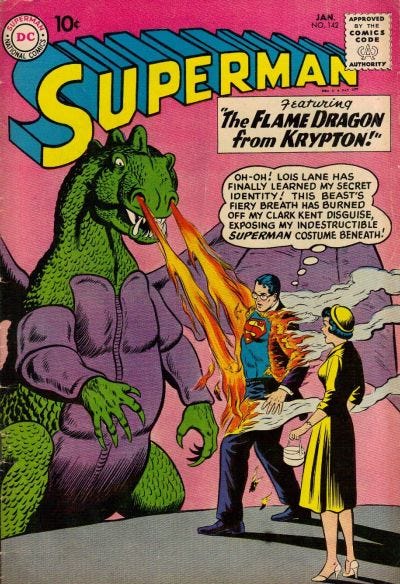
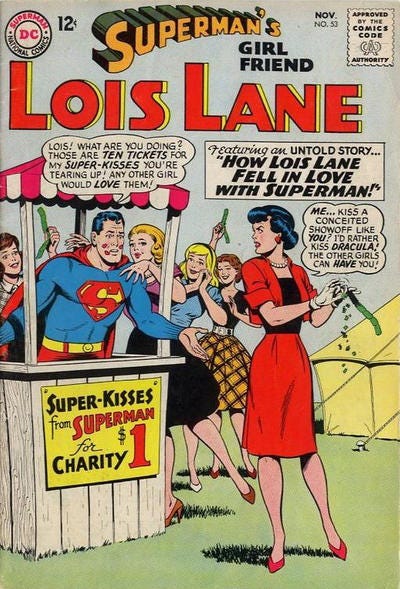
But there is also one strangely tone-poemy moment. The moose hums. Like a Dwerg or a whale (see Crazy in Poughkeepsie (#36 above), and perhaps in reference to the practice of latihan (see Java Jack (#19 above)), this humming has something akin to a mystical power.27 The text merely alludes to “an unseasonable thaw” but the illustration suggests that Mr. Breton and the moose experience some kind of vision (of the Buddha-field?).
One of my favorite things about Blue Moose is the pair of folk rhymes at the beginning, with the word moose substituted in—a nice, surreal way to ease into the book. This is the first DMP book to get a sequel, a sequel that (as anyone who reads these in order already knows) is even crazier and better. It’s also the first to feature an ending that bathotically (and therefore humorously) subverts both expectation and cliché (the departure motif). Also subversive is the fact that the illustrations are black and white, so the allegedly blue moose appears to be of soberer hue.
•60 The Artsy-Smartsy Club (2005 middle-grade novel illustrated by Jill Pinkwater)
[The three friends from Looking for Bobowicz learn about art to enter a sidewalk-chalk contest.]
Twenty-seven years after the much beloved Hoboken Chicken Emergency (#46), DMP returned to the scene of the crime, so to speak, with a sequel, Looking for Bobowicz; I found it dissatisfying, and you can locate it down near the bottom of this list (#100). But The Artsy-Smartsy Club is something else. It has both the lowest stakes and the highest stakes of any DMP novel. It’s about three kids learning to love art, by which I mean (because they learned to love literature in the previous volume) the visual arts. Only in Bushman Lives! (#8) is the conversion to art this overt, and in Bushman Lives! the story is about a lot of other things, too. Not Artsy-Smartsy Club! It’s just art and all about art.
That’s what I mean by low stakes. Who will win a sidewalk chalking contest is low stakes. But art, especially in the DMPverse, is the highest stakes there is. A-SC has no moment of transcendence, no assertion of why art might be valuable, different, special, sacred, or what have you. The kids in the club are converted…by art. Just by art: Van Gogh and El Greco and St. Francis in the desert.
There are three members of the club (and several older esthetes of various degrees of trustworthiness); although the three produce artwork of differing kinds and emphases, it is an unusual feature of the book that their reactions to art are unanimous. I personally have never visited an art museum with three people who could agree on anything. Perhaps this is thematic; perhaps DMP believes (or wants us to believe?) that before Immortal Art all fellows of sense bow down alike.
But as much as the book is about experiencing art, the book is even more about making it (the two activities are often linked for DMP). There are several adults here who out and out give instruction. “People talk about sudden inspiration, and talent, and genius—but art is mostly about hard mental work,” says one, and everyone agrees with him, at times quite explicitly—and he’s the bad guy! All the good advice about working on perception to improve art (a very DMP sentiment) is given by a cry-baby sneak! I’m not sure if this is DMP magnanimously indicating that even rotten people can understand how to make art, or if it’s just another aspect of the book’s curious unanimity.
Artsy-Smarty Club, like Looking for Bobowicz, exists in a somewhat strange liminal space, the long decade between two major works (Robert Nifkin (#4) and The Neddiad (#15)). The books are pitched for a younger audience than these bookending works (or perhaps than any other DMP book of their length). If part of the fun of DMP books is finding curious connections between them, these two volumes offered a welcome oasis in this decade of drought. A small example: Davis Davisdavis, one of two (as mentioned before) DMP doppelgangers for the real-life art dealer David Davis, is revealed to be scientific eater who survives on eggplants and Dr. Pedwee’s Grape Soda—which is interesting because in The Yggyssey (#81) we learn that Dr. Pedwee28 himself is a fruitopath who proclaims the magic of the avocado. Eggplant to avocado is truly the DMP spectrum of vegetables (which is why, as we shall see, the Big Bob books don’t work better (#97), even if William Lloyd Floyd (#1) and Vincent Arrigato (#35) do own stone and brass potatoes from the moon and Mars respectively).
Henfanger, Florida, hometown (you will recall) of Anthony DePalma, is also where Arthur Bobowicz’s mother has fled to. She lives there under an assumed name.
Somewhat more challenging to rationalize: In Slaves of Spiegel (#48), Tesev Noskecnil is the name of a humanoid slothoform from the planet Horthy who competes against and resembles Steve Nickelson. In Artsy-Smarty Club, Tesev Noskecnil is “a famous walrus hunter from the earliest days of Hoboken” who has a park in Hoboken, Tesev Noskecnil Park, named after him. But Steve Nickelson is a lifelong resident of Hoboken! He appears in Looking for Bobowicz! When he met Tesev Noskecnil on Spiegel, how did he not exclaim, “Fantastic coincidence! Your name graces a park half a mile [or so; it has to be less than a mile; Hoboken is famously a mile square] from where I live!”?
It is perhaps significant, although I have not yet figured out how, in light of Hoboken’s newly revealed walrus-hunting past, that Artsy-Smartsy narrator Nick Itch hails from a town whose school mascot in the Fighting Walruses. Unlike, say, chickens or lizards, walruses are not so associated with DMP; although they are not completely absent from his older books it is only in the twenty-first century that they really start popping up: with Tesev Noskecnil and Nick Itch, as the two protagonists of Cone Kong (#90), and, huge and prehistoric, in Vincent Arrigato’s cabinet of wonders.
•61 The Werewolf Club Meets the Hound of the Basketballs (2001 children’s book illustrated by Jill Pinkwater)
[The Werewolf Club visits the Basketball family in upstate New York and faces the curse of the hound.]
At some point in his life upstate, DMP must have eaten a jitterbug and it made a big impression. Jitterbugs first appear in the DMP canon back in Baconburg Horror, but they start appearing more in the twenty-first century: in two Werewolf Club books, in Adventures of a Cat-Whiskered Girl, in Crazy in Poughkeepsie. Hound of the Basketballs features one of those celebrations of the jitterbug, lovingly detailing how to make one.
But most of the book is, of course, a play off The Hound of the Baskervilles (although Sherlock Holmes himself does not show up until the next volume). Glucinda Basketball is reminiscent of a more strictly gothic heroine—Madeline Usher, perhaps. Information about the hound comes from a collection of old songs, poems, and manuscript histories that readers and characters must sort out for themselves. The answer is bathos, of course, but a pleasantly humorous bathos. The Werewolf Club books, with one exception perhaps, have an improvisational style, underlined by the fact that the plot of this one is ushered in by Mr. Talbot innocently proposing, hey, let’s go visit some relatives.
Compare Local W. Yokel’s comment on Basketball Hall (“Arrr. Some say the Hall be an evil place”) with the Mad Guru’s statement about the West Kangaroo Park bus in Alan Mendelsohn (“Arrr…some speak of her as an evil bus”) (#1). Alan Mendelsohn alleges the ultimate source for the text is Moby Dick, but I can’t find anything relevant there.
•62 Bad Bears in the Big City (2003 picture book illustrated by Jill Pinkwater)
[Two bad bears adapt to their lives in a New Jersey zoo.]
I think the remaining three bad bears books are pretty similar in quality, so I just lumped them all together. Bad Bears in the Big City is the second book in the series, and it is here, and not in the idiosyncratic first book, that the usual bad bears formula appears.
Roy says, “I heard you were kicked out of Yellowtooth for stealing muffins.”
“We were kicked out of Yellowtooth for stealing lots of muffins,” Muktuk says.
Irving and Muktuk talk a lot. This is the dialog book in the style pioneered in Guys from Space (#17) (but with longer paragraphs). Pages of some of the bad bears books can read almost like a play. This worked best in Guys from Space, where the constant deadpan discussion of marvelous events added to the oneiric atmosphere, but it is still used to good comic effect in these bad bears books.
And our heroes are themselves great comic characters, quick to self-pity, quick to self-destruct. (In this book) disguised as school children, Irving and Muktuk tour a blueberry muffin factory. At the end of the tour, the children are encouraged to eat all the muffins they can. “It is at this point that Irving and Muktuk are discovered to be bears.” As fine an example of understatement as you’re likely to find.
And while I’m talking about DMP’s prose—I haven’t really harped on this till now, but I hope it’s at least implicit that DMP has a good prose style. This is most obvious in the service of a joke, but Big City offers an example I’ll isolate here:
Roy goes to his locker. He puts on his hat. He puts on his coat, swipes his timecard through the slot under the big clock, and goes to wait for the bus.
I think the natural instinct of a writer would be to break up that sequence of events differently, probably Roy goes to his locker and puts on his hat and coat. He swipes his timecard through the slot under the big clock, and goes to wait for the bus. This ruins the rhythm of the sentence, which in its original form starts slow and speeds up as Roy gets closer to leaving work (as is sensible). There are several ways of splitting this information up, but just try it. Every other sequence is worse. DMP got it right.
This is a small and ultimately unimportant paragraph we’re talking about, but I hope it shows how DMP unostentatiously chooses the right way to organize his sentences.
•63 Bad Bears and a Bunny (2005 picture book illustrated by Jill Pinkwater)
[A bunny terrorizes the bears who had sought to bully it.]
Not for the last time in the DMP canon (cf. #91), a bear mistakes a bunny for a very small bear. An odd motif to return to.
Note that Roy is watching Big Bear on TV, one of four (!)29 appearances of that beatnik star.
•64 Bad Bears Go Visiting (2007 picture book illustrated by Jill Pinkwater)
[Seeking to be sociable, the bad bears nightmarishly invade and destroy a home.]
When the bad bears get taken into custody, they ride in a zoo bus that evokes, if only vaguely, the “special zoo bus” Victor takes, with the lizard painted on the side.30 This is, of course, the same bus the zoo sent to pick them up from the airport. The bad bear series ends, fittingly, the same way its first book ended: with our heroes quite literally in shackles.
•65 Bear’s Picture (1972 picture book, sometimes illustrated by D.B. Johnson)
[Two art critics tell a bear not to paint; he paints anyway.]
Bear’s Picture is one of DMP’s earliest books. It was reissued in 2008 with new illustrations by D.B. Johnson (and slightly modified text)…
…and the new version can get a little dark—it’s the story of canting critics who are murdered by a bear. I suppose there’s another way to interpret things, but this, my five-year old, assures me, is the emmis: The critics have drowned and are now dead. It’s a neat inversion or extension of the story of the prophet Elisha (2 Kings 2:24): Mock Elisha and you get a bear; mock a bear and see what you get!
In the essay “Whose Little Jackson Pollack Are You?” in Fish Whistle (#6), DMP reports “an actual dialogue [he] overheard between two of the kids” he was teaching art to. The dialog starts:
“What’s that you’re painting?”
No reply.
“Is it a clown? It looks like a clown.”
“No, it’s not a clown.”
“Is it a butterfly? It could be a butterfly.”
“It’s not a butterfly.”
[Establish that it doesn’t look like what it is purported to be.]
“It doesn’t have to. It’s my picture.”
You will note that this dialog is not word for word but almost word for word the text of Bear’s Picture.
And at that point the critics drown.
At least in the Johnson version. In the original, the critics (literally inhuman) simply wander away.
•66 The Werewolf Club Meets Dorkula (2001 children’s book illustrated by Jill Pinkwater)
[The Werewolf Club must thwart a vegetarian vampire with the help of a new member: Henry, Count Dorkula.]
Nobody saw this coming, but Noshferatu, the bagel vampire from Moospire (#32), is back, retconned as a fruitpire. Something like the muffin shortage from Muffin Fiend (#23) is now a fruit shortage. And the Werewolf Club has a new member, a fruitpire again. Remember that the Wempires (#22) avoid drinking blood and announce, through song, how much they like bananas…but fruitpires are something different. The titular Dorkula is heavily suggested at the beginning of the book to be one of DMP’s big-talking fakes, with his assertion that he could turn into a bat right now and just chooses not to; but this proves to be a red herring, and he’s a bat by book’s end.
This, the third Werewolf Club book, is the first to lack chapter titles, which, as those titles were in the first two books gauchely formatted as the same font and point size as the main text, just all caps…I guess from a design standpoint, they won’t be missed.
Minor character Hugo Van Helsing is one of several Van Helsings to appear in the DMP canon (Wempires and Vampires of Blinsh (#28) contain others); this makes sense because Van Helsing combines two separate DMP obsessions: Dutch names and Dracula references.
The loose, loopy way DMP was writing books in 2001 in indicated by the fact that at one point the first-person narrative pauses and a chapter is presented, like a play, in dialog with speaker tags. The plotting is loose, too, with the Werewolf Club running around for the climax, but everything happening “off-camera” and between new characters.
In Uncle Boris in the Yukon, (#82) DMP quotes Jill Pinkwater as saying that this book is “not exactly Noël Coward.” It’s also not exactly Lunchroom of Doom (#42), but it’s fine.
•67 Dancing Larry (2006 picture book illustrated by Jill Pinkwater)
[A civilized polar bear, denied the opportunity to practice ballet, creates his own dance troupe.]
The penultimate Larry book (of six), Dancing Larry came out seven years after its predecessor—a much larger gap than any previous. It starts out (presumably therefore) with a summary of the situation as established in earlier books—that Larry is a wild polar bear who works as a lifeguard at a hotel in Bayonne, New Jersey, and has friends and relatives in a nearby zoo. This is the first, and only, book narrated by Larry himself. It is my favorite of the Larry books.
You may recall that DMP’s second book, Bear’s Picture (#65), featured art critics insisting bears cannot paint, and Dancing Larry is in some ways a more complicated return to the theme. I mean “more complicated” because in Bear’s Picture it’s unclear how the bear acquired paint or the requisite skill at painting; where he had laid out his canvas; why art critics happened to be wandering by. If you demand answers to all these inclarities in your picture books, you’ll be satisfied with Dancing Larry. Madame Swodoba proclaims that bears should not dance because Larry starts to dance in her dancing studio. Anyone who remembers what happens when Irving and Muktuk try playing volleyball in the Beachballs’ living room (Bad Bears Go Visiting (#64)) will sympathize with Madame Swodoba. Everything falls into place
I don’t think I have this particular mental problem, and I did not complain about illogical aspects of Bear’s Picture; but I am satisfied with Dancing Larry anyway. Like Bear’s Picture it ends with a bear, in defiance of the critics, creating art. In this case, the art is dance, an art form I know even less about than painting. Like a whirling dervish, DMP would use dance as a go-to metaphor for transcendence in the years following Dancing Larry, but it happens here first, and maybe it’s not even a metaphor for anything; it’s just (as Flaubert would say) a dancing bear.
But what’s wonderful about it is that the book ends, wordlessly, in the middle of the dance. It’s just Larry and his friends dancing; there’s clearly a narrative (to the ballet) going on, although I don’t know if I understand it. On the copyright page, which comes in the back, there is a brief coda, a smaller wordless picture of the dancers taking a bow.
If you watch a movie about a dancer (or any kind of art) you can be sure to hear a voiceover explaining why what you are watching is beautiful. Not for one moment will you be allowed to look at art for yourself.
But here the dance just exists. I don’t know if it’s good art—dance is hard to judge from static images and I’m not qualified to judge it anyway; perhaps any time several polar bears dance in unison it should be considered impressive. But the art is permitted to exist right here with me, naked and unmediated, or as unmediated as a marker drawing can be. This is wonderful.
•68 Aunt Lulu (1988 picture book)
[An Alaskan librarian brings her many dogs to New Jersey.]
This is my go-to example of a DMP picture book that asserts a situation rather than tells a story. Aunt Lulu lives in Parsippany, New Jersey, not too close to an unnamed narrator. She used to live in Alaska, near a bunch of miners (three of whom were former dog rustlers from The Magic Moscow (#58)). These are two situations, and the progress from one situation to the next, which some might call a plot, is just Lulu writing a letter.
This is not even a criticism, because DMP excels at creating situations! That’s why the settings of his books are so good. I want to see a librarian drive a dogsled pulled by fourteen huskies down a New Jersey highway, past Ferret World and Onion Giant, and by gum that’s what I’m going to get. That’s the whole book.
•69 The Picture of Morty and Ray (2003 picture book illustrated by Jack E. Davis)
[Inspired by The Picture of Dorian Gray, Morty and Ray attempt to make their own pictures ugly through nonstop vice.]
DMP is often nihilistic when it comes to plotting or narrative, but Morty and Ray is perhaps unique in the sense that it operates in a moral vacuum. It is faithful to Oscar Wilde’s dictum that books are neither moral or immoral. Oscar Wilde is the ultimate source for this story, of course (in addition to providing a flattering pull quote, a bit of fraud that is thematically apposite for an amoral book), although, as with most of DMP’s horror-themed picture books, the real source is not the book but a movie adaptation.
Morty and Ray, like Dorian Gray himself, become bad for purely esthetic reasons. While Gray reads J.-K. Huysmans, Morty and Roy watch a movie adaptation of Dorian Gray; but the result is the same.
Having created the most convention work of art possible— a portrait—M&R turn to their true art, which is modifying the portrait without touching it by performing acts of evil. The evil is mostly fairly mild, like sticking their (clothed) butts out a bus window, but the boys are cruel as well. The cruelty is bad, and they are legitimately cruel. DeQuincy considered murder “as one of the fine arts,” but not even he ever considered that murder might be wielded like a paint brush.
Genuinely puzzled by the idea they might be hurting anyone—for they are not malicious, they are artists—Morty and Ray only repent when they find their art descending too far into the grotesque. Fortunately de gustibus non est disputandum and they locate a critic with a more grotesque-friendly esthetic. There is no moral. There can be no moral.
•70 Spaceburger: A Kevin Spoon and Mason Mintz Story (1993 picture book)
[Two boys walk a long way to attend the grand opening of a futuristic burger joint.]
Spaceburger is a sequel to Doodle Flute (#75), although it’s hard to understand why, as the two books are thematically, tonally, and stylistically dissimilar. One book is first person, the other third person. Spaceburger must have about eight times as many words (I’m estimating) as Doodle Flute, in the same number of pages. Nevertheless, there you have it: Mason Mintz returns, and he wants burgers.
I’m sure this theme starts in Last Guru (#29) somewhere, but I associate it more with the description of the Garden of Earthly Bliss Drive-in and Pizzeria in Snarkout Boys and the Baconburg Horror (#30)—a lengthy and over-the-top description of a marvelous place. Whale Heaven in Crazy in Poughkeepsie (#36) is another example, and also, of course, Spaceburger.
Despite the assertion right there in the subtitle, Spaceburger is hardly even a story. It’s not really the tone poem some of DMP’s picture books are. It’s almost like Vampires of Blinsh (#28), except viewed close up (as opposed to from ten thousand miles). It’s just a description of the world’s greatest burger place, if they world’s greatest burger place served mediocre burgers. When it gestures vaguely towards a story, Spaceburger most closely resembles a quest narrative, like Worms of Kukumlima (#9) (or, again, Crazy in P.). The walk to Exitville is interminable, but also so pleasant that (Kevin Spoon reports): “I forgot to think about the Spaceburger while we walked.” Only then does Spaceburger heave into view.
Most of all, though, Spaceburger is just joyous. Two kids walk a long way to eat a burger, singing, as kids will, a dumb fun song, and the place they eat in is amazing. “We both checked excellent, and underlined it.”
•71 Uncle Melvin (1989 picture book)
[Charles’s Uncle Melvin splits his time between living in the Looney Bin (his term) and puttering around Charles’s house.]
I get the feeling that DMP has a reputation for writing about crazy people, and perhaps that reputation is merited. G. Whillikers (#9) and Flipping Hades Terwilliger (#7 & 30) and Professor Tag (#26) are all quite explicitly mad, and it’s not hard to think of characters who may not know they’re crazy but quite obviously are. Well, for whatever reason, DMP decided to write a book about a person who is crazy, but in a real-world way. Mad scientists aren’t really crazy, you know. Uncle Melvin, though—he’s crazy.
This is the quietest book DMP ever wrote, as well as the most realistic (and I’m including his autobiographical essays is that assessment). Unlike other “real-world” books like Magic Moscow (#58) or Jolly Roger (#49), there is no wackiness in the world. The world is not zany, though Uncle Melvin is. DMP (usually a bomb-throwing anarchist) seems to be approaching his subject with respect, perhaps for the first time since Bear’s Picture (#65). It might be unbearably afterschool-specially if it weren’t so well done.
I claimed (above) that The Blue Thing (#47) is the tone poemiest of DMP’s tone poems, but Uncle Melvin is second place. As in Pickle Creature (#27), the entire book is a setup for the final page (which is also, in this case, depicted on the book’s cover): that quiet, realistic, but almost miraculous moment.
Note: Every proper name appearing in this book also appears in Aunt Lulu (#68).
•72 Mush, a Dog from Space (1995 children’s book)
[A young girl in need of a caretaker finds a marvelous dog, ostensibly from space, who’ll take the role.]
Mush is the first DMP book to have a female narrator; it’s probably the only DMP book of the twentieth century to pass the Bechdel test. It reads like a rough draft of Jules, Penny and the Rooster (#35), or at least for a small part of that book. After her babysitter quits by letter (just like Aunt Lulu (#68)), Kelly Mangiaro gets to spend her days learning three of the most important skills for a DMP character: how to make food, how to bond with a dog, and how to perceive things. The initial thing she perceives is the variety of smells in the woods, making Kelly the first DMP character looking to make the rural turn (so common, as we’ve seen, after The Neddiad (#15)).31
Mush keeps promising to tell how a dog from space ended up on Earth, but naturally never does. Mush is much less of a fraud than, say, the magic goose, but one wonders, despite her telepathic powers and cutlery skills, whether Mush isn’t having us on.
Of course, in the sequel (#52), Mush lays the whole story out, so that should allay my suspicions. But, as a raccoon says to her at the time: “I believe every word you say…NOT!”
•73 The Werewolf Club Meets Oliver Twit (2002 children’s book illustrated by Jill Pinkwater)
[The Werewolf Club accidentally gets stuck in 1890 London, where they help fight crime and seek to return home.]
Borgel (#11) claims to be traveling through time as well as space, and several characters (Molly, Victor, etc.) implicitly change eras, but the only tradition time travel in the DMP canon outside the case of Deadly Eric comes in this celebration of Victorian literature. The time machine of H.G. Wells (travestied as H.G. Talbot) lets the Werewolf Club team up with Oliver Twist (travestied as Oliver Twit) and Sherlock Holmes (travestied, for once, not at all) to catch Jack the Ripper (travestied as Jack the Schlepper, a jewel thief). In a modification of the terminology from Borgel, time and space are still time and space, but (physicists, correct me if I’m wrong about this) the other is called the in-between.
—Wait! wait! actually Norb (#12) is filled with ever so much time travel, I just almost forgot to mention it because Norb is a comic strip and comic strip time travel feels different. Also, Norb featured a Sherlock Holmes appearance a full decade before Oliver Twit—
This is the book that reveals that Prince Albert was a werewolf, which is somewhat strange because Snarkout Boys and the Baconburg Horror (#30) claims his wife, Queen Victoria, was the werewolf of the family. Both statements could be true, of course. In fact, perhaps it would be unusual if they were not.
With five members (and this book introduces a sixth) plus Mr. Talbot, the Werewolf Club and their tales can get crowded; indeed, Meets Oliver Twit is a crowded book. Perhaps too much goes on, but it’s fun regardless.
After five Werewolf Club books, the only thing I have left to say is that some editions of each book read on the cover “by Daniel and Jill Pinkwater” and some read “Daniel Pinkwater / illustrated by Jill Pinkwater” and I don’t know how to tell them apart or why.
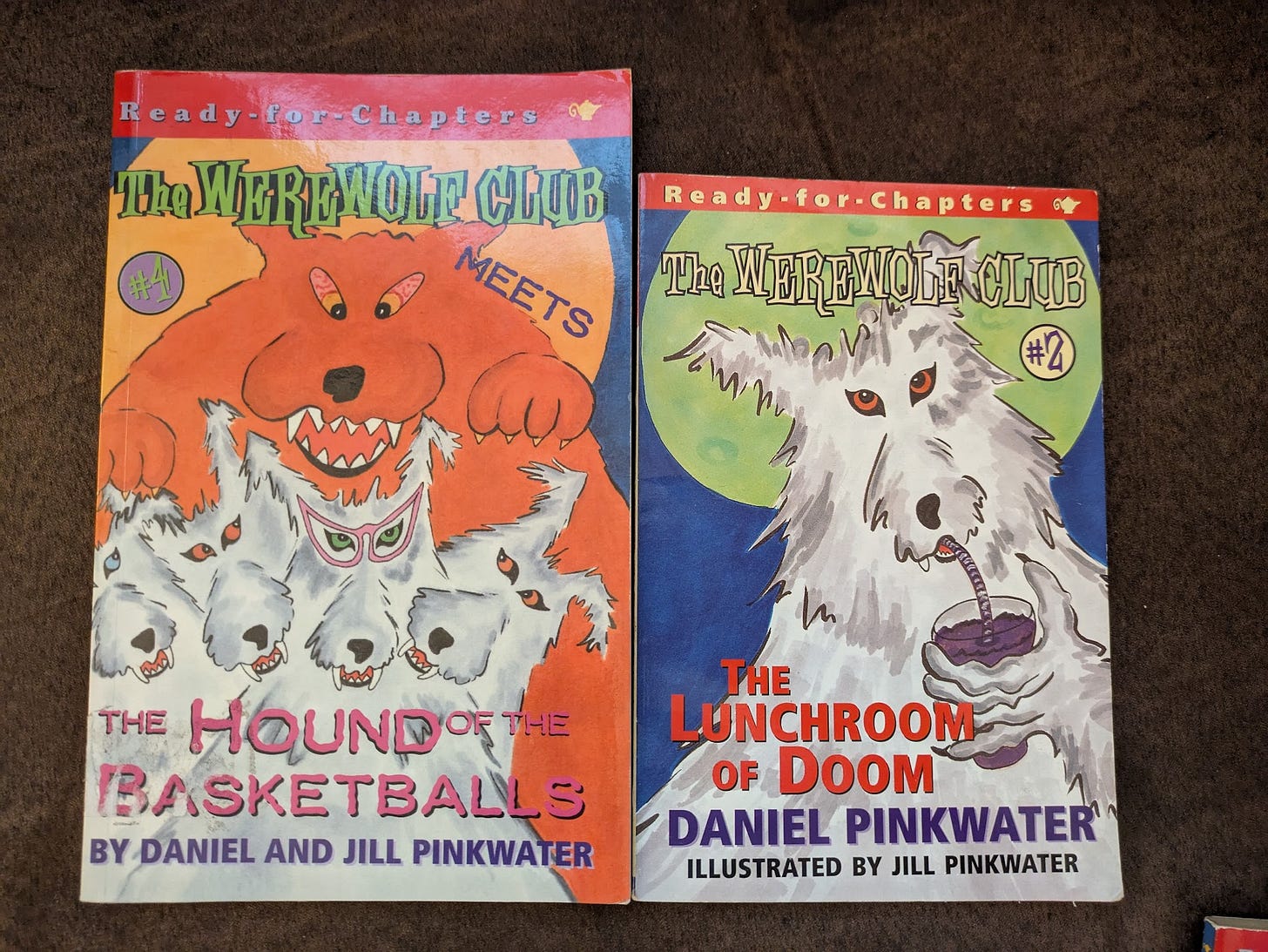
•74 Around Fred’s Bed (1976 picture book illustrated by Robert Mertens)
[Fred can’t sleep for fear of the monsters that cluster around his bed; twist ending.]
This early picture book is perhaps the only DMP book that doesn’t get better with rereading. It’s got to be his shortest book, at under one hundred words (I counted 92, but I’m not the best at counting). It’s simple and fun, and the cover is great. I’m surprised it didn’t get more lasting mainstream love.
“But the Devil whoops, as he whooped of old: ‘It’s clever, but is it Art?’” We’re only interested in art here. This book is fine, but it ranks where it ranks because I am an angry old man judging books for children.
Fred resembles Pogo, doesn’t he? I don’t think Robert Mertens ever illustrated another book, but it’s hard to tell because apparently the world’s most famous German herpetologist (!) is named Robert Mertens, and the noise of his innumerable books keeps disrupting the signal.
The great Shel Silverstein wrote a poem—“Frightened,” included in the posthumous collection Every Thing On It—that is suspiciously apposite. The first two lines are:
“There are kids underneath my bed,”
Cried little baby monster Fred.
•75 Doodle Flute (1991 picture book)
[Kevin Spoon seeks to own and learns to share a unique kazoo-like instrument.]
I go back and forth on Doodle Flute. It does not feel like a 1991 book; it feels like a 1971 book. It’s probably too on-point.
Like Guys from Space (#17), this book has prose organized into such short paragraphs that it is almost verse. The opening page, to wit:
Kevin Spoon had a nice life.
He had nice parents.
He had a nice house.
He had his own room.
He had his own bathroom.
He had his own TV.
He had his own VCR.
He had his own stereo.
He had his own computer.
[Etc.]
Obviously that’s not 1971. But Mason Mintz (possessor of the titular doodle flute) is a man out of time. The fashion pendulum may, in 1991, have been swinging back towards his beatnik slovenliness, but surely his parents’ pumpkin patch, his garishly retro plaid hat, and his propensity for sharing are not a product of the ’90s. I imagine him talking like Fleetwood from The Brady Kids (1972–’73). He’s a bit like a watered-down version of Alan Mendelsohn (#1), only Alan, organically living in the ’70s, didn’t have to try so hard to indicate he was trapped there.
Unusually, although not uniquely, this book is in third person while its sequel is in first.
•76 Second-Grade Ape (1998 children’s book illustrated by Jill Pinkwater)
[Flash Fleetwood encounters and adopts a wild gorilla that he then brings to school.]
Why does Second-Grade Ape get a hyphen and Second Grade Werewolf (#55) doesn’t? Don’t ask me, man. I didn’t do it.
Anyway, my problem with Second-Grade Ape is that the best parts are the parts without the ape. The single funniest gag involves Mr. Fleetwood punishing chickens. The most charming bit involves the old-timey–gangster nicknames Flash Fleetwood and Bullets Birkenstock come up with for each other. I guess the ape is fine, when he shows up.
The names Fleetwood and Birkenstock indicate that the characters’ families were, in 1998, among the last surviving hippies in America. I’d compared Mason Mintz to a different Fleetwood, above (#75), before I knew that the randomizing influence of the ranking system would put these two entries next to each other. Presumably the Mintzes would get along with these guys.
Mrs. Fleetwood’s statement, “He is twenty times bigger than a cat,” is not the kind of thing you should say to Lunchbox Louie (from Wuggie Norple (#34)). Am I right? Am I right?
•77 Beautiful Yetta the Yiddish Chicken (2010 picture book illustrated by Jill Pinkwater)
[The titular Yiddish chicken escapes her poultry destiny and begins a new life on the streets of Brooklyn.]
Beautiful Yetta is a slight book, its few words made fewer by the fact that they alternate between three different languages (four if you count Brooklynese), and so there is the extra space for translation. We have, as in Aunt Lulu (#68), an unusual situation being asserted, with the novelty that the book offers an origin story. It feels weird to say that little happens in the book, when actually everything happens in the book, at least from Yetta’s POV—she frees herself (from the jaws of certain death), adventures a bit, and finds her place. This is a classic story! But all the weight of the book falls, imbalancingly, on the final four pages. Here is the crux of the matter—a chicken comes to lead a flock of parrots. The book tells how it happens, sure, and at greater length than Lulu, but the how hardly matters. Yetta’s wanderings through Brooklyn hardly matter. Unlike with most books that superficially resemble this structure (you know, The Odyssey et seq.), few readers of Yetta will remember the pages and adventures before the final assertion, while every reader will remember that assertion well. What is Yetta about? The ready answer is that it’s about a chicken who leads parrots. No one’s ever going to say that it’s about how a chicken came to lead parrots (although by page count it appears that’s what the book is about).
This structure (which I hope I’ve made clear) makes the book a curious read. But ultimately how much you like the book will probably depend on how badly you want to see a chicken ruling parrots (or perhaps how diverting you find the sight of birds chatting in Yiddish and Spanish).
The front flap of my edition comes with an injunction “to treat newcomers with respect and compassion” backed by the authority of the Torah. I know I’ve laid a groundwork for hating on didacticism, but the truth is if any book is a thousand years old or more I will absolutely listen to it telling me what to do. The “Havamal” or the Tirukkural or the Torah are all welcome to didact away! The back flap keeps going, though, and now its modern day people explicating Yetta’s values. Dial it back, guys! You’re too young!
•78 Beautiful Yetta’s Hanukkah Kitten (2014 picture book illustrated by Jill Pinkwater)
[Yetta rescues a kitten on Hanuhhah.]
I put both Yetta books together because, honestly, I don’t know what to do with them.. Jill Pinkwater’s art does more of the heavy lifting than is the norm in one of the Pinkwater/Pinkwater collaborations. The first quarter of this sequel (by page count) is spent summarizing the events and situation from Beautiful Yetta the Yiddish Chicken (#77), a book that, a couple of paragraphs ago, I went and said nothing happened in. The rest of this book is one small incident, an incident so small one might barely notice it had not it been given weight and emphasis by being made the subject of a book. Which book is in some ways more like a painting than anything else, one of those paintings of a quotidian moment in the life of a seventeenth-century burgher that is frozen, immortalized, and engrandized by oil paint. Except Yetta’s trilingual four-species entente is far from quotidian—it just feels that way because the event is so quiet, and treated so gently.
This book takes place (as the title implies on Hanukkah, “when the humans are in a good mood.” Compare with animals’ opinion of Christmas in Wolf Christmas (#80), a time when humans are “quite peaceful.” Can Potato Claus’s ersatz holiday compete (#88)? We should ask an animal.
•79 The Phantom of the Lunch Wagon (1992 picture book)
[Chris Kevin-Keith seeks to reopen a popular but haunted lunch wagon.]
Here we have the story of a haunted restaurant refurbished and rehaunted—by a phantom! Annnnd…
Look, maybe I’m thinking about this too hard, but the plot falls apart for me on a basic level of sense. If the titular phantom of the lunch wagon (serious spoiler here) is a kitten…how does that explain the phantom of the previous lunch wagon, years before? Kittens don’t stay kittens that long!
Or is this some sort of double-secret reverse-trick ending in which an immortal, unaging supernatural kitten is the real phantom? Like the phantom is indeed a phantom? Is that the point?
But as old Mr. Wiggers would say, “No one listens to old Mr. Wiggers.” A good book if you can get your mind over the plot hump. My daughter’s favorite DMP book when she was very young.
•80 Wolf Christmas (1998 picture book illustrated by Jill Pinkwater)
[Wolves spy on humans on Christmas.]
First off, Jill Pinkwater is the best at drawing wolves. Someone probably should have taken that into account before getting her to spend a decade drawing polar bears. Her polar bears are great, but her wolves are the pure quill.
Wolf Christmas, which features more wolves than any other book Jill Pinkwater illustrated [citation needed], is a classic DMP tone poem picture book, the kind I keep harping on. The entire book is wolves running through the night, listening to humans sing Christmas carols, and (this is the punctum, the moment the poem is working towards) themselves singing. Look how DMP sets up this, the climactic moment, in the final sentence of the book: “Then we threw back our heads and sitting on the hillside above the place where the humans live, we wolves sang, too.” The wolves’ two actions are separated by several adverbial phrases and clauses, delaying the moment when the wolves will also sing, so when it hits it hits all the harder.
Uncle Louis is another in the litany of eccentric uncles (and aunts): Boris (#1), Mel (#37), Borgel (#11), Lulu (#68), Melvin (#71), Gertrude (#35)…only he’s a wolf, which is, naturally different. When DMP reads this piece on NPR he pronounces Louis’s name the French way, like Lunchbox Louie (#34). I guess that makes sense, but it hadn’t occurred to me until I heard it.
•81 The Yggyssey: How Iggy Wondered What Happened to All the Ghosts, Found Out Where They Went, and Went There (2009 middle-grade novel illustrated by Calef Brown)
[Iggy follows a bunch of ghosts across dimensions to a ghostly party.]
Partway through The Yggysey our heroes end up in a real pickle. Melvin the shaman could save them but is reluctant to, because if he does they will have no heroes’ journey, no personal growth, no everything a book is ostensibly about. Should he save them? “Do it! Do it!” they demand, and reluctantly he does it, and indeed they undergo no personal growth, they achieve no “deep knowledge” of themselves.
This is a funny gag, and it reminds us that in a Dada world stories mean nothing. On the other hand, The Yggyssey means nothing. This is an entire book about the meaningless silly things you might encounter on the way to a party. It’s fun and the party’s fun, but is it a book? If it is a book, it’s a book so meaningless that it goes back in time and erases the meaning of The Neddiad (#15)! And then the climactic appearance of Shmenda is a huge middle finger to the concept of narrative, which is punk rock and all, but still…I bought the book, you know?
Iggy’s main growth is losing the personality (generic DMP tough girl) she had in The Neddiad and becoming indistinguishable from the usual DMP narrator. Perhaps the most interesting part of the book is the transformation of Neddie, who changes from his previous (DMP-narrator) personality to something melancholic or tranquil.
After Melvin saves the kids from the need to participate in a real spiritual quest, he says, “Maybe it was for the best,” because the next trial would have involved being attacked by volcanos. This, too, is a funny gag, and Yggyssey is full of funny gags, which is why it doesn’t rank lower.
I may be criticizing this book for the same things I praised in Ducks! (#13), but I guess that’s the difference between reading thirty pages of unstory and 250 pages of unstory.
•82 Uncle Boris in the Yukon and Other Shaggy Dog Stories (2001 memoir illustrated by Jill Pinkwater)
[More essays, all dog related.]
I love dogs, but DMP loves dogs more than I do. Dogs are all over his books, often as major (Fafnir (#11), Lhasa (#36), Penny (#35)) or main (Jolly Roger (#49), Mush (#72 & 52), Max (#44)) characters. By my count he has dedicated no fewer than six books to dogs.32 Uncle Boris in the Yukon is a memoir of DMP’s life as seen through the lens of the dogs (and occasionally other pets) he has known. Maybe if I liked dogs even more than I do I would like this book more than I do.
The book starts with a story about DMP’s Uncle Boris, a familiar character from Fish Whistle (#6) and even Alan Mendelsohn, the Boy from Mars (#1). This story is unique in the sense that it is overtly, even gleefully, false. It didn’t happen. The rest of the book is perhaps sometimes hyperbolic (for comedy), and of course could be a hoaxing fiction for all I know, but is at least ostensibly true. There is reason to believe (we’ll get to why) much of it is at least broadly true. And yet there is that first chapter, calling everything into question. Imagine picking up a David Sedaris book and finding that the first chapter is about Hugh’s experiences as an astronaut. How do you read the rest of that book?
But that’s a small objection—just a curiosity, really, not a problem at all. The real problem I have with the book is that parts of it are cut and pasted from two earlier books. It’s not just that the book contains some of the same autobiographical anecdotes as Fish Whistle and Chicago Days/Hoboken Nights (#33), it’s that entire paragraphs are copied word for word.
I still remember my bubbling wrath when I first read the book and discovered its dirty little secret. If Uncle Boris were a book of essays, and some of the essays were reprinted from a previous volume, that would be a mere annoyance, the way you feel when you buy a graphic novel and realize you already own several of the issues it contains. But instead, reader, I felt betrayed, the way I feel when I buy a comic book and realize the artist drew one panel and photocopied it six times to fill up a page. In retrospect, that reaction was too strong. I was young and poor and I bought the book in hardcover (twenty bones!). But I felt it, and it is hard for me to forget.
The two best lines in the whole book—
Only selling a dog already dead, or made of acrylic, would have been more of a coup.
He was better than average. He could read and write, and had never eaten a child of his own.
—are both from Fish Whistle.
The book brings up an additional challenge that is simultaneously confusing and emblematic of the DMP method. I’ll try to explain. These are, remember ostensibly true stories. They are stories that have been told elsewhere, also as true stories—which is evidence that they are actually true! There’s consistency!
But in Uncle Boris, DMP is doing something new. He’s naming names! For the first time his alma mater is not called St. Leon’s, but rather Bard College. Herman Hermann is now David Davis. These are real, verifiable, people and places. He gives the address on Hudson Street, Hoboken, where he and Jill Pinkwater used to live.
Unscrupulous dog breeder Larry Porketta from Fish Whistle (“he could read and write”) reappears (word for word, remember) as Franz Gussik. Wee Folks Residential Treatment Center from Fish Whistle reappears as Glade and Glen Boy’s Farm Residential School. I have no way of knowing if any of these names are real…but it is is strange to have someone tell two true stories with only the proper names changed. They cannot both be true! What is one to make of this? Especially if the details about Porketta are copied word-for-word with only the name changed in Gussik!
Of course, in a post-Cat-Whiskered world (#26), Porketta might stand revealed as Gussik from another dimension. Both stories can be true. Only my inability to enter state 26 keeps me from determining which story is true when and where and for whom.
Anyway, this book is probably better if you 1. haven’t read the Chicago Fish and Hoboken Whistle duology, 2. are not a petulant man who holds a grudge, or 3. like dogs even more than I do (and I like dogs a lot).
•83 Young Larry (1997 picture book illustrated by Jill Pinkwater)
[A polar bear ends up in New Jersey and becomes a lifeguard.]
I mentioned before that children’s book writers entropically tend towards creating (Little Monster; Fancy Nancy) a recurring character. He had had a couple of sequels and even a trilogy or two, but nevertheless in the main DMP heroically resisted this urge for a quarter century—and then along came Larry. Larry the polar bear. Larry is neither my favorite or least favorite DMP series. The art is always nice, because the big white shape of a polar bear creates a negative image of blankness in the middle of Jill Pinkwater’s background colors. With the exception of Dancing Larry (#67), which I quite like, most of the books blend together for me. I allowed them therefore to cluster here, and in chronological order.
The Larry series is somewhat unusual. Every even-numbered volume (At the Hotel Larry (#84), Ice Cream Larry (#86), and Sleepover Larry (#87)) is narrated in the first person by Mildred Frobisher, while every odd-numbered volume has a different narrator: The first book (Young Larry) is third-person omniscient, Mildred’s father narrates the third book (Bongo Larry (#85)), and as we’ve already seen Larry himself finally gets to narrate the fifth. The fragmentation of narrative that we’ve noted take root in Slaves of Spiegel (#48) and grow though Baconburg Horror (#30) and later books now spreads its canopy across an entire series.
I’m not sure how clear it was to readers in 1997 that Young Larry was launching a series, but I will say that the book makes less sense if you view it as a stand alone volume. It has a very weird arc. The opening pages are pretty standard nature-documentary fare, until Larry Rip-van-Winkles himself to Bayonne, New Jersey, where he becomes a lifeguard. Soon he saves a rich (ugh!) man who offers to buy a hotel at which Larry can lifeguard further. This being established, the book ends.
The structure is similar to something like Aunt Lulu (#68), where a situation (hotel polar bear lifeguard!) requires establishment. It’s weird enough that maybe the book would be better on its own, because the reader has stuff to ponder. Instead a sequel came out the same year…
[Footnote: Although in At the Hotel Larry Mildred still one of DMP’s nameless narrators, alongside whoever’s telling the stories of Devil in the Drain (#24), Guys from Space (#17), Aunt Lulu, and Yo-Yo Man (#101). ]
•84 At the Hotel Larry (1997 picture book illustrated by Jill Pinkwater)
[A polar bear works as a lifeguard at a hotel.]
In Hotel Larry we learn that the rich man (ugh), Martin Frobisher, has a family. Martin and his wife Semolina look like DMP and his wife Jill—that’s Jill doing the art, remember—and Semolina Frobisher will only grow more and more Jill-like as the series progresses. Perhaps the Larry books are the Pinkwaters’ alternate reality life, one in which they have a red-headed daughter and a hotel and a tame polar bear.
This book marks the first appearances of Irving and Muktuk, unnamed but distinguished by their shifty eyes. Consistently they will be referred to as Bears Number One and Three (Roy is Bear Number Two). This is, in fact, the way to distinguish a book in the Larry series from a book in the bad bears series—only in bad bears books do Irving and Muktuk have names.
(The trim size is also different.)33
On the copyright page, the coda of this book is an homage to Matisse’s The Dance, only with bears. For all I know these books are filled with clever swipes and homages to the fine arts and I’m just too pictorially illiterate to notice.
•85 Bongo Larry (1998 picture book illustrated by Jill Pinkwater)
[Larry the polar bear experiments with the counterculture.]
This is the one where Larry becomes a beatnik. He calls cops “square,” which is fairly mild, and plays the bongos like Marlon Brando. At one point he paints something that’s a dead ringer for the painting in Bear’s Picture (#65) (the original I mean), which itself looks a bit like it was visited by the seagull from The Big Orange Splot (#5).
Bongo Larry is narrated by Martin Frobisher, a character named (as befits a friend to polar bears) for an arctic explorer. (In Uncle Boris in the Yukon (#82), fictional Frobisher Junior College is mentioned as one of the few places to have done scientific study of Inuit dogs; just one of the places the nonfiction facade of that book cracks.) Martin emphasizes that he does not own Larry—they are merely friends—which is the kind of thing Mr. Breton would say in the Blue Moose books (#59, 50, & 32).
If you’re really worried about continuity, you might start wondering how it is that polar bears wandering the streets must be disguised as visiting human uncles to avoid worrying people, while bears can meanwhile have a whole underground bar scene of their own. Good thing I’m sane, and nothing like this worries me!
Larry’s beat poetry resembles Jonathan Quicksilver’s (from Baconburg Horror (#30)) but is not as good. Nevertheless, it is better than ~80% of beat poetry.
•86 Ice Cream Larry (1999 picture book illustrated by Jill Pinkwater)
[Larry becomes an ice cream spokesbear.]
The second book narrated by Mildred Frobisher, and the first one she narrates after being given a name. Mildred, incidentally, is one of the most commonly appearing names in the DMP canon: I count no fewer than nine characters named Mildred.34 I would try to rank DMP-character names in order of commonness, but this is somewhat difficult—there are seven different Melvins in DMP, but there’re also three Melvyns, Melvinge (of the Megaverse), and the town of Melvinville.35 How do you sum that? The winner would probably be William/Bill/Billy, which is boring. There are sixteen characters named Reynold, but fourteen of them are lizards, which probably shouldn’t count.
In any event, the thing I want to mention about Ice Cream Larry, a book where every character starts rich and gets richer, is that Larry is shows reading a volume by Herman Melville; a few pages later he quotes Herman Melville: “I would prefer not to,” he says, quoting Bartelby the Scrivener. But Bartelby the Scrivener is not the book he’s been reading!
Mildred also mentions that (like Martin) she does not own Larry. They’re pals. And indeed, Larry seems like a nice guy, but the truth is I find him a little boring.
•87 Sleepover Larry (2007 picture book illustrated by Jill Pinkwater)
[Larry invites his friends to a traditional sleepover ala humans.]
And here we come to the end of the Larry books. This is Larry’s final appearance, as well as the final appearance of Irving and Muktuk, as their final book (Bad Bears Go Visiting (#64)) came out a few months earlier in 2007.
The painting Larry does in Bongo Larry (#85) now hangs on the wall of the…I guess it’s the lobby of the Hotel Larry, although the reader may be forgiven for assuming it’s the Frobishers’ rumpus room. Larry asserts (in the book’s opening sentence) that he lives at a hotel, but there’s not much hotel to be seen in this book. Larry’s friends come to a sleepover, and their options, in a building presumably full of beds, are sleeping in the back yard or on the floor of Mildred Frobisher’s room.
(The first song the bears dance to is about a prostitute with syphilis. I am here to ruin your childhoods.)
Sleepover Larry, like many or most of the Larry books, is strange in the sense that it is hardly strange at all. It is the conventional tale of a conventional sleepover, except that there are polar bears involved. It is, like many or most of the Larry books, pleasant enough, if you’re into pleasant.
What I really want to talk about, though is: Jill Pinkwater gives Larry a distinctive way of lounging on couches—you can see Martin Frobisher start imitating his slouch in this book. Well, in the third illustration in Looking for Bobowicz (#100), Bruno Ugg is slouching just like Larry.
And there is another commonality between the two books. Sleepover Larry is co-dedicated (alongside the dog Lulu) to Starr LaTronica, “a great librarian.” Looking for Bobowicz featured a crazed (but possibly great?) librarian named Starr Lakawanna.
Lakawanna: named for the Hoboken ferry terminal; but the near-rhyme is obvious.
•88 Big Bob and the Winter Holiday Potato (1999 children’s book illustrated by Jill Pinkwater)
[Big Bob and Big Gloria stage a play about a new winter-themed holiday franchise.]
I don’t really like the Big Bob books. I’ll complain about them later. For the moment, I’ll say I don’t really like the beginning of Big Bob and the Winter Holiday Potato, but then we get the play Bob and Gloria write, “A Visit from Potato Claus.” This play is just weird enough to be good. The astronauts and the terrible gifts literally ordered from a catalog for delivery—this is the play the Dada Ducks (#2) would have written if they were seven years old and still untouched by cynicism.
•89 Bear and Bunny (2015 picture book illustrated by Will Hillenbrand)
[A bear and a bunny look for a pet they can joint adopt.]
In “The Confessions of Pinkwater,” a surreal appendix to the Young Adults volume (#2), a repentant DMP, aggrieved over his corrupting influence on the minds of youth, vows in the future to write “acceptable books about cute furry animals” or, alternatively, “high schools in California with really good athletic programs and uniformly attractive students.” Well, it took him thirty years or so, but…
I don’t think the California military school in Neddiad (#15) quite counts in fulfillment of this vow, but here we are at Bear and Bunny. Indeed, DMP finally managed to produce some acceptable books about cute furry animals. There’s nothing wrong with them, and the art by Will Hillenbrand is, indeed, cute. But I don’t really understand them.
This is the sequel to the tonally similar Bear in Love (#91), and I rate this one a little higher because…I don’t know, I like frogs?
Incidentally, the fact that DMP has written two completely unrelated books, one titled Bear and Bunny and one titled Bad Bears and a Bunny (#63)…I can’t wrap my head around that.
•90 Cone Kong: The Scary Ice Cream Giant (2001 children’s book illustrated by Jill Pinkwater)
[Captain Charles Handsome, a walrus, captures a gigantic ice cream cone to show off back in civilization.]
I’ve complained before (#54), perhaps unfairly, about anthropomorphic animals cluttering up DMP books. Well, they’re back, and this time they’re walruses. It just doesn’t seem to work for me, these walruses, but in Cone Kong walking, talking walruses are practically the whole gag.
Not quite the whole gag, though, because there’s also a walking, roaring ice cream cone. In the monster-movie spinoff tradition of Frankenbagel Monster (#39), Wempires (#22), and I Was a Second Grade Werewolf (#55), here we have King Kong reimagined as a tasty frozen treat. The only problem is I’m not sure we gain by the reimagining, by the ice cream or the walruses.
On a side note, the Big City, whence Cone Kong is transported, could well be (which might explain the walruses) the Big City from Borgel (#11), a strange place somewhere out in time, space, and the other. Of course, it could also be the Big City from Bad Bears in the Big City (#62), which would be Bayonne, New Jersey. Big City as a term is a little vague, I guess. A polar bear and a goose are among the reporters there.
•91 Bear in Love (2012 picture book illustrated by Will Hillenbrand)
[A bear receives mysterious secret-admirer–style gifts.]
DMP has this in common with Thomas Pynchon: They’re both fond of filling their books with songs that I cannot quite make scan.
Perhaps DMP has a lot in common with Pynchon. Someone once told me that they thought a thread ran from DMP through Vonnegut, and Shea & Wilson’s Illuminatus!, to Pynchon (and I immediately designed my first novel, Immortal Lycanthropes, to fill a perceived gap between DMP and Vonnegut). But Bear in Love, songs aside, has nothing to do with Pynchon. It hardly even has anything to do with DMP!
It’s not a bad book. The drawings are cute. Its sequel is Bear and Bunny (#89), and that’s a spoiler. Bear in Love. It’s fine.
•92 Mrs. Noodlekugel (2012 children’s book illustrated by Adam Stower)
[A brother and sister meet an eccentric and magical old lady.]
There are (for our purposes) three tiers of DMP books with no bright-line transitions. There are the huge mass of great ones, tapering down, I guess, into the good ones. There are the ones I dog, canting critic that I am. And then there are those I simply do not understand. Perhaps they are written for an audience that is not me (you know, like children or something). Perhaps they are simply outside my spheres of interest. There’s nothing wrong with them, necessarily, but I get little if anything out of them.
It’s probably more insulting to an author to say “your book meant nothing to me” than “I hated your book.” But I don’t mean to be insulting. Only the ancient curse that compels me to read DMP books, all DMP books, and rank DMP books, all DMP books, could get me to write these little pieces on the books. But cursed (like Captain Seymour Van Straaten (#37)) I am. So here we are.
I don’t understand Mrs. Noodlekugel.
All the ingredients of a DMP book are there: the hidden garden left over from before the apartment buildings went up. The mysterious old lady. The talking cat. But it all seems like it’s run through the filter of a different author’s vision. Nothing feels like DMP. Mrs. Noodlekugel is a collection of magical granny motifs but never transcends them. There’s nothing Old World about her, nothing threatening or truly strange. Angela Lansbury plays her in a Disney direct-to-video movie. Compare her to Uncle Borgel (#11), or Melvin the shaman (#15), or even Mush (#72 & 52), to see how dull she is even though she is constantly trying harder.
This is from the about the author from Mrs. Noodlekugel: “Daniel Pinkwater lives on a cute little farm in New York State and writes, and writes, and writes because it is so much fun.” Clearly, if someone can write anything that twee in a DMP book, something has gone wrong.
•93 Mrs. Noodlekugel and Four Blind Mice (2013 children’s book illustrated by Adam Stower)
[Mrs. Noodelkugel’s mice get glasses and her cat gets a father.]
I can’t jimmy the Noodlekugel books apart, so I just put them in a row, in the order they came. That is perhaps unjust. Perhaps this book is better than its predecessor. The first Mrs. Noodlekugel book suffered from having almost nothing happening. Like Young Larry (#83), the book simply set up a situation, perhaps in the hope that that situation could later on be exploited.
This, then, is the exploitation. It is, at least, weird: There’s one story going, in which mice visit an optometrist, and then the oldest and hoariest plot twist, something out of Tobias Smollett if not Boccaccio, pops up more or less from nowhere. I guess that’s cool.
Still, though, the tone is all wrong. It feels like someone described a DMP book to an amanuensis who didn’t quite understand what was being said and then ate five bags of Twizzlers. I hope this simile makes sense.
Nevertheless, as though to prove me wrong, Mrs. Noodlekugel at one point says, “It’s a mighty hard road from Lynchburg to Danville, and you have to make a three-mile grade,” which is a direct quote from the old folk ballad “Wreck of the Old 97,” exactly the kind of song Vic Trola would play on WRJR (in Looking for Bobowicz (#100)).
•94 Mrs. Noodlekugel and Drooly the Bear (2015 children’s book illustrated by Adam Stower)
[Mrs. Noodlekugel’s husband shows up and fails to train a bear.]
Adam Stower is a good artist with a pleasant cartoony style, but he keeps drawing people smiling. They smile while they’re eating and they smile while they’re talking and they smile while they play Monopoly and they smile while they listen to music. No one could possibly smile this much. Nick and Maxine look at all times like they are auditioning for a commercial. They look like they’re trying to avoid being wished into a cornfield. This is emblematic of my problem with the books.
I should mention that the size, design, and trade dress of all three Noodlekugel books is charming. Gotta give some credit there. Also, my kids like these books, and they are the ones who are supposed to like these books. My daughter says they remind her of Betty MacDonald’s Mrs. Piggle-Wiggle books. I disagree, but fine. Mrs. Noodlekugel is fine. I’d probably like her more if DMP’s name were not on her covers, regimenting my expectations.
In 2015, DMP published two books: this one and Bear and Bunny (#89). Then, for almost five years, there was complete silence. It seemed that DMP’s canon had stopped sounding, with a whimper and with two bear books, which makes a nice sort of bookend with Bear’s Picture (DMP’s opus #2) (#65) but is still a disappointing way to leave the stage: tweely.
Fortunately for everyone, after that hiatus, DMP was back, with (forgive the cliché) a return to form. Five books in five years in the 2000s (so far) and all of them good to great.
The structure of this list, which inevitably must end with the 104th-best, which is to say worst, DMP book guarantees a whimper not a bang of an ending; but this structure is not the true story. After Drooly the Bear there’s more to come, and all of it has been better than Drooly the Bear. Do not despair, I say, although it looks like despair is coming. In five years we’ll get Vampires of Blinsh (#28).
Ars vincit omnia!
•95 Fat Camp Commandos Go West (2002 children’s book illustrated by Andy Rash)
[Three plucky fat kids seek to heal the wounds in a Western town while simultaneously welcoming alien visitors.]
Everything I want to say about this book is perhaps implicit in my review of Fat Camp Commandos (#102), the one where they do not go west, below, so I’ll just say I rated this one higher because it has more aliens, especially fan favorite Rolzup.
Pity poor Andy Rash, who got the opportunity to illustrate two DMP books, and these were the two he got.
•96 Wallpaper from Space (1996 children’s book illustrated by Jill Pinkwater)
[A boy’s new space-themed wallpaper beckons him in a dream, and he travels through dream-space with and as mice.]
Wallpaper from Space is the third in an obvious if only implicit trilogy‚ the boy-in-space books—and perhaps that is its problem. Guys from Space (#17) is more charming; Ned Feldman, Space Pirate (#25) is funnier; it leaves Wallpaper from Space nowhere to maneuver, and perhaps little reason to exist.
The book starts out strong, with a grumpy Steve—moodier than most DMP characters, and therefore automatically interesting—lobbying for wallpaper that contains lions eating people or alligators eating people or people eating people but settles for space. That’s good! But the space adventures that follow are simply more arbitrary and less interesting than the two other space books. The mice are no match for the space guys, let alone Captain Bugbeard. And the final reveal, that this has all been a dream, is not the kind of reveal we should be getting.
My five-year old (who likes this book more than I do, which I suppose is just) claims that the picture of a murine Steve at the end indicates that our hero is still a mouse after waking, and his parents simply do not realize it (which might indicate the respect my five-year old has for parents’ intellects). I guess that’s one take, but it doesn’t make me like the book more.
The song the mice sing (“chunk chunk”) is similar to the song the frogs sing (“gunk gagunk”) in Wizard Crystal (#14). If there is a competition, though, between their two books—mice vs frogs—the result has been decided millennia ago in the pseudohomeric Batrachomyomachia.
Frogs win.
•97 Big Bob and the Thanksgiving Potatoes (1998 children’s book illustrated by Jill Pinkwater)
[Big Bob and Big Gloria pretend to be vegans to get out of participating in a Thanksgiving-themed activity.]
So I was saying before that I don’t like the Big Bob books. I don’t like their impossibly benign second-grade classrooms. I don’t like Bob and Gloria’s smug faces. I don’t like their teacher’s grandiose claims (cowboy, race car driver etc.). I don’t like everyone’s on-point dialogue. I don’t like the weird Structuralist (?) opposition between big and small students, and I don’t like the facile way it is resolved. But most of all, I do not think potatoes are inherently funny the way avocados or eggplants are.
For a moment, at least, as this one opens, it looked like the books were going to be okay. Big Bob cries (over being big) and his mother tells him not to cry, because he’s a big boy. That’s good.
But then comes Mr. Salami, whose name isn’t even as funny as Mrs. Heatseat (Author’s Day (#16)) or Mrs. Hotdogbun (Second Grade Ape (#76)), and I don’t like anything that follows.
•98 Big Bob and the Magic Valentine’s Day Potato (1999 children’s book illustrated by Jill Pinkwater)
[Bob and Gloria plan a holiday surprise but then get outsurprised in turn. It’s Valentine’s Day, Big Bob!]
Holiday pranksters Bob and Gloria make up a Valentine’s Day tradition and then, like characters from Foucault’s Pendulum, find that the thing they invented has come true. I guess it’s cute, the way young readers can spot the sartorial clues that reveal the identity of the potato. Everyone sure goes to a lot of effort. Just reading this book makes me tired.
Jill Pinkwater’s cover illustration, with Bob and Gloria dancing with a potato, is the best thing about this book.
•99 Big Bob and the Halloween Potatoes (2000 children’s book illustrated by Jill Pinkwater)
[Bob and Gloria subvert (?) Halloween by wearing potato-themed costumes?]
I guess I should say there’s nothing particularly odious about the Big Bob books, including this one. Most children’s books, and I’ve been compelled to read, out loud, a great many children’s books, so I speak with authority, are worse. But the inherent conflict in Big Bob and the Halloween Potatoes, the thesis that the problem with most holidays is that they are not potatoey enough, the antithesis that authority must impose some structure of tradition upon culture or there will be nothing but nihilism and anarchy, and the synthesis represented by dressing up as a french fry…this just leaves me cold. DMP books almost never leave me cold! and although there may exist DMP books to which I harbor more strident objections, at least objections get you hot!
•100 Looking for Bobowicz (2004 middle-grade novel illustrated by Jill Pinkwater)
[Nick Itch moves to Hoboken, makes friends, and loses his father’s comic book collection, which naturally he must then track down.]
DMP characters, even the young ones, tend to look towards old media for their entertainment. Rat famously has a crush on James Dean (#7), a man who died before she was born, and of course the whole conceit of the books she appears in is that teenagers can’t get enough of second-run movies. According to my calculations, based on all movies named as playing at the Snark, the mean release year of a Snark film is 1940.36 The first Snarkout Boys book came out in 1982.
And that’s just movies! DMP characters’ comic book taste leans (regardless of when they live) towards the Golden Age. And the music! Norman Bleistift’s favorite song is Louis Armstrong’s “West End Blues” (#103). Sleepover Larry is about bears dancing to ’30s jazz records (#87)—the kind of thing Lumpo Smythe-Finkel would listen to (#36). And then there’s Looking for Bobowicz.
Three kids improbably obsessed with a pirate radio station that plays “old blues, cowboy songs, hillbilly music, stuff like that” (even more improbably followed by “it’s cool, isn’t it?”)—this sounds great! Add to that the fact that this is the story of how three kids come to read and love classic literature through the mediation of Classic Comic Books—I should be unable to resist this book. And yet I do resist it. Despite some nice touches, it is by far my least favorite DMP novel (everything that ranks below it is less than novel length).
I guess this is a spoiler, but it’s hardly a spoiler because it’s screamingly obvious pretty fast and probably alluded to in a subtitle, but Looking for Bobowicz is a sequel to The Hoboken Chicken Emergency (#46), a better book that came out over a quarter century before. The main character of Chicken Emergency, you will recall, is Arthur Bobowicz. Really a lot of pages in this sequel are spent on newspaper articles that summarize the earlier book. It’s cool that Steve Nickelson is quoted in the newspapers, and it’s even cooler that Steve gets called a “popular man-about-town and patron of the arts,” but it still goes on too long. And then there’s the fact that the book is a mystery. The mystery is bogus. I know it’s a kid’s book, but it’s bogus even for a kid’s book. The clues are weak. The solutions are obvious. Honestly, no sequel released twenty-seven years after an original has ever been very good.
Perhaps the title is supposed to be a backhanded reference to the movie Searching for Bobby Fischer? This book is, by my count, one of five books in the DMP canon to use the slang term “emmis,” a favorite of mine.37 I think I’m flailing around trying to avoid admitting that I didn’t really like a book I kind of should have. Jolly Roger radio is a great name for a pirate radio station, though. And as the attentive reader will have learned (because of the tyranny of numerical order) the sequel to this sequel is better.
The flap copy claims that this book (much like Wingman (#10)) is “practically true.”
•101 Yo-Yo Man (2007 picture book illustrated by Jack E. Davis)
[A young boy practices yoing so he can win a yo-yo contest.]
Look, I’ve rocked a baby or two in my life. I’ve walked the dog. I’m an old hand at yo-yos so perhaps I was expecting too much from this, DMP’s foray into the underexplored genre of yo-yo fiction. But even by the slight standards of picture books, this story is slight. An unnamed narrator wants to be good at spelling and yo-yos. He practices until he is good at spelling and yo-yos. Happy ending! Thus is the bully foiled.
“Everyone admires me” is probably the worst sentence even to appear in a DMP book. Let me assure everyone that if yo-yo and spelling excellence were the route to admiration I would have led a very different life.
Yo-Yo Man is based on as essay from Chicago Days / Hoboken Nights (#33), with the interesting part of the essay, the ending, made worse. Still, Jack E. Davis’s art is always fun.
•102 Fat Camp Commandos (2001 children’s book illustrated by Andy Rash)
[Three kids break out of fat camp and get revenge on the world of the thin.]
Fat Camp Commandos is the story of three fat kids who go around being unpleasant to skinny people. On the one hand, that’s terrible. But it’s primarily terrible in the world of didacticism, in which we are not. We are in the world of art. The question is never whether this action is morally wrong; the question is whether it is bad art.
The Commandos may be evil, but they are evil in a tradition of evil; they are anarchists committing propaganda by the deed; as they lob a bomb into Café Terminus or Haymarket Square, they shout “There are no innocent bourgeois!” They are DMP’s horrible id, and the id is always dangerous.
And make no mistake, readers view these kids as dangerous. Browse some online reviews and watch the Grundies clutching at their pearls because, heavens!, this book encourages children to be fat! But literature should be dangerous. We’ve lost sight, in our cautious age, of the daring virtue of someone like R. Crumb just groping for a new taboo to put in his underground comics. On some level DMP must want revenge, and he wants revenge on the world so he chose to write a children’s book about it. That’s so bonkers it might be good.
But then there’s Mavis Goldfarb. Mavis Goldfarb is the worst character in DMP’s or perhaps anyone’s canon. She possesses every possible annoying person trait: She’s an energetic, self-righteous, confident go-getter. She’s even rich! Her goddamn chauffeur enables all her bad behavior! The only non-annoying things about her are the fact that she’s an “A-plus student and Celtic witch,” and of course those are the first two things she says about herself, which spoils it. It’s okay to be an A-plus student and Celtic witch, but of you go around introducing yourself as an A-plus student and Celtic witch, it is too late for you.
All of this would be all right if the book didn’t lean so hard into making Mavis cool. She’s like orgymonger Alan Plotkin (from Afterlife Diet (#18)) without the irony (and honestly even with the irony, Plotkin is pushing it; at least he’s a quack!). “I can do a hundred push-ups and then beat you at tennis” is the kind of thing Mavis (quite literally) says to her friends and they put up with it, maybe because she’s rich.
I can’t believe she’s also rich! Unendurable! Who’s dying at Café Terminus now?
•103 Attila the Pun (1981 middle-grade novella)
[A bad magician accidentally summons the ghost of Atilla the Hun’s brother, a terrible comedian, to Hoboken.]
For much of my life Attila the Pun was my least favorite DMP book, but every time I’d go to reread it I’d start out doubting my harsh judgment. It begins well enough. There’s a lot of new information about the life of Norman Bleistift, the narrator of both this book and The Magic Moscow (#58) (to which this is a sequel), his living quarters and family. It’s nicely detailed, and then it disappears, never to be brought up again. Perhaps you’re wondering about Norman’s siblings, DMP hints, and by gum, I guess I was. Even if it doesn’t directly affect the story, it provides background on Norman’s character, right? But then Norman mostly disappears from the book as a character. The book is soon more or less hijacked by a couple of stronger characters, which wouldn’t be so bad except it leaves me wondering why I bothered to learn about the Bleistift family, and the nieces and nephews, and the moose head on the wall…
But the first of those characters is great! Lamont Penumbra, a spoof of The Shadow (aka Lamont Cranston)—he’s a would-be wizard who lucks into Steve Nickelson’s collection of superfluous magic books. (“I, myself, am only interested in comic books and science fiction,” Steve explains.) But then there’s Attila.
Attila is one of DMP’s favorite historical figures, name-checked, by my count, in no fewer than six books (including this one).38 That’s fewer than Mozart,39 but still respectable! This Attila is not the famous Attila, though, but his brother Bleda (a real historical personage; everyone just calls him Attila). And he’s insufferable, by which I mean he tells bad jokes.
The thing is—usually I love bad jokes. I love Charlie Weaver and Ernie Bushmiller and Can You Top This. Sometimes a DMP character can successfully tell a bad joke (such as Lumpo Smythe-Finkel’s 9W joke in Crazy in Poughkeepsie (#36) or the Theseus Club in Norb (#12)), but Attila’s jokes are just too bad. They are not bad enough to be parodically bad, whereupon they might come around and be good again. They are in the uncanny valley of humor.
Unlike Mavis Goldfarb (#102), Attila is supposed to be annoying, which is some consolation. But the book’s resolution to the problem (what do you do with an annoying Hun ghost?) is even more annoying, and I don’t think it’s supposed to be. It’s an unserious solution. This might be intentional and thematic—the book ends as lamely and childishly as one of Attila’s jokes, but mere intentionality will not save it. We’re near the end of the line here, folks.
•104 Fat Elliot and the Gorilla (1974 children’s book)
[With the help of an imaginary gorilla, Fat Elliot becomes Elliot.]
Here we go. No surprises here.
The dedication to Second-Grade Ape (#76) reads “To Bushman—With apologies for last time.” Last time was Fat Elliot and the Gorilla, the least DMPish book ever written (it’s dedication: “To Bushman, thanks pal”). It was early on in his career, when the cover still says “by Manus Pinkwater.” Who knew how things would go?
The theme of Fat Elliot is, quite explicitly, “You Don’t Have to Be What You Don’t Want to Be,” and there’s nothing wrong with that. In fact, it’d good advice. If this were a book about sexual identity, or saying non serviam, or just going off and making art (or whatever), I’d be dancing a jig in favor of it.
But I don’t have to be in favor of the theme for the book to be good. We are (like Morty and Ray (#69)) judging artworks on esthetic, not moral, merit. This book is about how Elliot is fat and therefore bad, and how he gets thin and therefore good, and in the context of the remainder of the DMP canon this is an unusual (to say the least) choice. But a fatphobic book isn’t necessarily a bad book. Every book you’ve ever read and loved that was written before Fat Elliot is probably at least implicitly fatphobic. Fat Elliot has its problems (or it wouldn’t be #104 on this list) but Elliot’s decision not to be fat cannot be one of them.
In fact, the problem with Fat Elliot is that there’s nothing in it aside from Elliot’s decision not to be fat. The book is relentless! It’s boring! It’s self-righteous! It’s simplistic! Elliot didn’t have to be what he didn’t want to be, but it turned out his desires were conventional and dull. The plot is just Elliot getting thin. That’s the plot. The gorilla and the scale and the world conspire to be so annoying that Elliot becomes thin just to get away from them. The result is an annoying book.
It would be interesting to learn if Elliot’s gorilla-technique could help people in other difficult situations. I’ll never know. The only good thing about this book is that it sticks in the craw of that annoying twerp (#102) Mavis Goldfarb.
Conclusion?
I’m not sure I made some things clear enough. I think DMP is a major writer, one of the great American writers of the late twentieth and early twenty-first century—my suggestions for his only possible rivals at the moment would probably make me look weirder than I want to look, so I’ll forbear. Perhaps DMP’s focus on “unserious” genres may obscure his qualities to the higher of brows, but surely now that we are poptimists, now that the high/low divide has been collapsed into a nihilistic rubble that Camus’s Caligula could only dream of, now we can see what DMP has achieved.
Also, I really like how often DMP books end with the main character anticipating further adventures. All books should be like that.
I think I probably ranked Yobgorgle and V. o. Blinsh too low, Ducks! and Artsy-Smartsy too high. Certainly I could noodle with the rankings obsessively for the rest of my life; too late, though, and now I’m stuck!
Dear reader, I hope you go and read some (all? in order?) DMP books. I wish I believed the world were as benign, or even as fun, as DMP makes it look. Me—still awaiting the state-26 revelation that will let me see the jewel-encrusted Buddha-field here, in this worldwide volcano. In the meantime, I’ll make art, which does the least harm
(My ongoing art project, collages of quotations, updates weekly. Some of my favorite examples are below)
A garland of quotations XCVI
Of all kinds of reptiles only those that are not harmful are found in Ireland.…It has no dragons.
A garland of quotations LXXXIX
(Upcoming appearances: Oct. 12, 1 pm, Breakwater Books, Guilford, CT | Oct. 25, 8 pm, Rocktober Bloodbath, Milford CT | Nov 2, 10 am, Norwalk Public Library Book & Author Festival, Norwalk, CT.)
A garland of quotations CXVII
(Upcoming appearances: April 26, 12–3, Breakwater Books, Guilford CT | June 1, 12–5, Skullastic Book Fair @ American Legion Post 16, Shelton CT | July 15, 6–7:30, Hagaman Library, East Haven CT)
A garland of quotations LXV
(If you live in the Tristate Area so-called, come see me this Saturday, May 4, 12–5, at a Creepy Pop-Up Market in the Conti Building, 415 Howe Ave, Shelton, Conn. I’ll do (free) sketches, sign books, chat amiably, all that you desire. Details, such as they are,
A garland of quotations XCIII
All human language, and other cultural institutions, in fact, originated in collective murder.
A garland of quotations XCIV
(Come see me ramble on about impossible history at the Stratford Library this Sunday!)
The complete list:
1979 Alan Mendelsohn, the Boy from Mars
1985 Young Adults
1976 Lizard Music
1998 The Education of Robert Nifkin
1977 The Big Orange Splot
1989 Fish Whistle: Commentaries, Uncommentaries, and Vulgar Excesses
1982 The Snarkout Boys and the Avocado of Death
2012 Bushman Lives!
1981 The Worms of Kukumlima
1975 Wingman
1990 Borgel
1992 Norb
1984 Ducks!
1973 Wizard Crystal
2007 The Neddiad
1993 Author’s Day
1989 Guys from Space
1995 The Afterlife Diet
1980 Java Jack
1997 The Magic Goose
1981 Tooth-Gnasher Superflash
1991 Wempires
1986 The Muffin Fiend
1984 Devil in the Drain
1994 Ned Feldman, Space Pirate
2010 Adventures of a Cat-Whiskered Girl
1979 Pickle Creature
2020 Vampires of Blinsh
1978 The Last Guru
1984 The Snarkout Boys and the Baconburg Horror
2020 Adventures of a Dwergish Girl
1985 The Moosepire
1991 Chicago Days, Hoboken Nights
1980 The Wuggie Norple Story
2025 Jules, Penny & the Rooster
2022 Crazy in Poughkeepsie
1979 Yobgorgle, Mystery Monster of Lake Ontario
1998 Rainy Morning
1986 The Frankenbagel Monster
1975 Three Big Hogs
1974 Magic Camera
2022 Kat Hats
2000 The Lunchroom of Doom
2010 I Am the Dog
2006 Bad Bear Detectives
1977 The Hoboken Chicken Emergency
1977 The Blue Thing
1982 Slaves of Spiegel: A Magic Moscow Story
1985 Jolly Roger: A Dog of Hoboken
1979 Return of the Moose
1977 Fat Men from Space
2002 Mush’s Jazz Adventure
2000 The Magic Pretzel
1982 Roger’s Umbrella
1983 I Was a Second Grade Werewolf
2001 Irving and Muktuk: Two Bad Bears
1970 The Terrible Roar
1980 The Magic Moscow
1975 Blue Moose
2005 The Artsy Smartsy Club
2001 Meets the Hound of the Basketballs
2003 Bad Bears in the Big City
2005 Bad Bears and a Bunny
2007 Bad Bears Go Visiting
1972 Bear’s Picture
2001 Meets Dorkula
2006 Dancing Larry
1988 Aunt Lulu
2003 The Picture of Morty and Ray
1993 Spaceburger: A Kevin Spoon and Mason Mintz Story
1989 Uncle Melvin
1995 Mush, a Dog from Space
2002 Meets Oliver Twit
1976 Around Fred’s Bed
1991 Doodle Flute
1998 Second-Grade Ape
2010 Beautiful Yetta the Yiddish Chicken
2014 Beautiful Yetta’s Hanukkah Kitten
1992 The Phantom of the Lunch Wagon
1998 Wolf Christmas
2009 The Yggyssey: How Iggy Wondered What Happened to All the Ghosts, Found Out Where They Went, and Went There
2001 Uncle Boris in the Yukon and Other Shaggy Dog Stories
1997 Young Larry
1997 At the Hotel Larry
1998 Bongo Larry
1999 Ice Cream Larry
2007 Sleepover Larry
1999 Big Bob and the Winter Holiday Potato
2015 Bear and Bunny
2001 Cone Kong: The Scary Ice Cream Giant
2012 Bear in Love
2012 Mrs. Noodlekugel
2013 Mrs. Noodlekugel and Four Blind Mice
2015 Mrs. Noodlekugel and Drooly the Bear
2002 Fat Camp Commandos Go West
1996 Wallpaper from Space
1998 Big Bob and the Thanksgiving Potatoes
1999 Big Bob and the Magic Valentine’s Day Potato
2000 Big Bob and the Halloween Potatoes
2004 Looking for Bobowicz
2007 Yo-Yo Man
2001 Fat Camp Commandos
1981 Attila the Pun: A Magic Moscow Story
1974 Fat Elliot and the Gorilla
Why only 104 of 105? I did not include Superpuppy because Superpuppy is a how-to book and rating it is really a question of how well its instruction works; and although I have owned several dogs I have never owned a puppy, and have therefore never tested it. The instruction doesn’t work on children, I can tell you, but that’s not really Superpuppy’s fault.
Why “depending on how you count them”? Not included in that 105 count are several perhaps ambiguous anthologies, omnibuses, and shared-world exercises (so naturally I didn’t include them in my analyses either). I did not include edge-case Young Adult Novel (1982), or more precisely I included it in the Young Adults (1985) expanded volume in which it is subsumed. The “shared-word” books I refer to are the three Melvinge of the Megaverse volumes, which DMP has repeatedly disavowed. I did include Java Jack, cowritten with Luqman Keele, which DMP has also more-or-less disavowed, because it’s so good. I also left out His Shoes Were Far Too Tight because DMP only edited this collection of Edward Lear poems.
Sober critical practice would ask me to start, in any analysis of each of the 104 books, at the chronological beginning, with The Terrible Roar (1970) and march at a stately pace to Jules, Penny, and the Rooster (2025); but I thought an ALL PINKWATER BOOKS RANKED!!!1! listicle would be more clickbaity and therefor more modern. “I yam no back nomberr,” as DMP’s father would say.
Ranking / listicle convention, meanwhile, would require starting at #104 and keeping the reader breathless with anticipation over the long trek to #1, but it seemed contrary to my aims to frontload what must, perforce, be the least interesting books in the DMP canon. I am therefore starting with #1, and if you want to see me complain about things you will have to endure through a whole mess of compliments.
The nature of such rankings is, of course, deceitful; indeed, some DMP books are better than others, but this is not necessarily an insult to those books lower on the list. You can rank the 104 greatest chess players in the world, and the bottom of the list would still be a superlative chess player. A book can be pretty far down this list and be great. Each one has its virtues, even if a couple down near the end of the list have vices that outweigh them.
Teaching art to children, or perhaps a congenital benignity, has left DMP himself as a remarkable gracious critic. He usually says kind things about artists and unkind things about, say, editors. I have to imagine that a ranking of his work would only rankle him. But I, myself, am not benign. I am a bitter, angry man. I have been insulted and harmed by art. I seek only revenge.
And yet it is also true that I think DMP is one of the major writers of this benighted period (the quarter century on either side of the “turn”). His stature has been somewhat concealed by the fact that he wrote primarily for children. I do not think Robert Louis Stevenson should be neglected because he wrote adventure novels and I do not think Daniel Clowes should be neglected because he writes comics books—and I do not think DMP should be neglected. I want him to assume his rightful place in the pantheon of greats, and before one joins that pantheon, the harshest lights of criticism must be cast upon one’s foundations, to check them for cracks. Whatever I may say about DMP’s books, be aware that they are better than I make them sound.
On the other hand, Swineford, we learn in Hoboken Chicken Emergency (#46), is different, a town somewhere in New York.
Milton Papescu (Baconburg Horror (#30)), Mildred Papescu (Dorkula (#66)), Kenny Papescu (Robert Nifkin (#4)); Nussbaum Street (Alan Mendelsohn (#1)), Ms. Nussbaum (Afterlife Diet (#18)), the whole Nussbaum family (the Snarkout Boys books etc. (#7 etc.)); Lydia Bogenswerfer (Bushman Lives! (#8)) and, finally, Dr. Bogenswerfer (Baconburg Horror (#30)).
Including the one notoriously gutted and butchered in the interest of standardized testing.
It was the “topper” to Thimble Theatre, if you’re down with the lingo.
There’s some confusion on the dating of this book. The copyright page claims a copyright of 1992 for the collection, while also asserting that its first printing is January of 1991. The foreword by DMP is dated December of 1991, though, so it’s hard to see how it could be printed before the foreword is written barring some sort of Norbian time travel. My assumption is that the book was released in January of 1992, and the 1991 print claim is just a “checkuary” typo.
I.e. with a bang.
Props to Ian Stoba for pointing this out!
Although Don Giovanni gives us the plot, the title Muffin Fiend is clearly an echo of the rhythms of Magic Flute, and the random illuminati pyramid depicted on one page is reminiscent of that masonic opera.
It’s Mick in Crazy in Poughkeepsie (#36) who actually finds a magic flute.
I like to imagine our heroes bursting through the screen to the consternation of the viewing audience, the film projected onto their bodies as they emerge back into reality, although I guess that doesn’t actually happen.
You know, like the yeti from Ned Feldman (#26).
Milo Levi-Nathan in Afterlife Diet (#18), Winkus Winwater in Looking for Bobowicz (#100), and DMP himself in Fish Whistle (#6).
DMP points out that latihan can also just mean, in a generic sense, training or exercise.
The about-the-author photo of DMP for Return of the Moose is just a drawing of the moose.
For that matter, his foreword to Norb (#12), like his afterword to Night of the Living Rat, is clearly a giant jumping joke, never intended to be taken seriously by even the most credulous. “For a time I was in favor of making the strip an adaptation of the book, Principles of Greek Grammar, but Auth was unable to make a drawing of the properispomenon.”
Note that the quest for the holy Grail also canonically “involves just wandering around aimlessly.”
But Molly, we have suggested (#31), experiences transcendence cyclically; is that important?
Ali Tabu (Worms of Kukumlima (#9)), Arnold Babatunji (Dwergish Girl (#31)), John Crisco (Magic Moscow (#58)), Alexandre Dumas (specifically called fat in Looking for Bobowicz (#100)), Elliot (Fat Elliot and the Gorilla, of course (#104)), Shane Fergussen (Lizard Music (#3)), Franz Gussik (Uncle Boris (#82)), Hazel (last name unknown, Fish Whistle (#6)), Irving the Whale (Slaves of Spiegel (#48)), the Junior Weight Whippers (Fat Camp Commandos (#102)), Linda Kapustka (Afterlife Diet (#18)), Milo Levi-Nathan (Afterlife Diet), Bootsie MacIntosh (Young Adults (#2)), the Nebula kids (Fat Camp Commandos), Overeater’s Anonymous (Afterlife Diet), Dr. Pudovkin (Robert Nifkin (#4)), Clarinda Quackenboss (Cat-Whiskered Girl (#26)), Pulkeh Rabinowitz (Young Adults), Mr. Starkley (Baconburg Horror (#30)), Tony (last name unknown, Afterlife Diet), Dr. Pierre Unclemel (a nom de guerre, Yobgorgle (#37)), Valter van der Seagull (Crazy in Poughkeepsie (#36)), Noel Wallaby (Alan Mendelsohn (#1)), Sigmund Yee (Young Adults (#2)), and note that Zen masters are notable for their fat feet (also Young Adults). We’re only missing X!
Bad bears’ mean wins, though.
A Hoboken dog named Jolly also appears in Uncle Boris in the Yukon (#82), but I don’t think he is treated with the proper deference to be Jolly Roger. Must be a coincidence of names.
Ronald Rubin, you will recall, is President of Richard M. Nixonn Hall, the Business Club, the Pre-Law Club, the Investment Club, and the Campus Christian Crusade, as well as captain of the soccer team, at Martwist College (from “The Dada Boys in Collitch” in Young Adults (#2)).
This will happen again in Cone Kong (#90) (and, to some extent, in the Boschian parades of Yggyssey (#81) and its successors).
The bluest joke DMP ever wrote comes in the afterword to Night of the Living Shark, a Melvinge of the Megaverse book not considered part of the canon; so I will leave it unelucidated.
“Bluest”…ha ha ha!
I guess technically the murder only occurs in the 2008 second edition.
Jolly Roger (#49), Young Adults (#2) (most of it?), Aunt Lulu (#68), Uncle Melvin (#71), probably Doodle Flute (#75) (but not Spaceburger (#70)?), Author’s Day (#16), Robert Nifkin (#4), Fat Camp Commandos (the first one) (#102), Yo-Yo Man (#101), and the Big Bob books (#88, 97–99)?
More sinisterly, the worms of Kukumlima also hum.
Fans of Fat Men from Space (#51) will note that Pedwee is one of those curiously recurring DMP surnames.
Big Bear is of course a major character in Bongo Larry (#85) and composes the music for Dancing Larry (#67). Finally (in addition to the appearance cited above), Mildred Frobisher has a Big Bear poster on her wall in Ice Cream Larry (#86).
And cf. the Baboon Safaris Limited bus in Worms of Kukumlima (#9), which is painted to look like a baboon.]
Unless priority goes to the three big hogs (#40)?
I Am the Dog (#44), Jolly Roger (#49), Wolf Christmas (#80), Mush, a Dog from Space (#72 & 52), Sleepover Larry (#87), Big Bob and the Winter Holiday Potato (#88).
Cats, by the way, get three dedications: Young Adult Novel (#2), Guys from Space (#17), Roger’s Umbrella (#54).
The trim size on the final two Larry books is also also different from the others, but not by much.
1. Aunt Mildred (Lizard Music (#3)); 2. Mildred Galt (Snarkout Boys books (#7 & 30)); 3. Dr. Mildred Gurdjieff (Slaves of Spiegel (#48)); 4. Mildred Beeswax (Moosepire (#32); 5. Mildred Van Helsing (Wempires (#22)); 6. Miss Mildred (Neddiad (#15)); 7. Mildred Papescu (Dorkula (#66)); 8. Mildred Van Dwerg (Crazy in Poughkeepsie (#36)); plus 9. Mildred Frobisher.
Melvins: 1. Leonard Neeble’s dog (Alan Mendelsohn (#1)); 2. Aunt Lulu’s dog (Lulu (#68)); 3. Uncle Melvin (#71); 4. attack ape (Norb (#12)); 5. “an idiot in a feed cap” (Uncle Boris (#82)); 6. Navajo shaman (Neddiad (#15)); 7. small giant (Jules (#35)). Melvyns: 1. Victor’s schoolmate (Lizard Music (#3)); 2. Melvyn Schwartz (Fat Men from Space (#51)); 3. Melvyn Killebrew (Afterlife Diet (#18)). Melvinville: Author’s Day (#17).
Omitting fictional movies such as Gidget Gets Sick and Invasion of the Bageloids. I made assumptions about two movies I could not otherwise locate—that The Beethoven Story is Eroica (a movie young DMP saw at the Clark according to Fish Whistle (#6)) and Utamaro, Painter of Women is Mizoguchi’s Utamaro and his Five Women (not a funny movie; a great movie!), but even if these assumptions are false, and those two movies are omitted from the data set, the mean remains the same: 1940.
Additionally #18, 15, 81, & 35.
Additionally #48, 30, 2, 18, & 53.
Mentioned in #3, 37, 30, 2, 23, 6, 18, 15, 8, 42, plus an author’s note to the omnibus Four Different Stories.


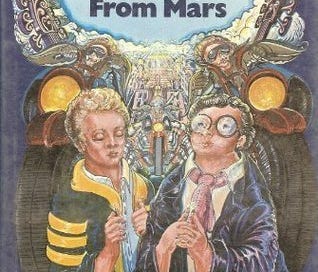




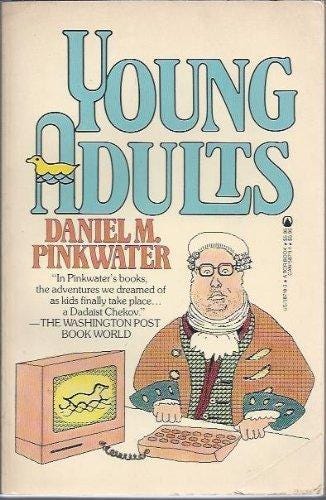

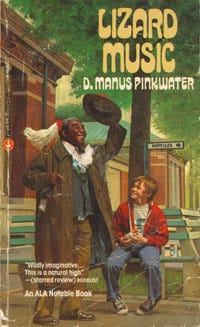
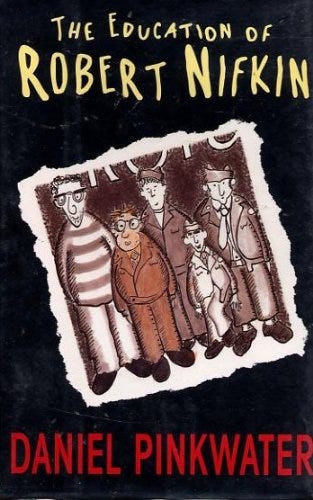
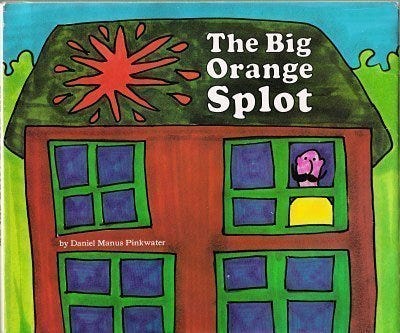


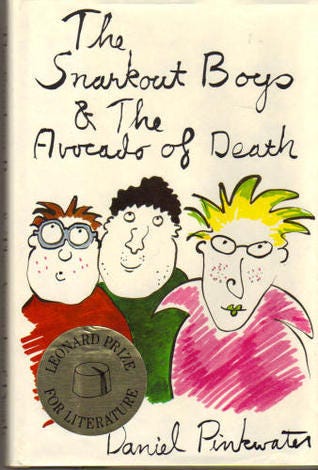
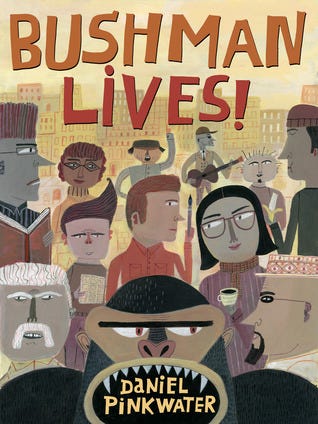
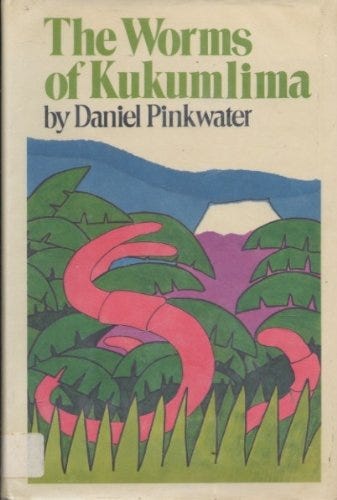
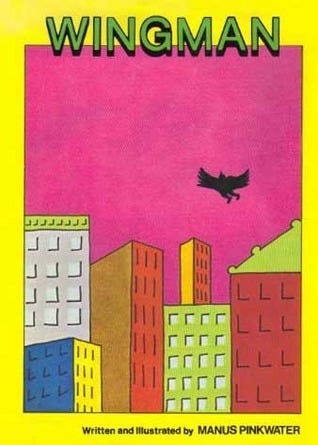
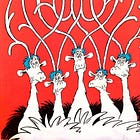
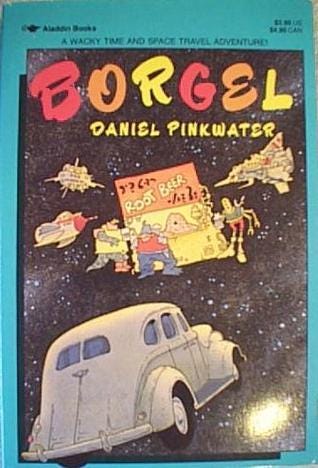
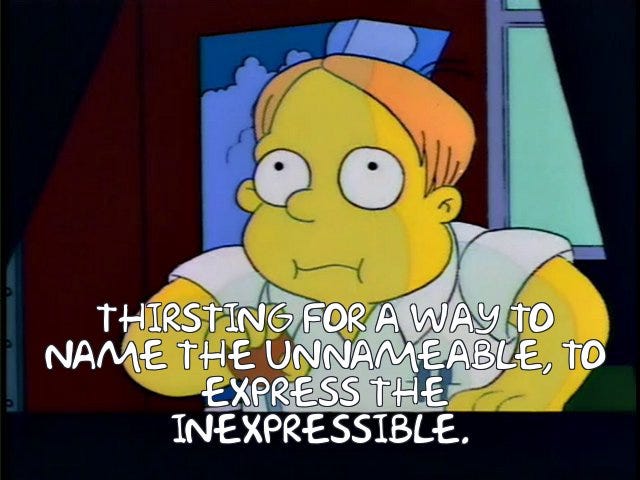
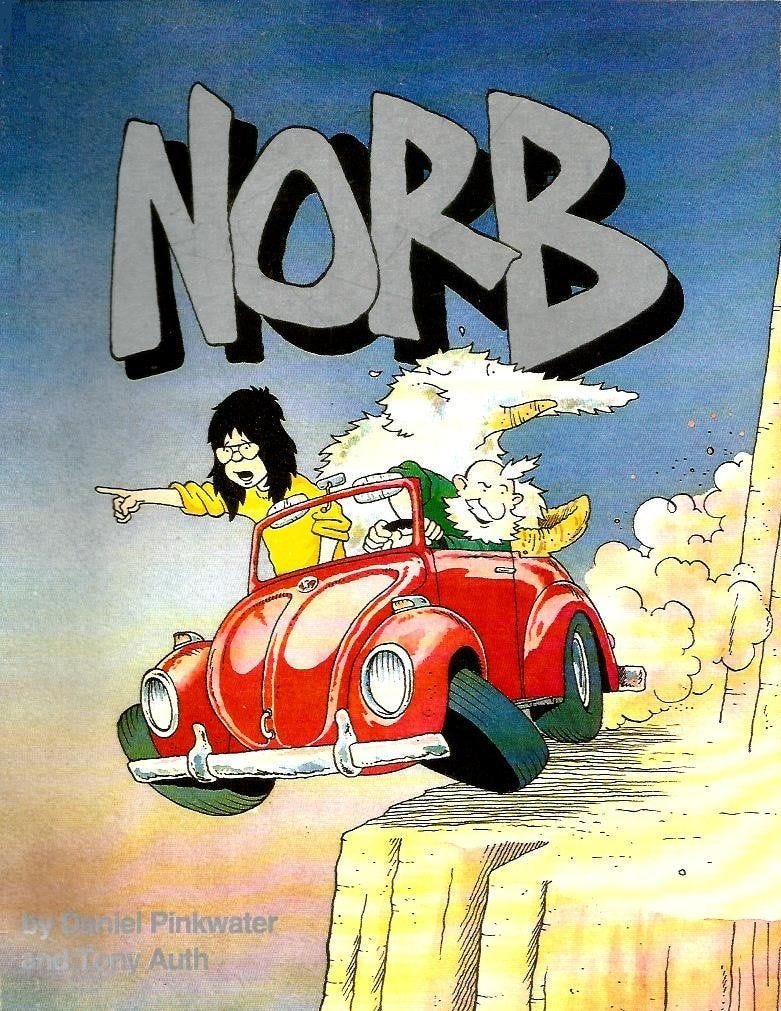
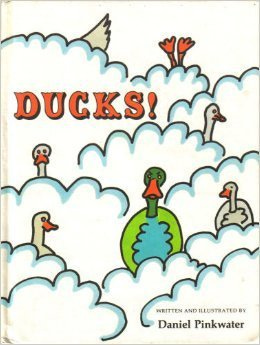
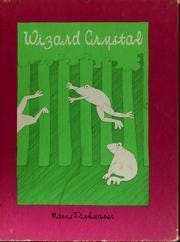
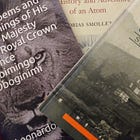
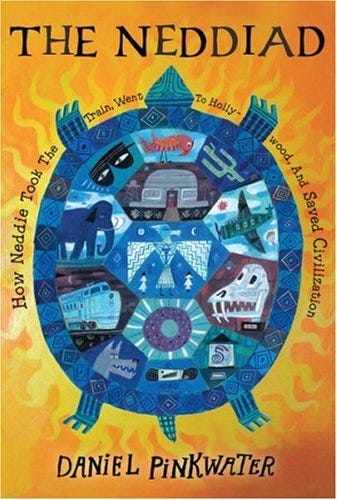
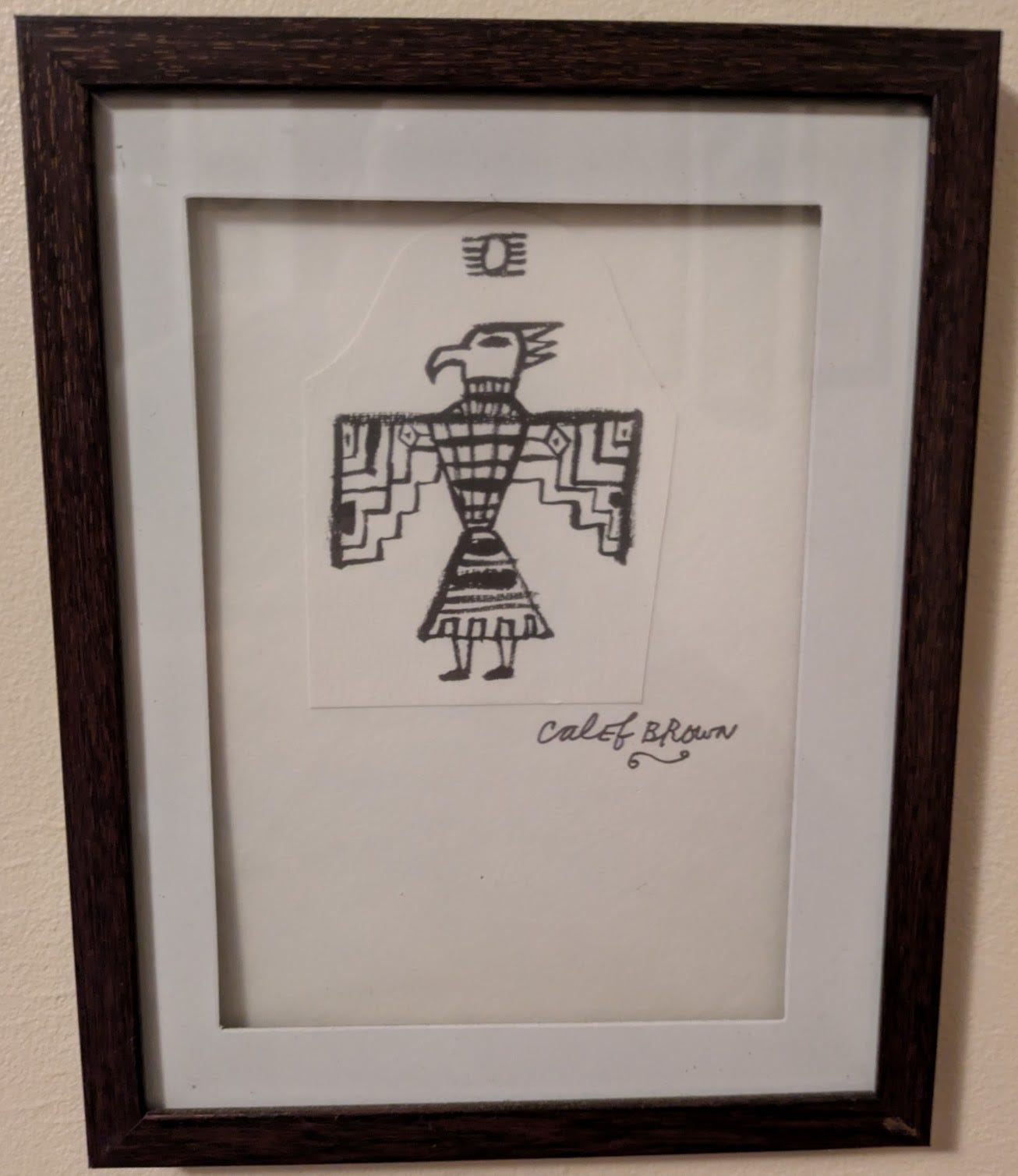
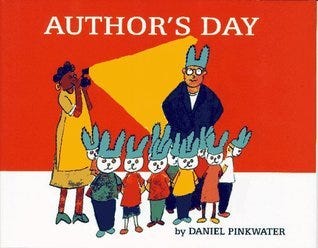

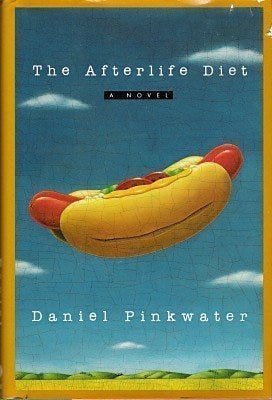
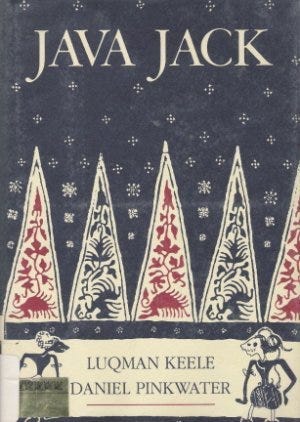
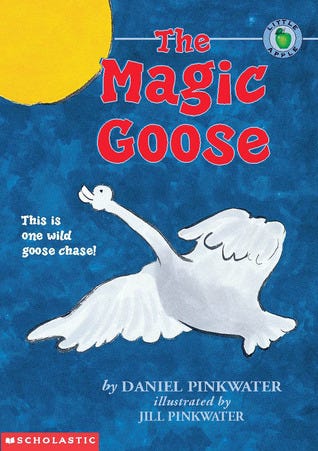

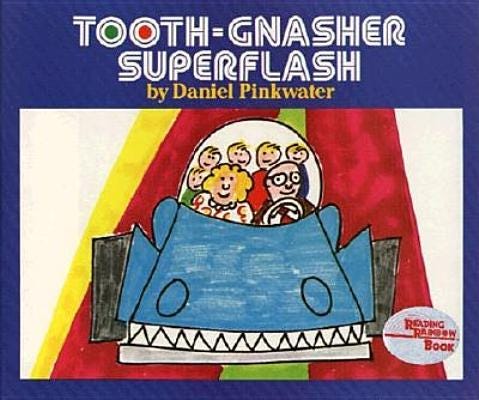
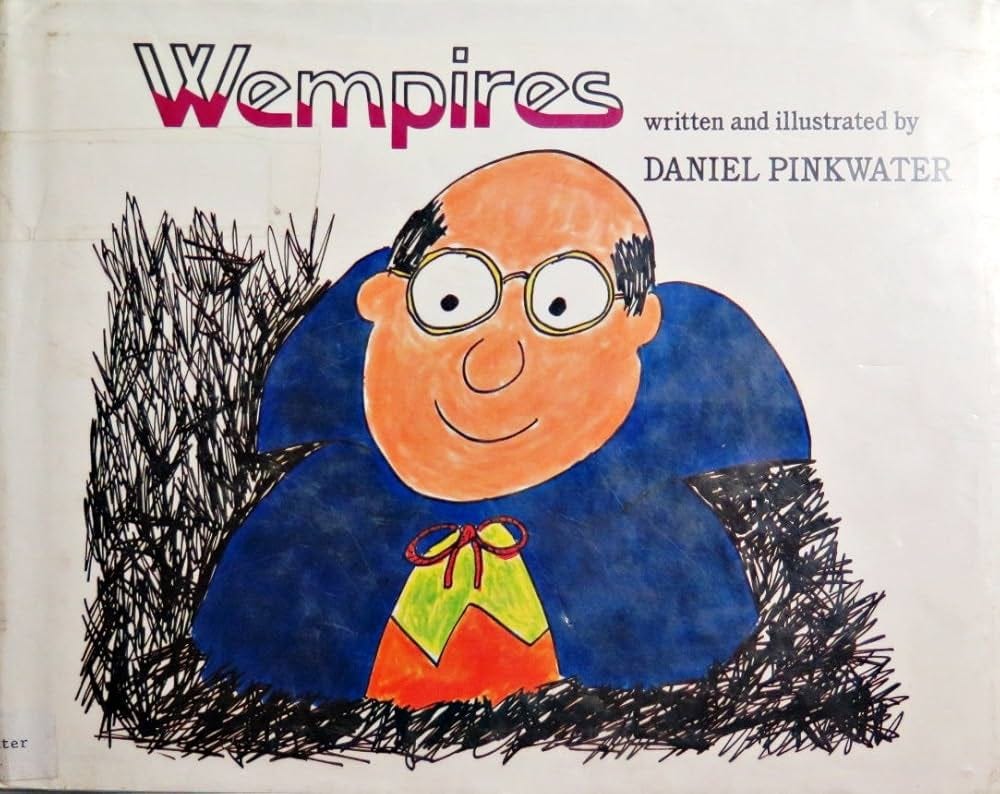
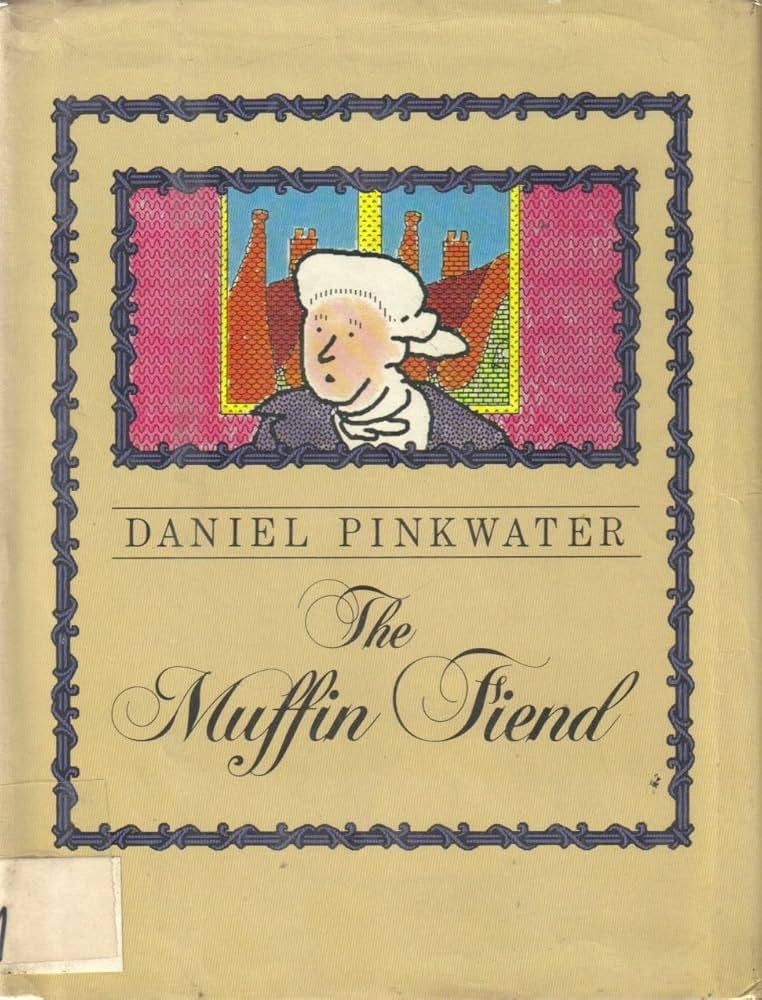

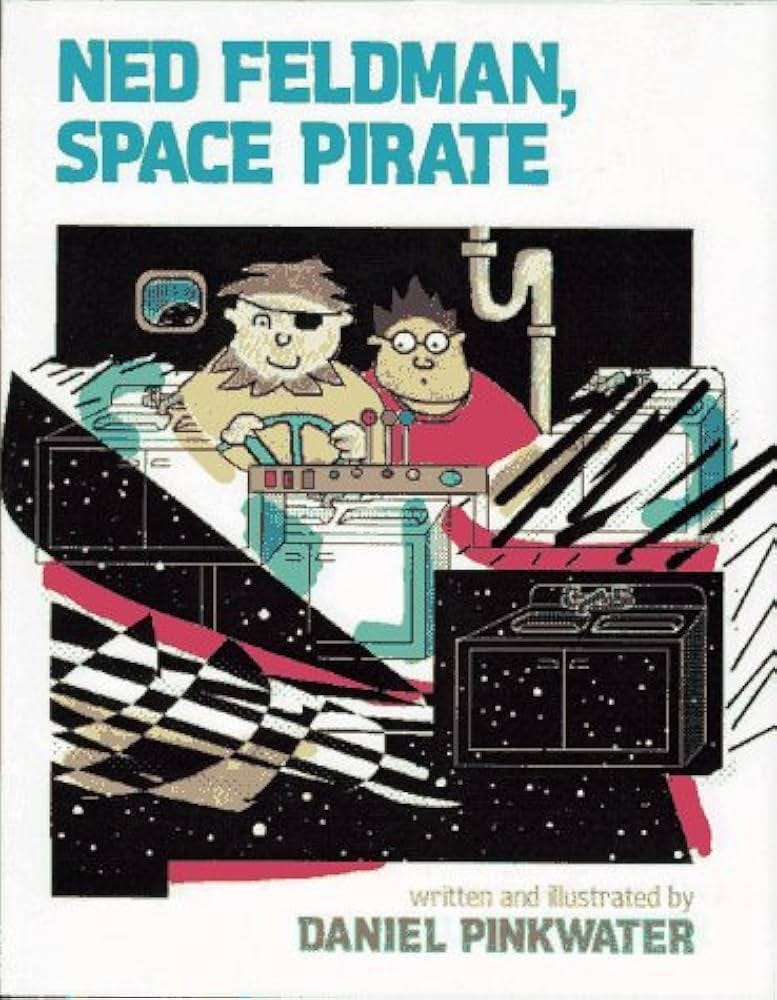


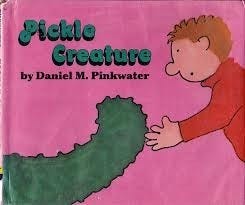
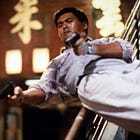
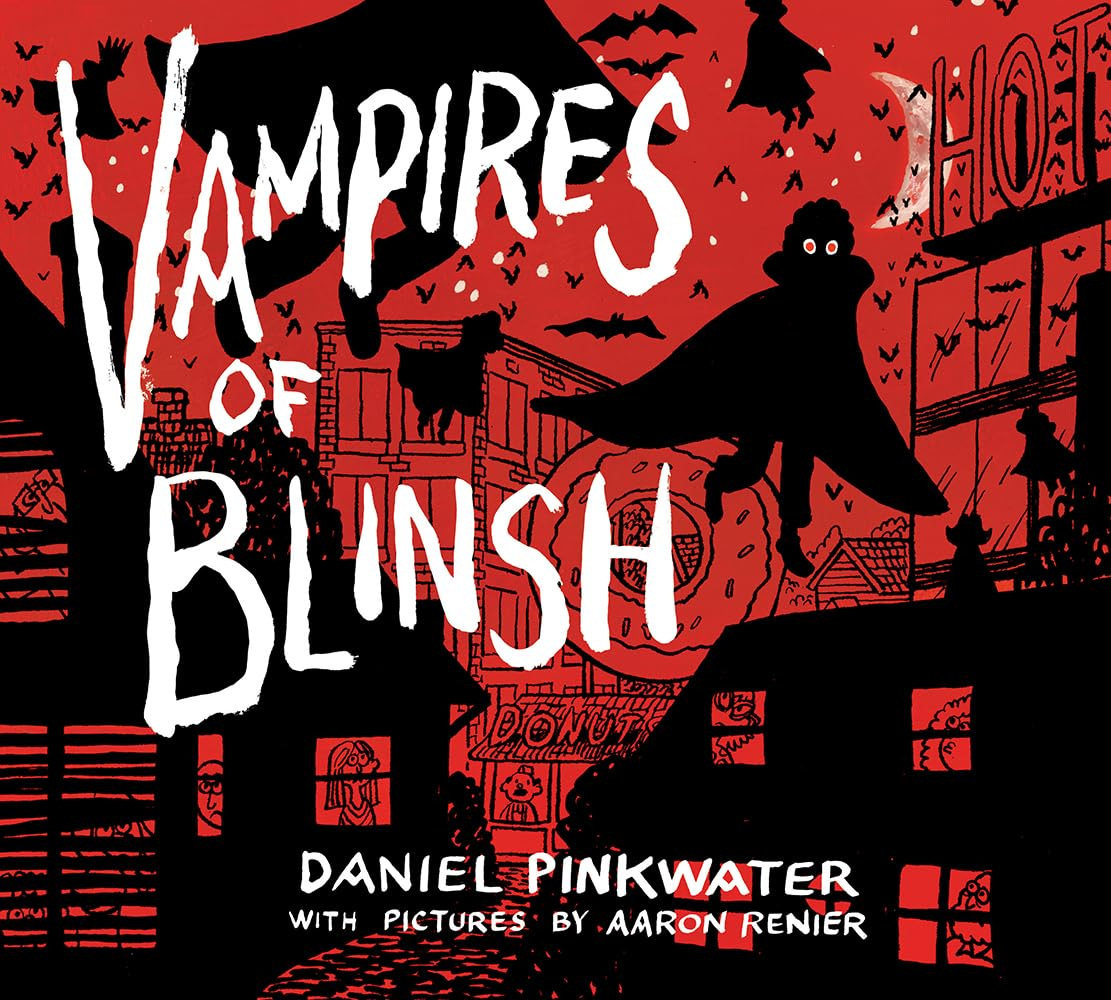
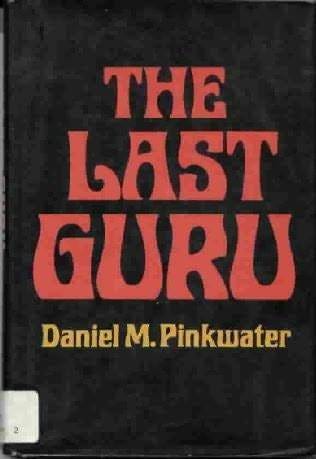
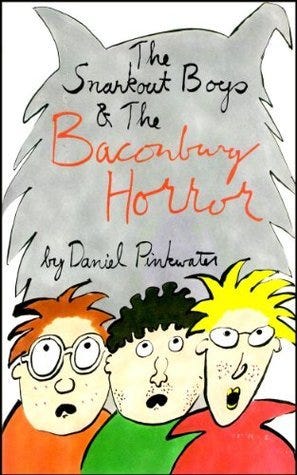

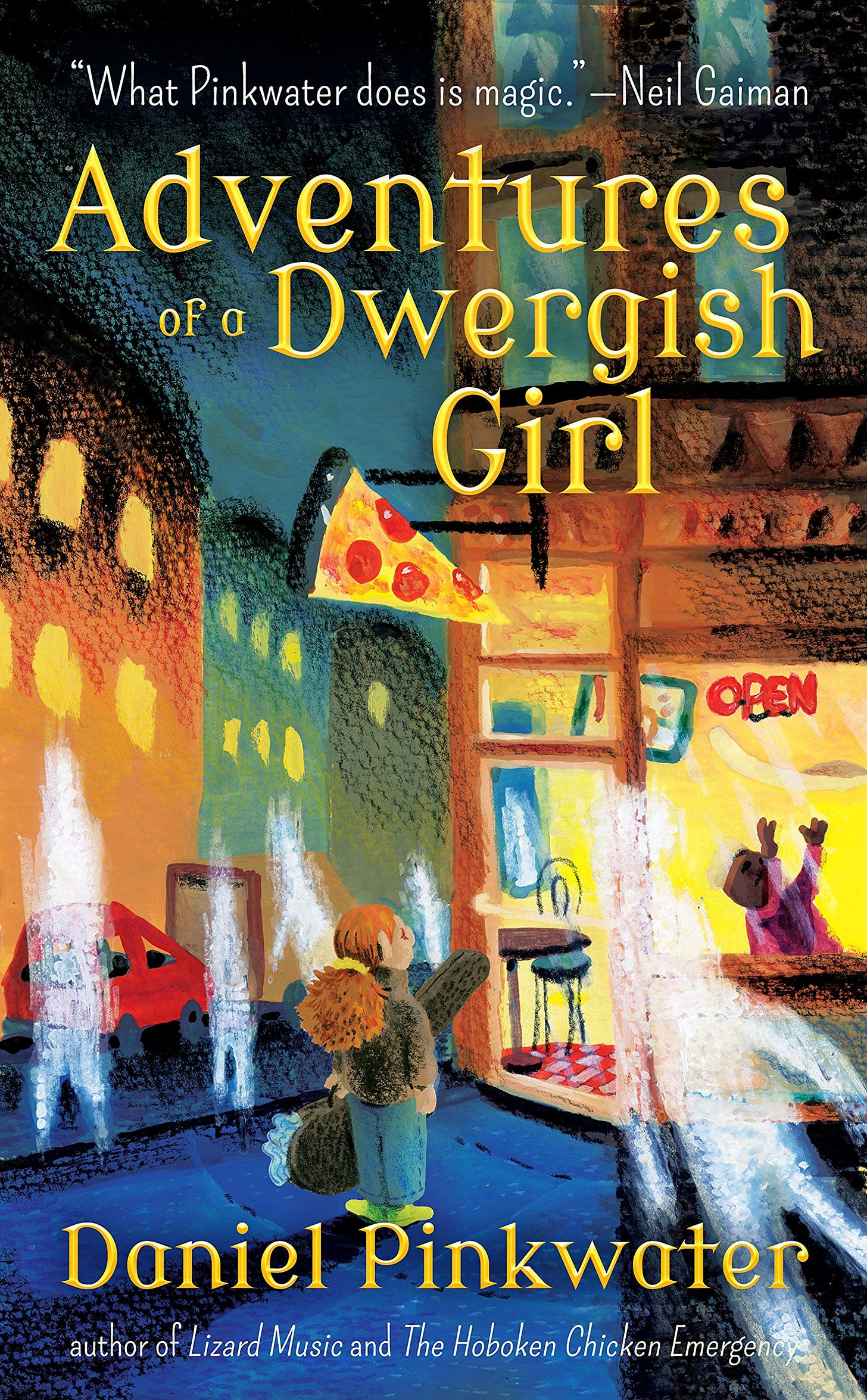
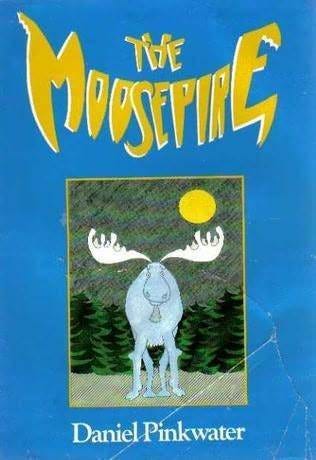
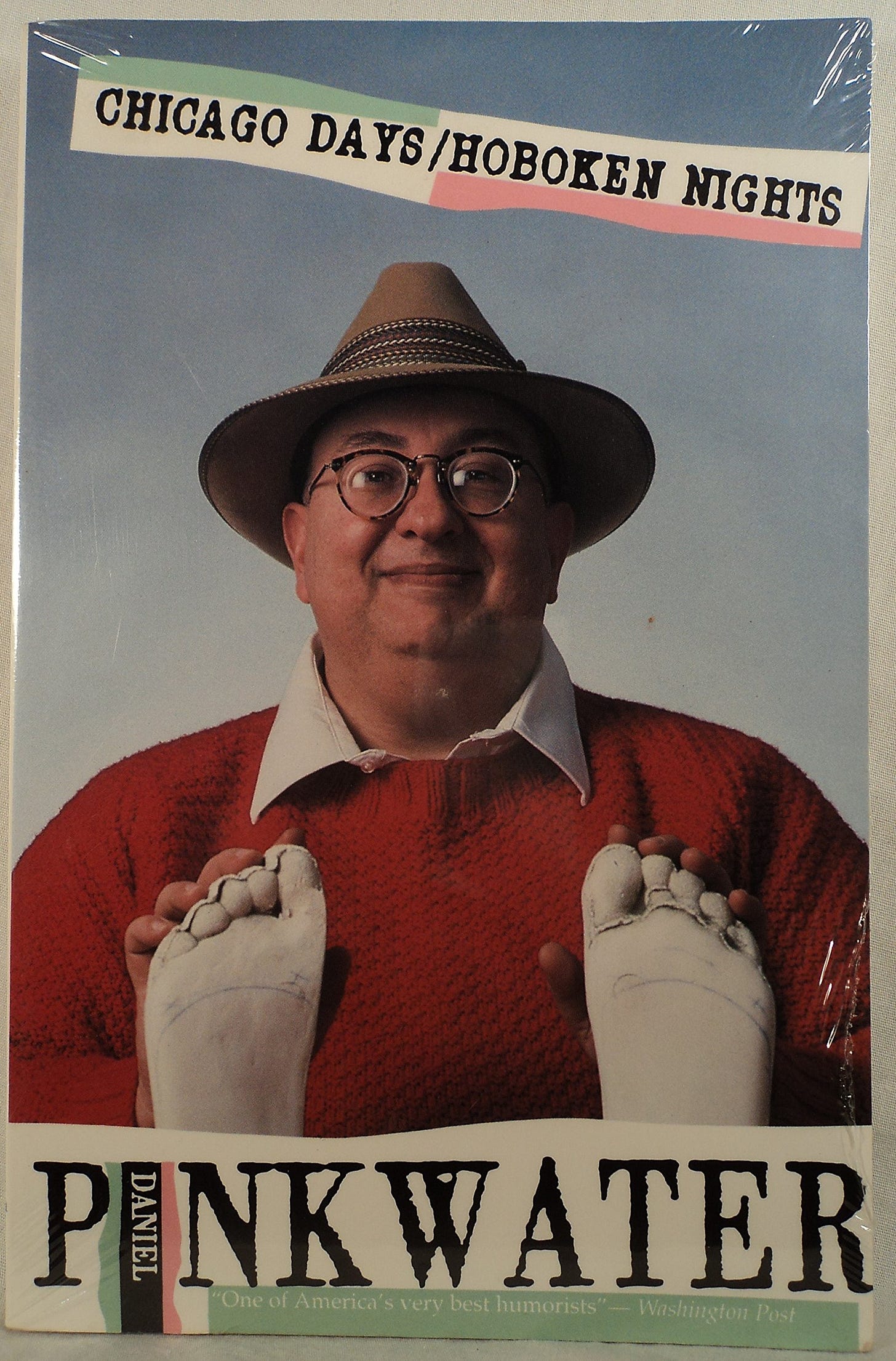
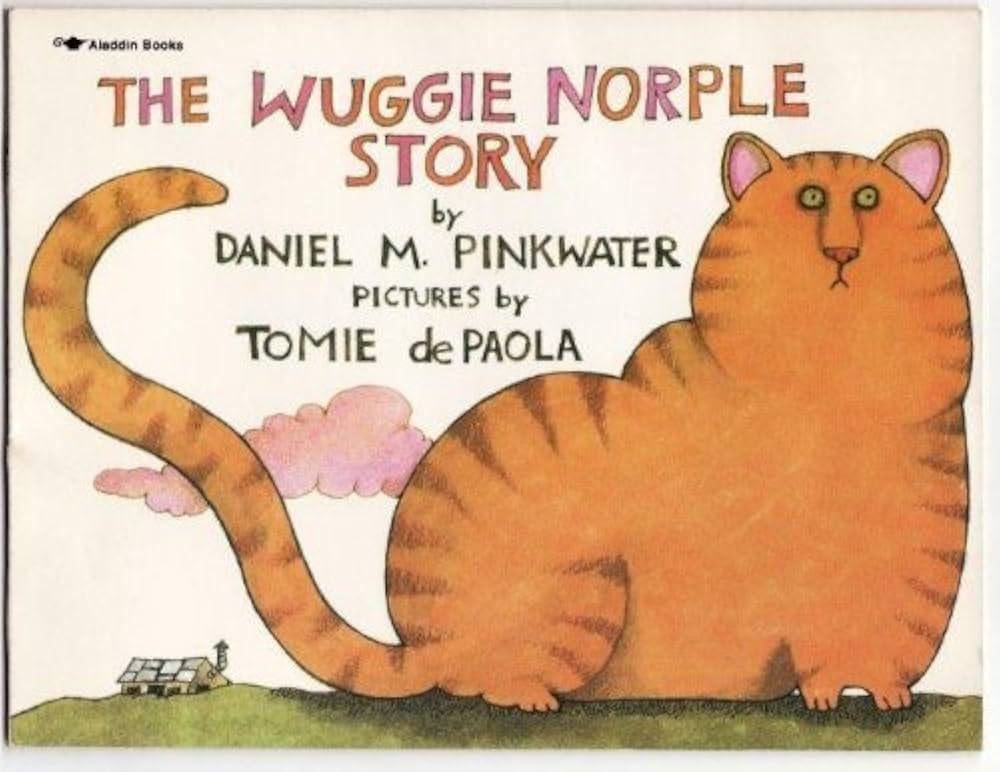
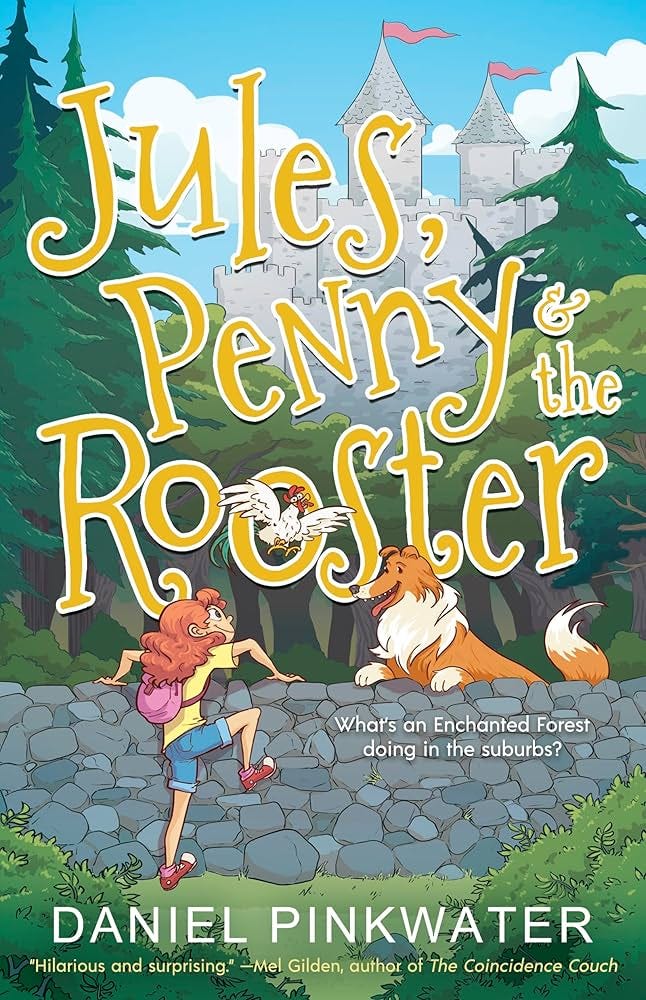
![Crazy in Poughkeepsie [Book] Crazy in Poughkeepsie [Book]](https://substackcdn.com/image/fetch/$s_!GyrW!,w_1456,c_limit,f_auto,q_auto:good,fl_progressive:steep/https%3A%2F%2Fsubstack-post-media.s3.amazonaws.com%2Fpublic%2Fimages%2Fedbc567c-ed84-452d-968d-334e315bc99d_1650x2550.jpeg)
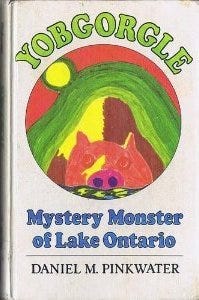

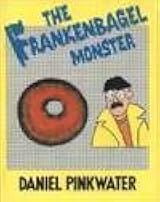


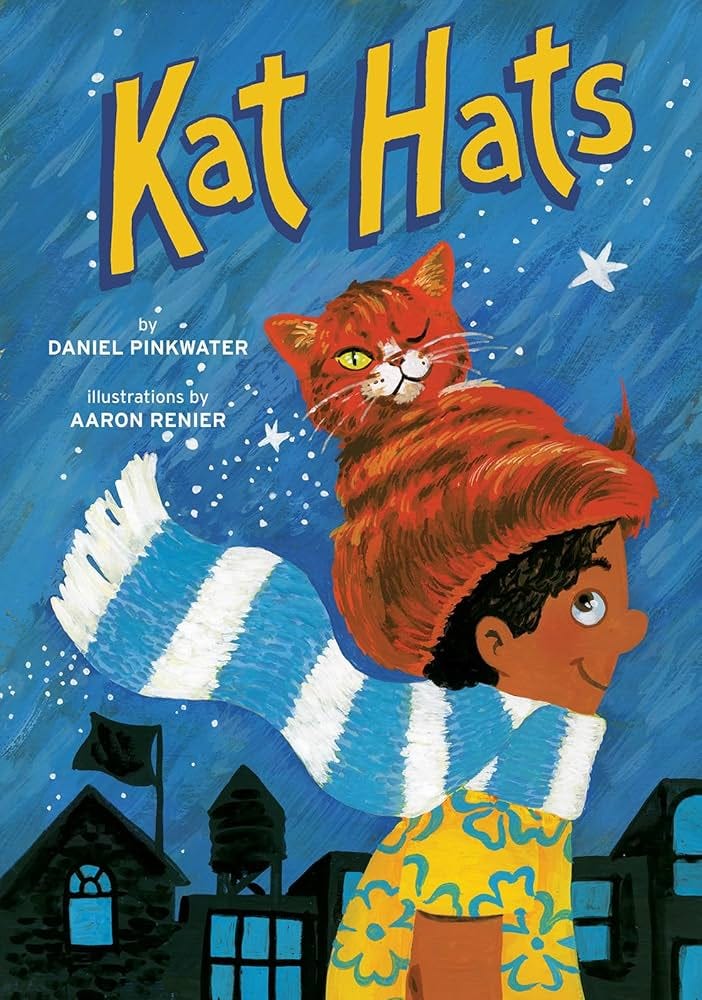
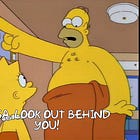
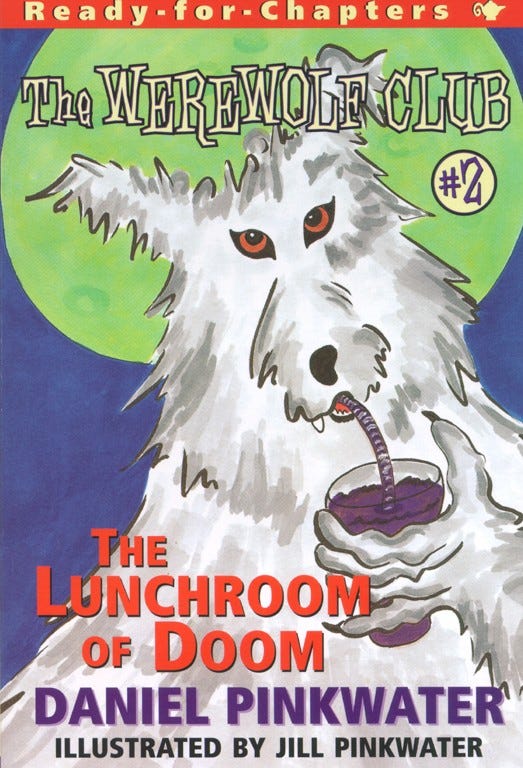
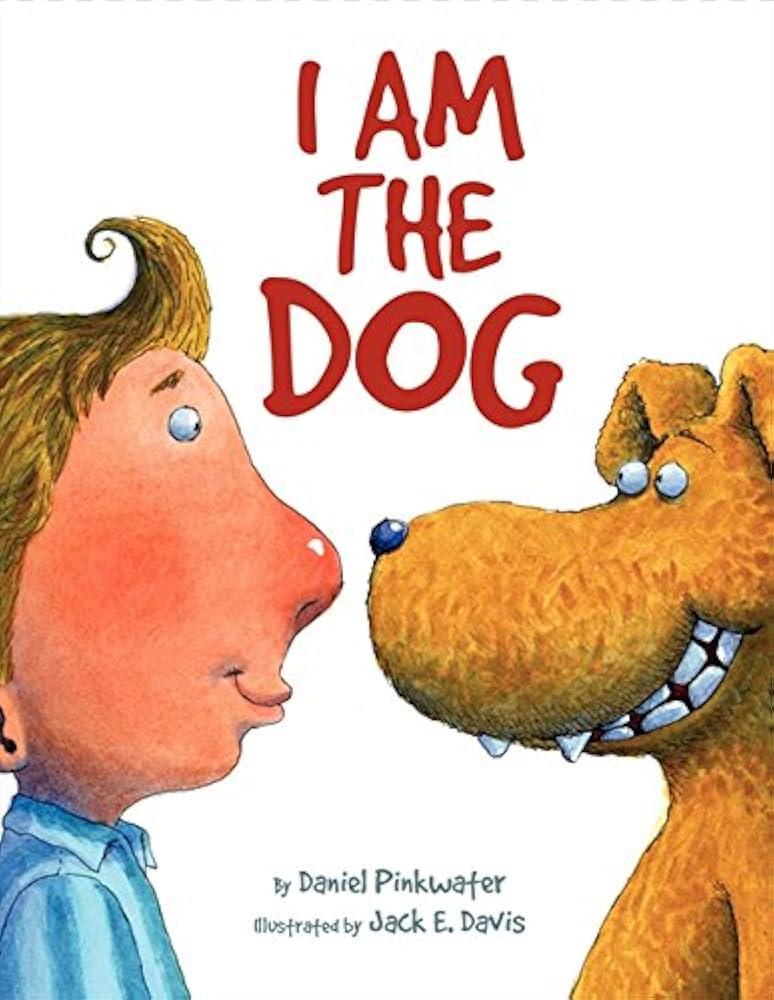
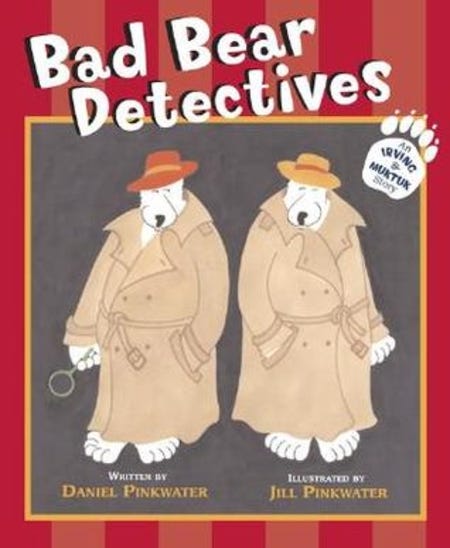
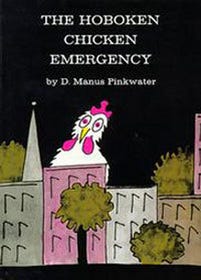
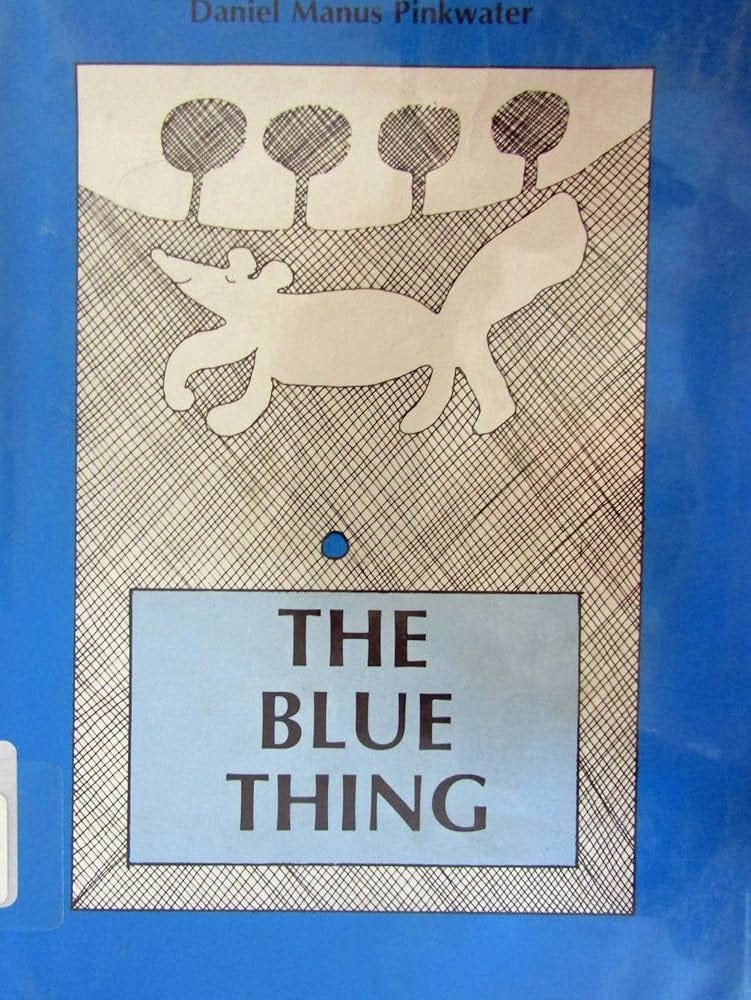
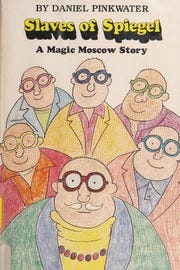

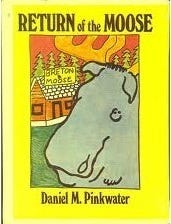
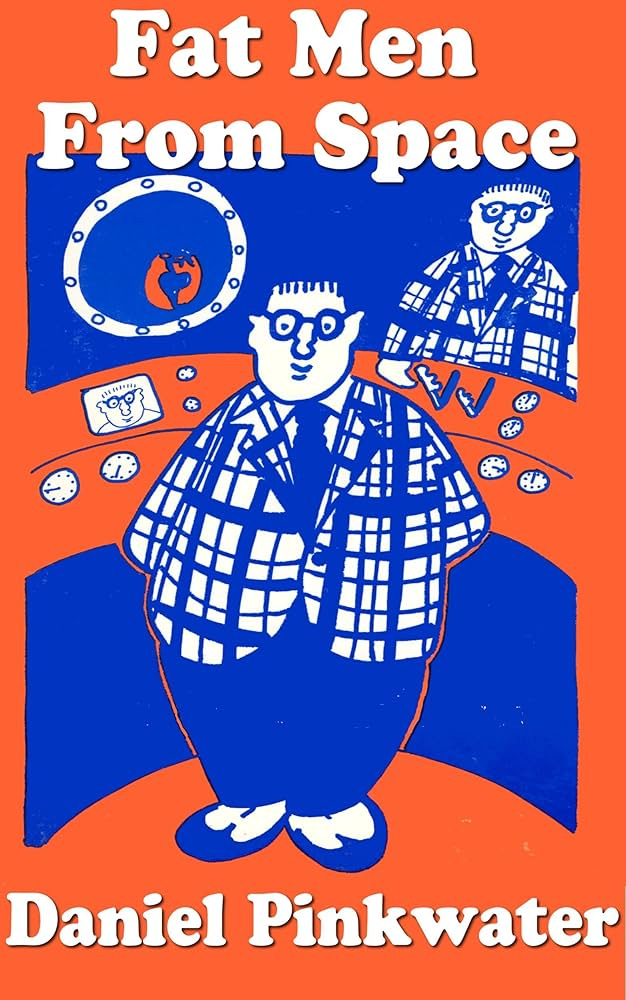
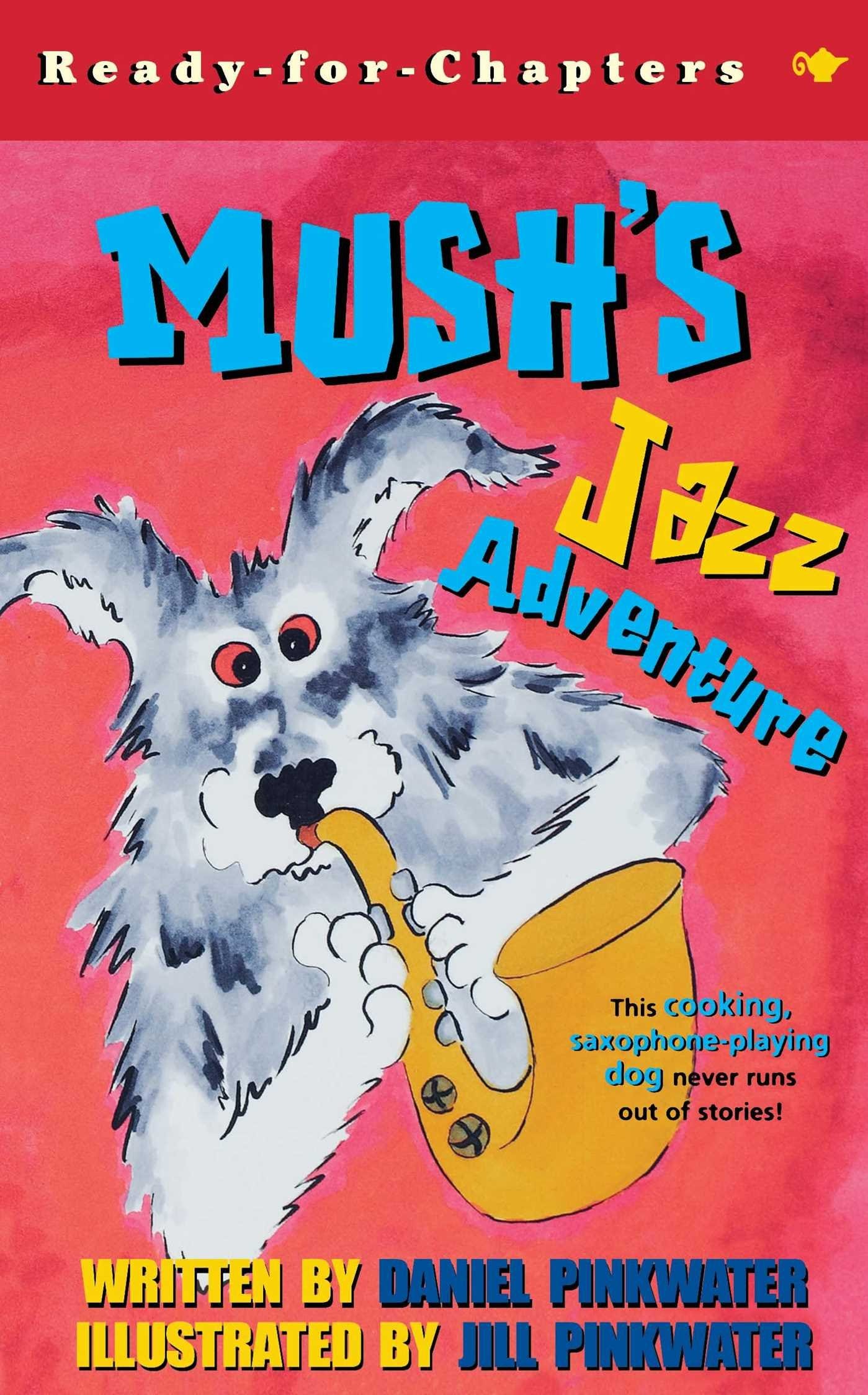
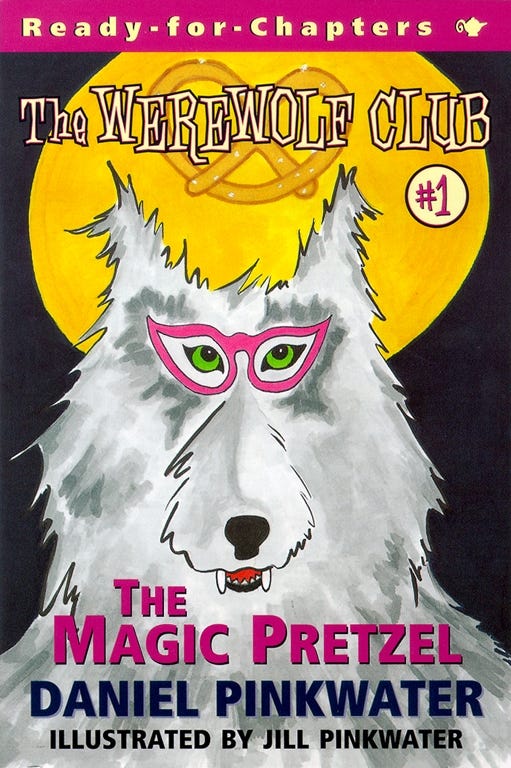
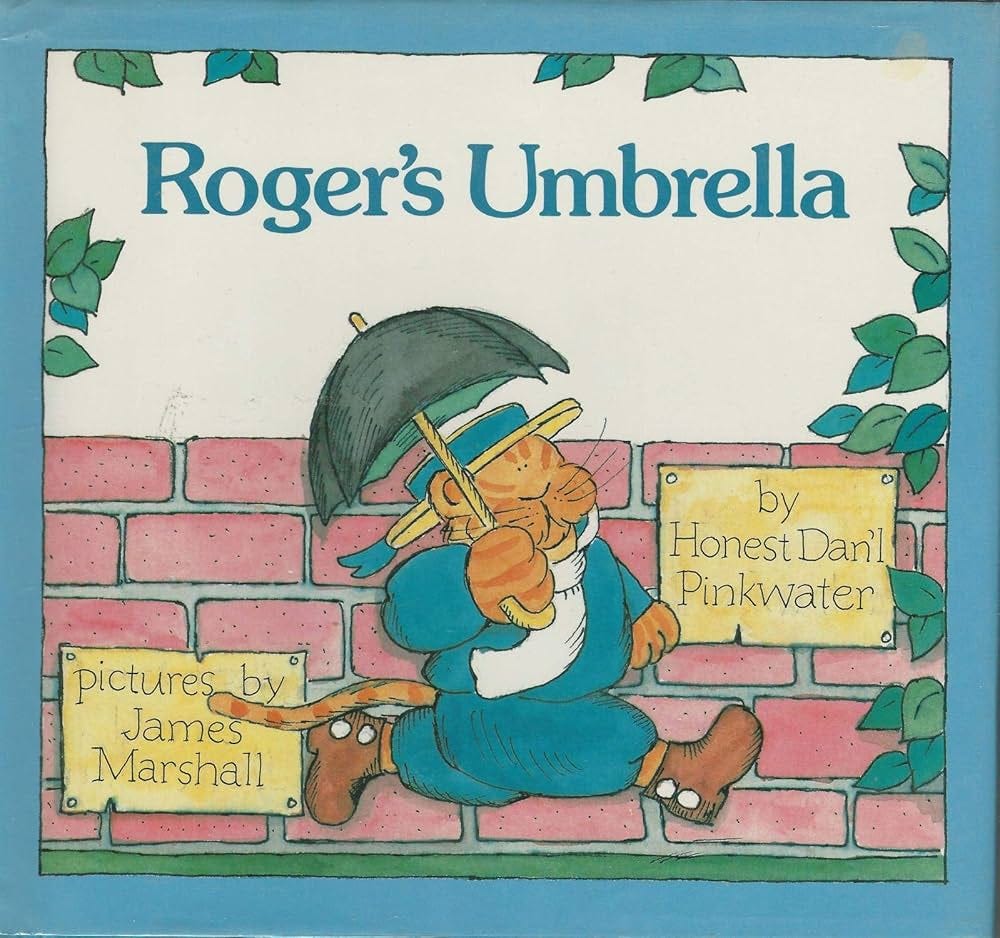

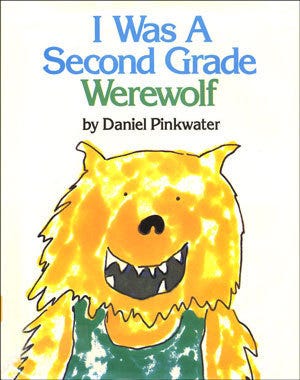

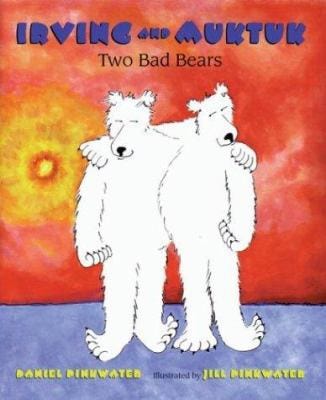
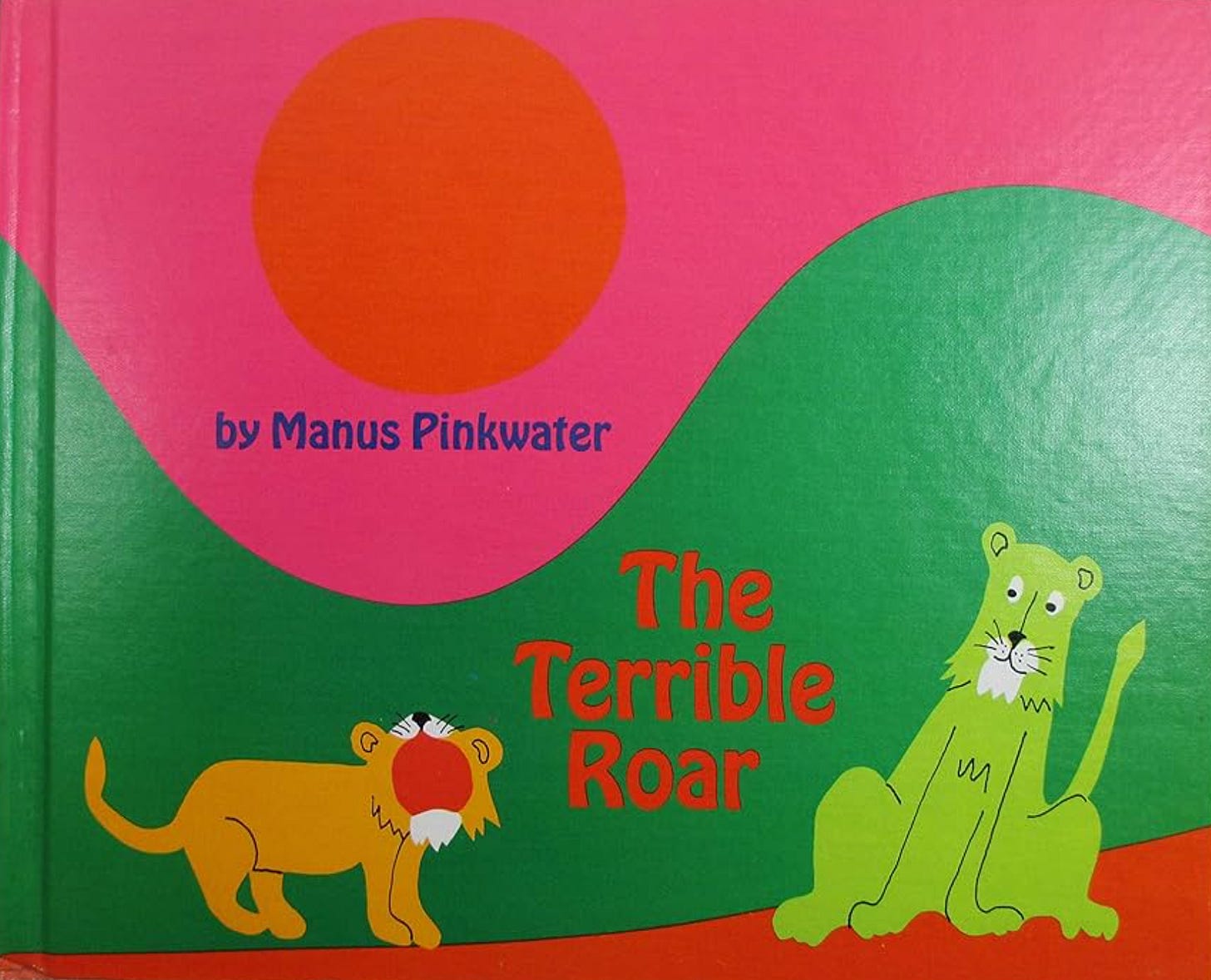
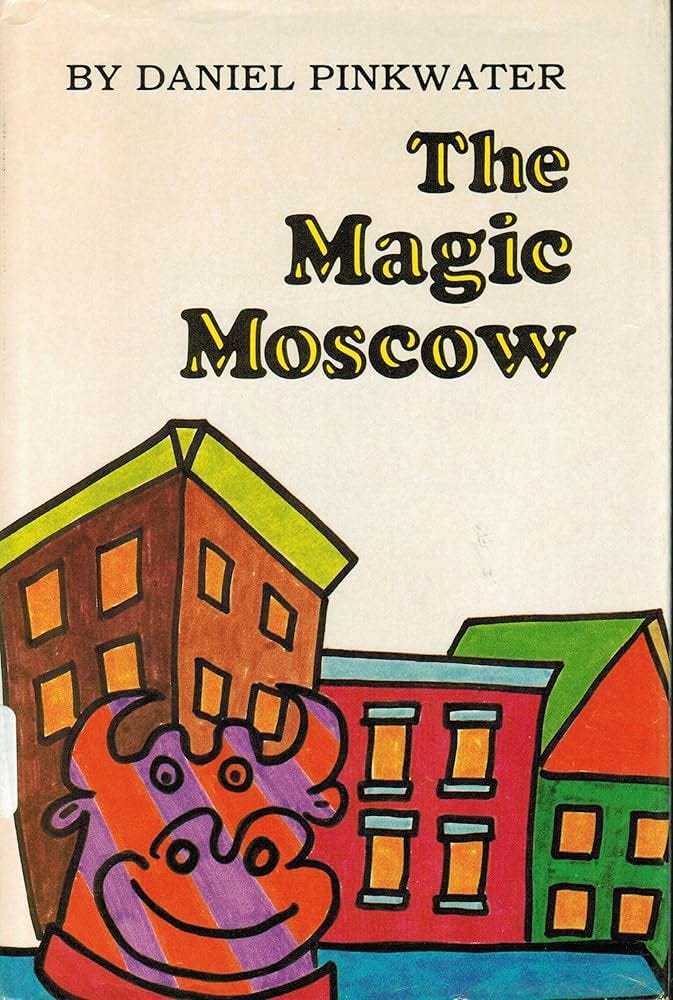

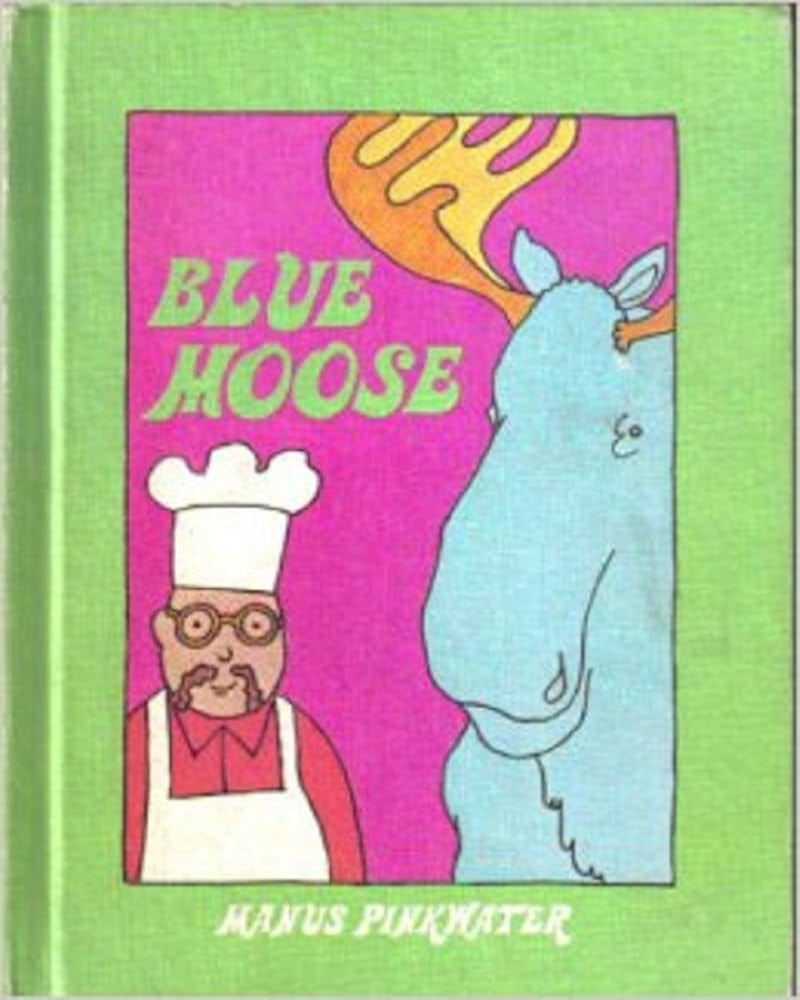
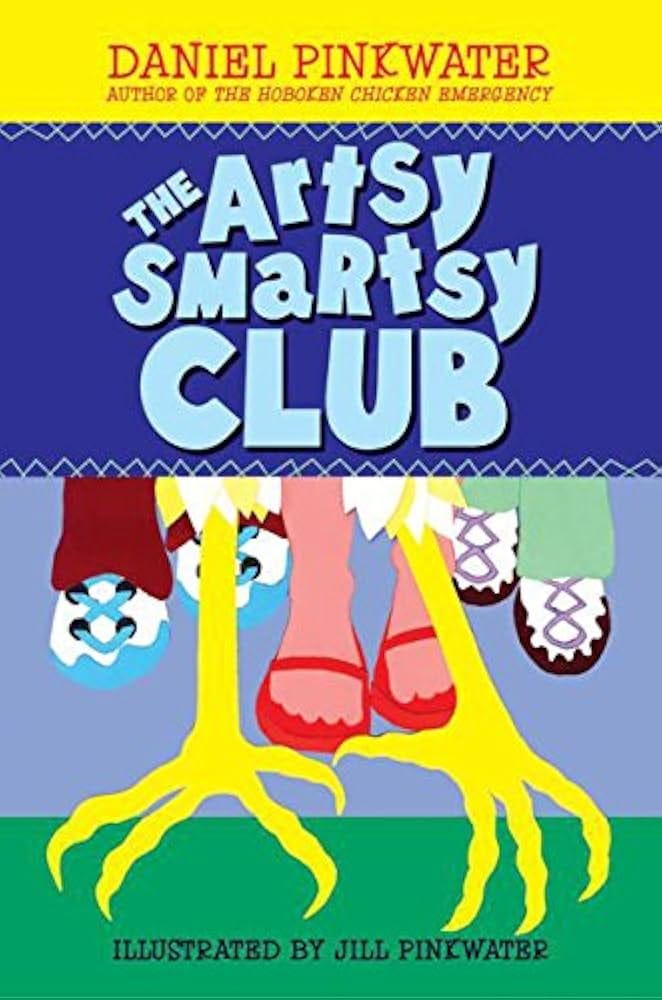
![The Werewolf Club Meets the Hound of the Basketballs [Book] The Werewolf Club Meets the Hound of the Basketballs [Book]](https://substackcdn.com/image/fetch/$s_!iDgH!,w_1456,c_limit,f_auto,q_auto:good,fl_progressive:steep/https%3A%2F%2Fsubstack-post-media.s3.amazonaws.com%2Fpublic%2Fimages%2F1fff4cff-fc09-4aaf-bbf2-cdcd76550695_1400x2166.jpeg)
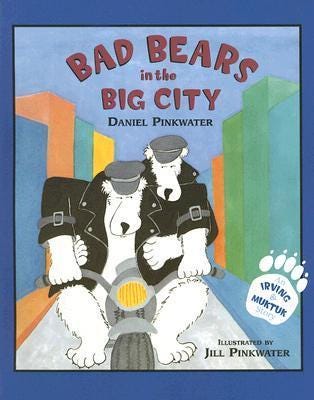
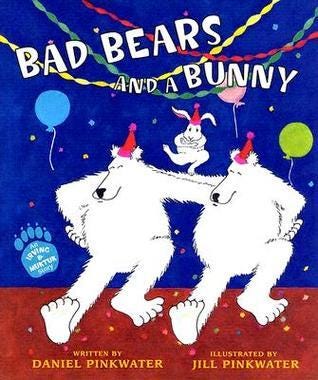



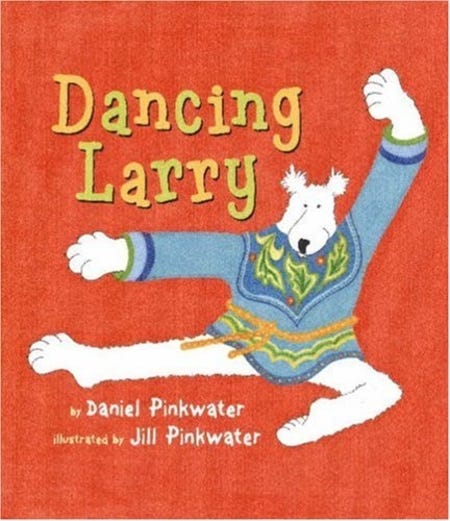
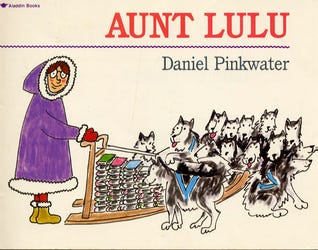

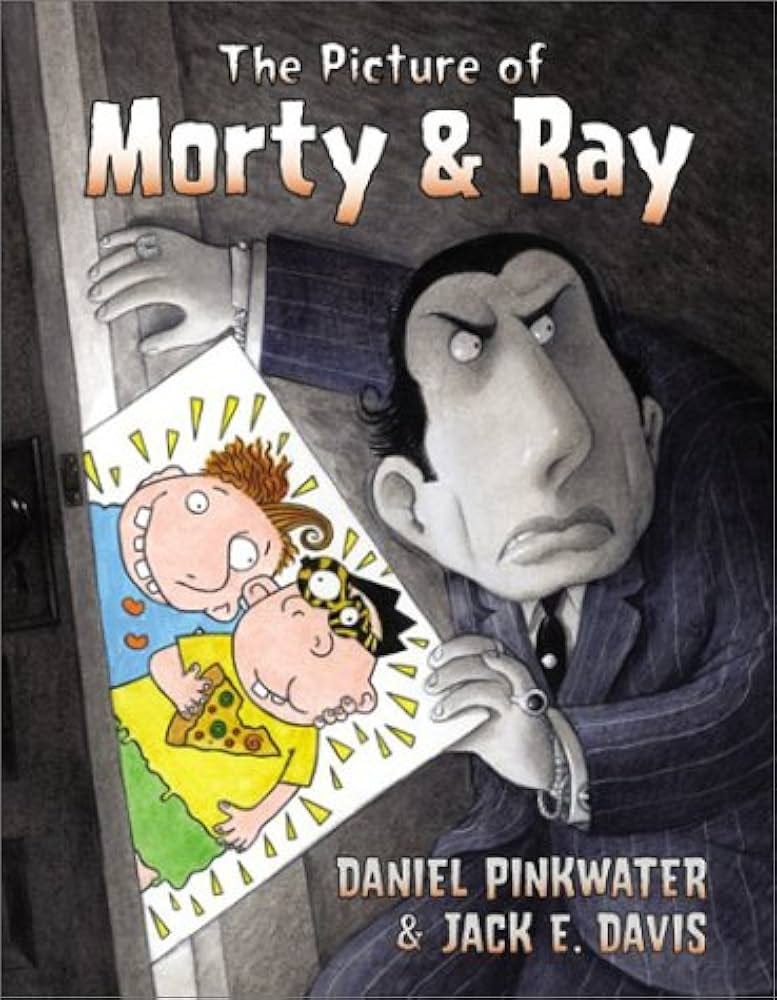
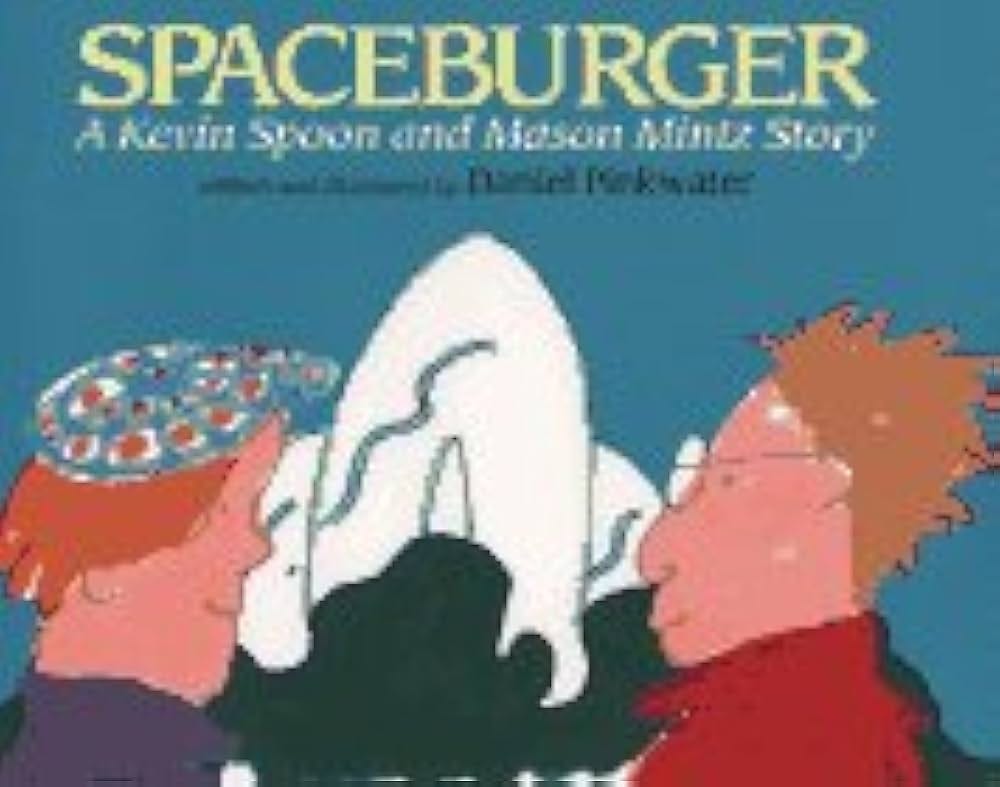
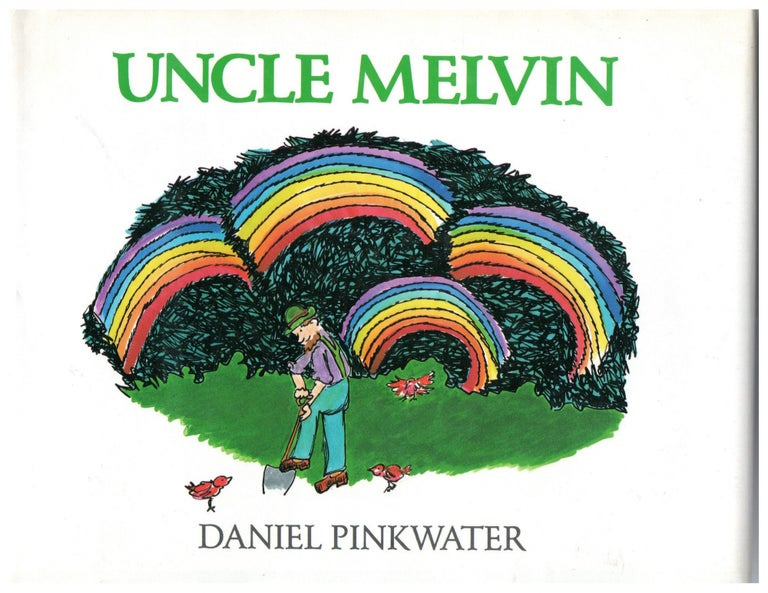
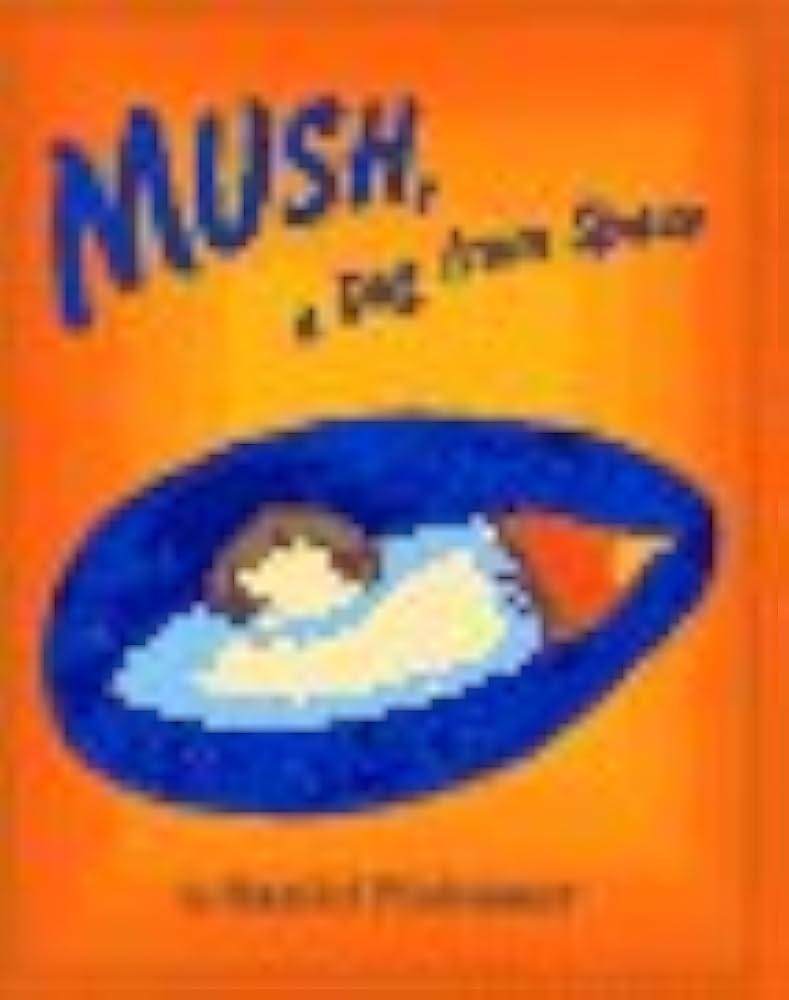
![The Werewolf Club Meets Oliver Twit [Book] The Werewolf Club Meets Oliver Twit [Book]](https://substackcdn.com/image/fetch/$s_!RqUt!,w_1456,c_limit,f_auto,q_auto:good,fl_progressive:steep/https%3A%2F%2Fsubstack-post-media.s3.amazonaws.com%2Fpublic%2Fimages%2F07ec5db1-ee9b-4698-baa8-8a241c11e3fd_1400x2066.jpeg)
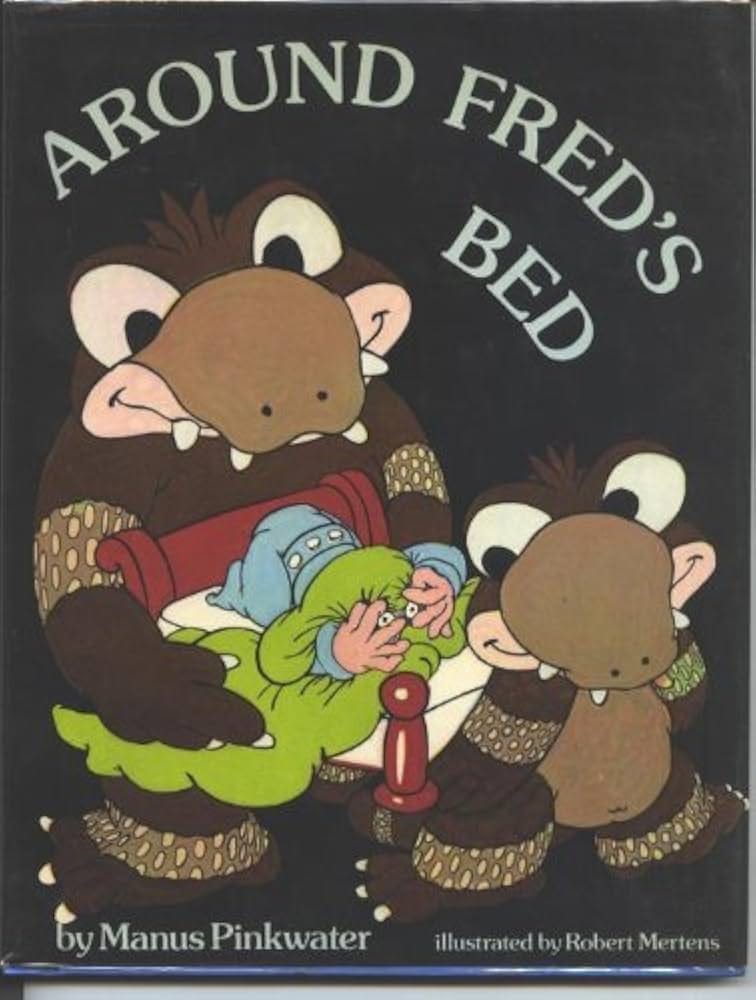


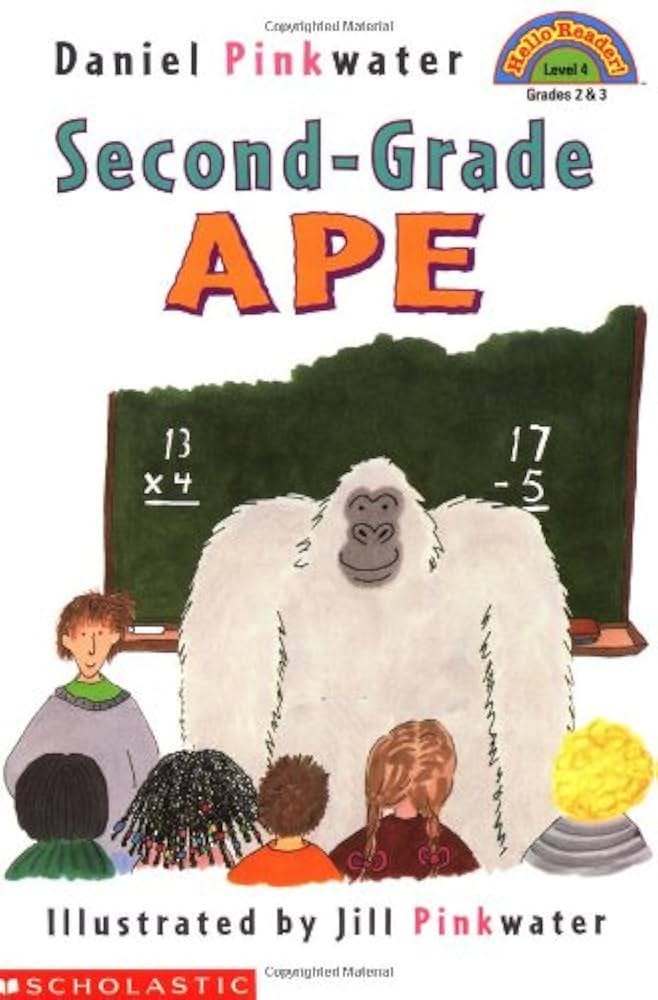


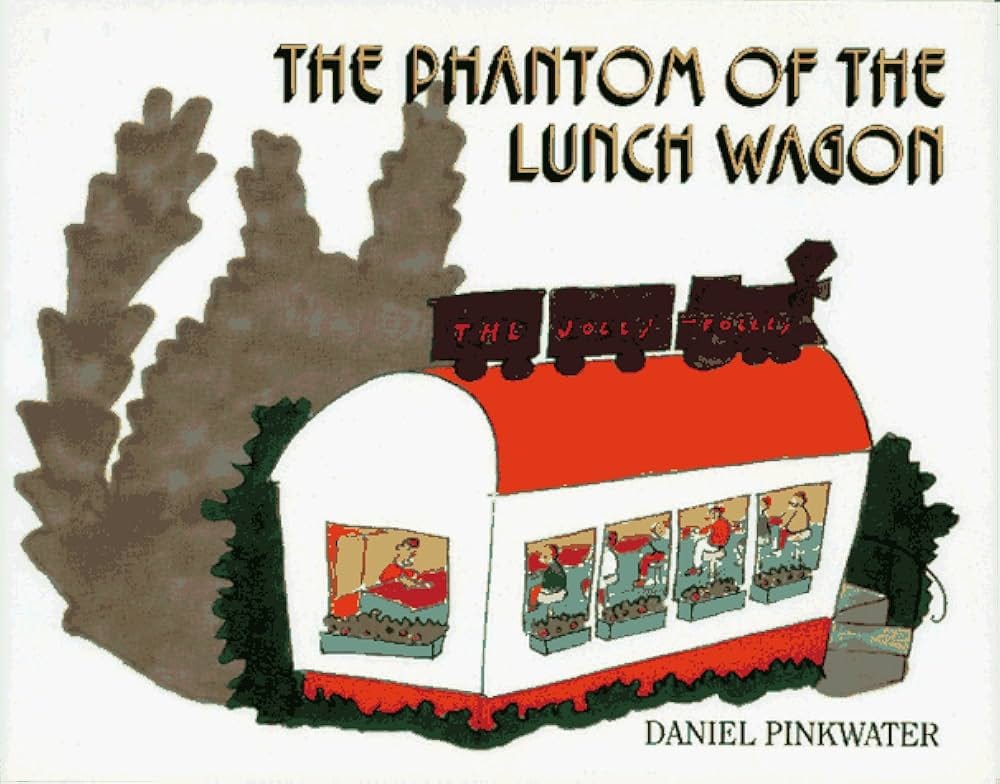
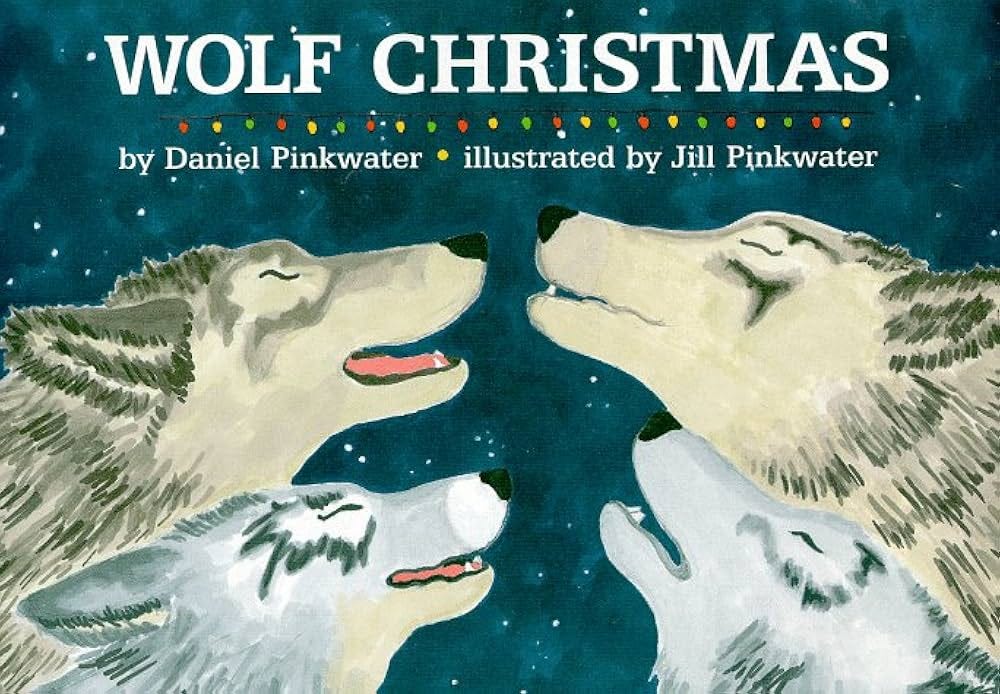
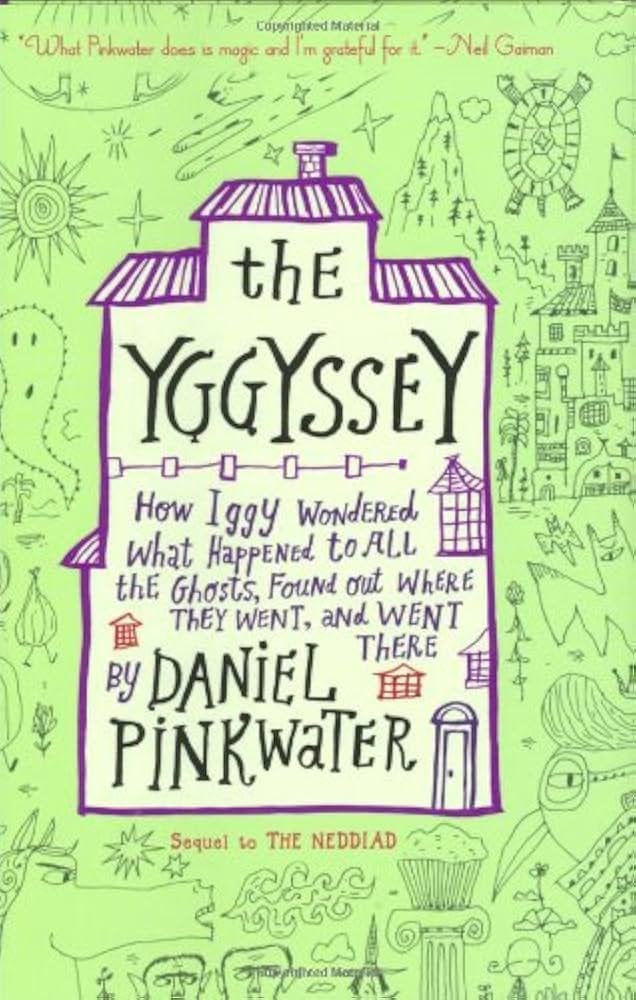
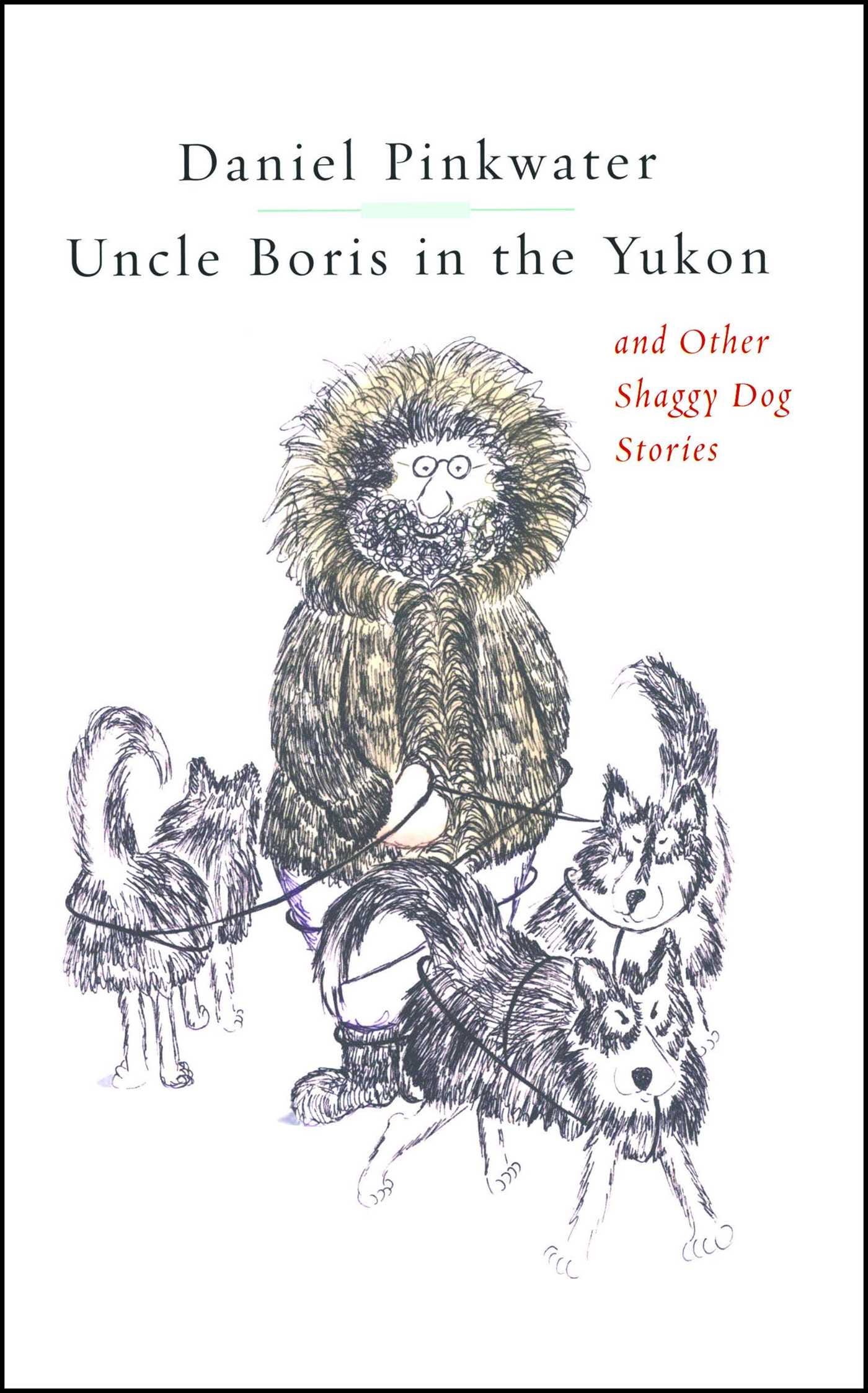


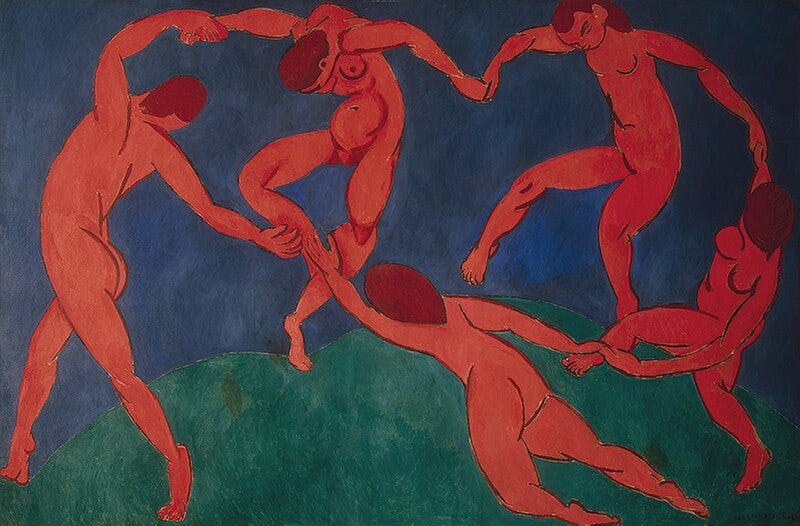

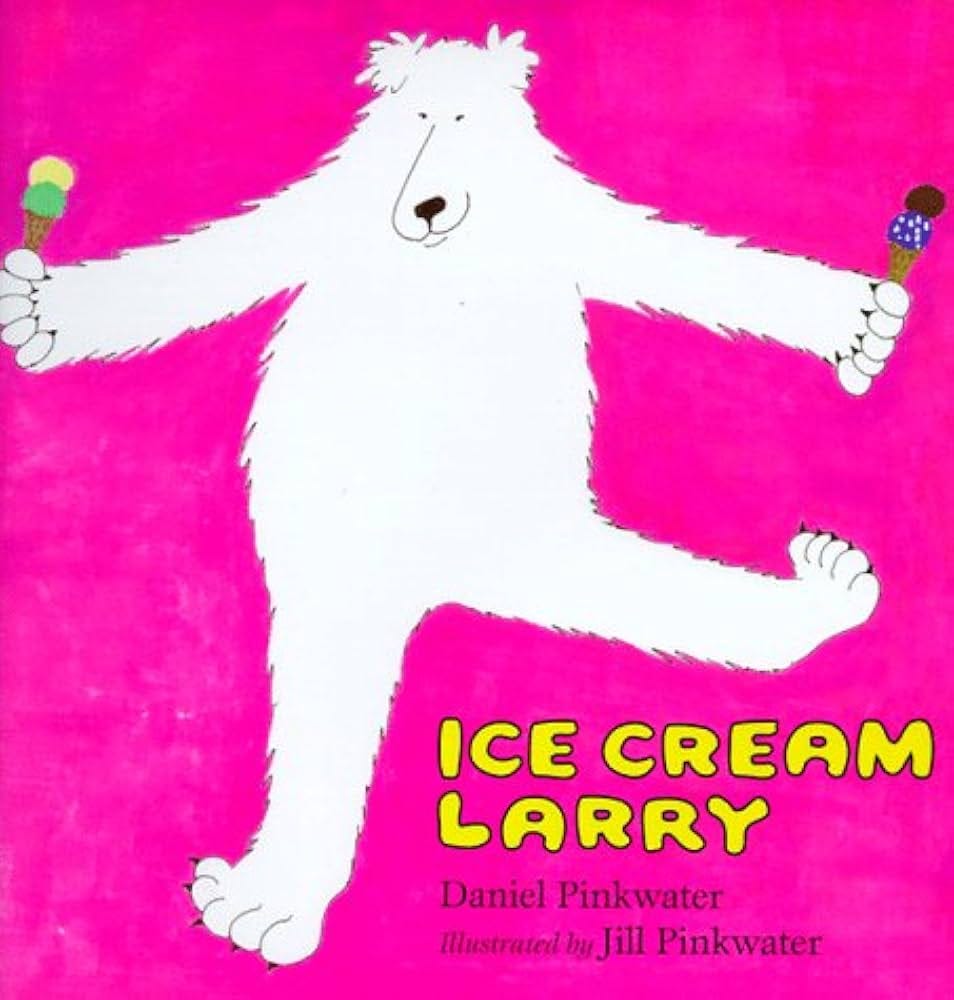
![Sleepover Larry [Book] Sleepover Larry [Book]](https://substackcdn.com/image/fetch/$s_!hAEo!,w_1456,c_limit,f_auto,q_auto:good,fl_progressive:steep/https%3A%2F%2Fsubstack-post-media.s3.amazonaws.com%2Fpublic%2Fimages%2F559e43bf-7f80-49df-9c58-69cb30b3d23e_500x500.jpeg)
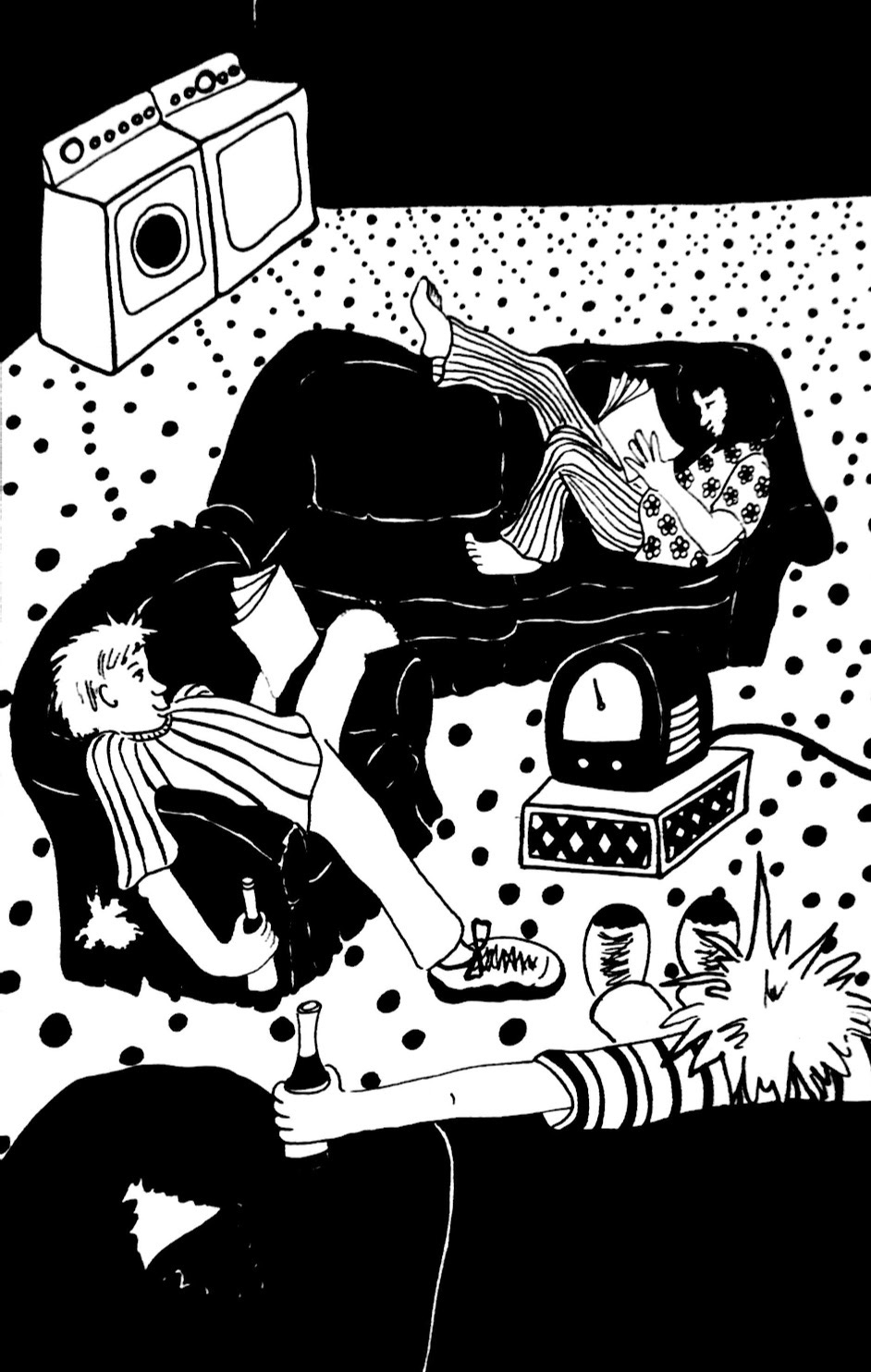
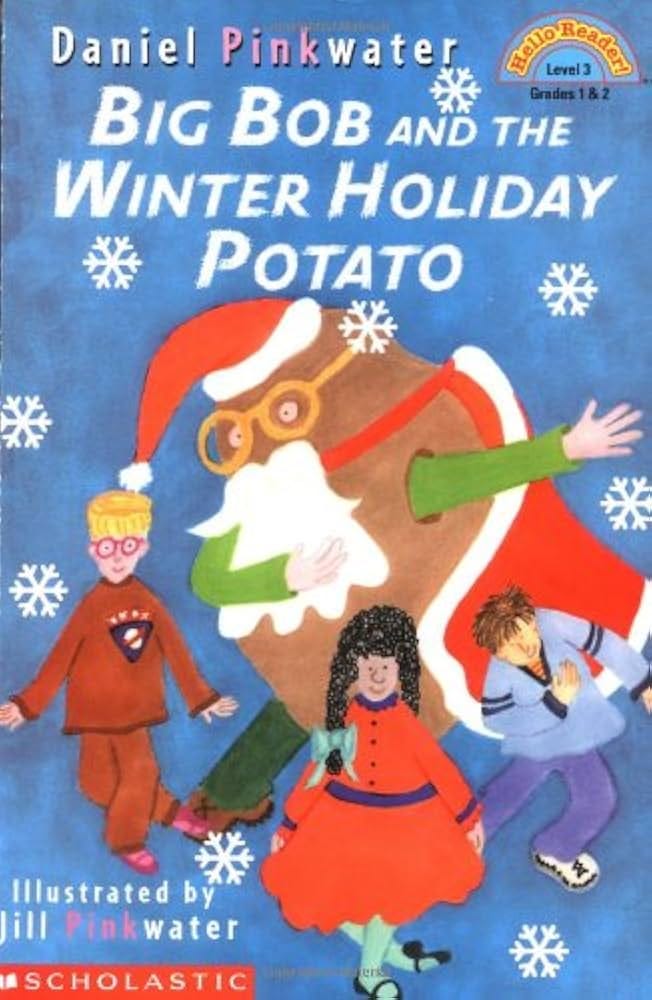
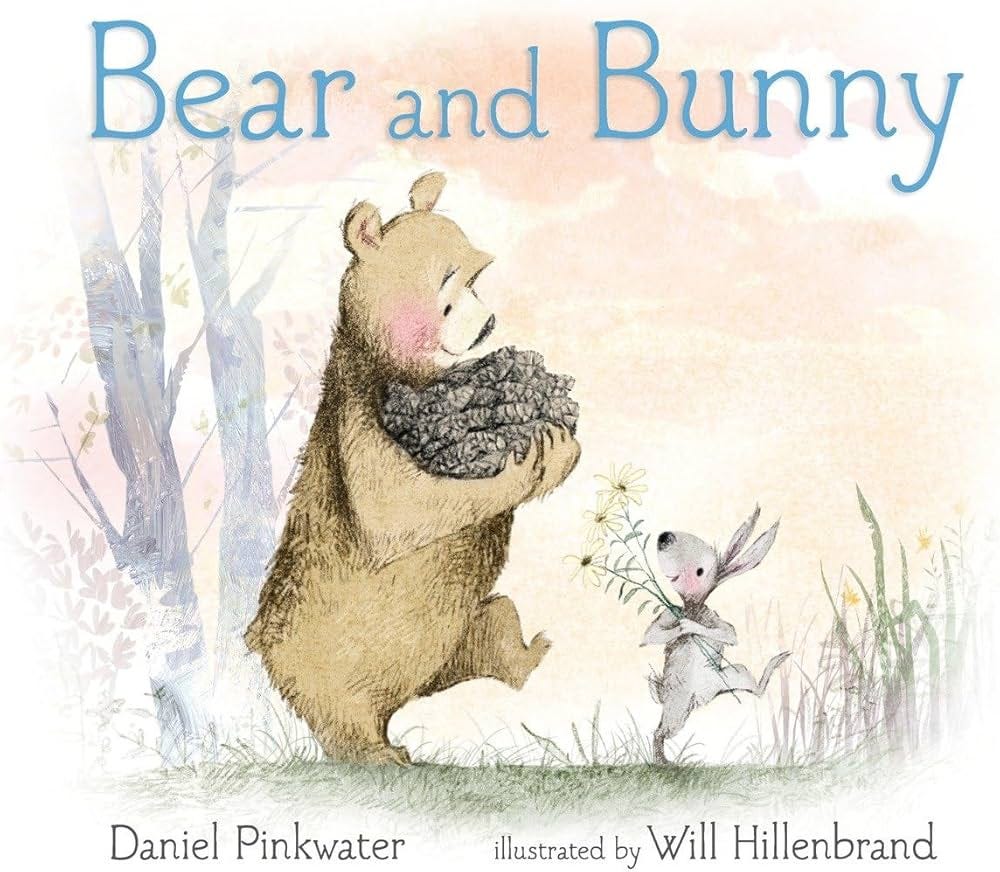
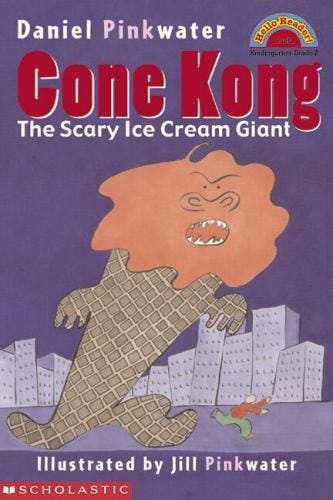
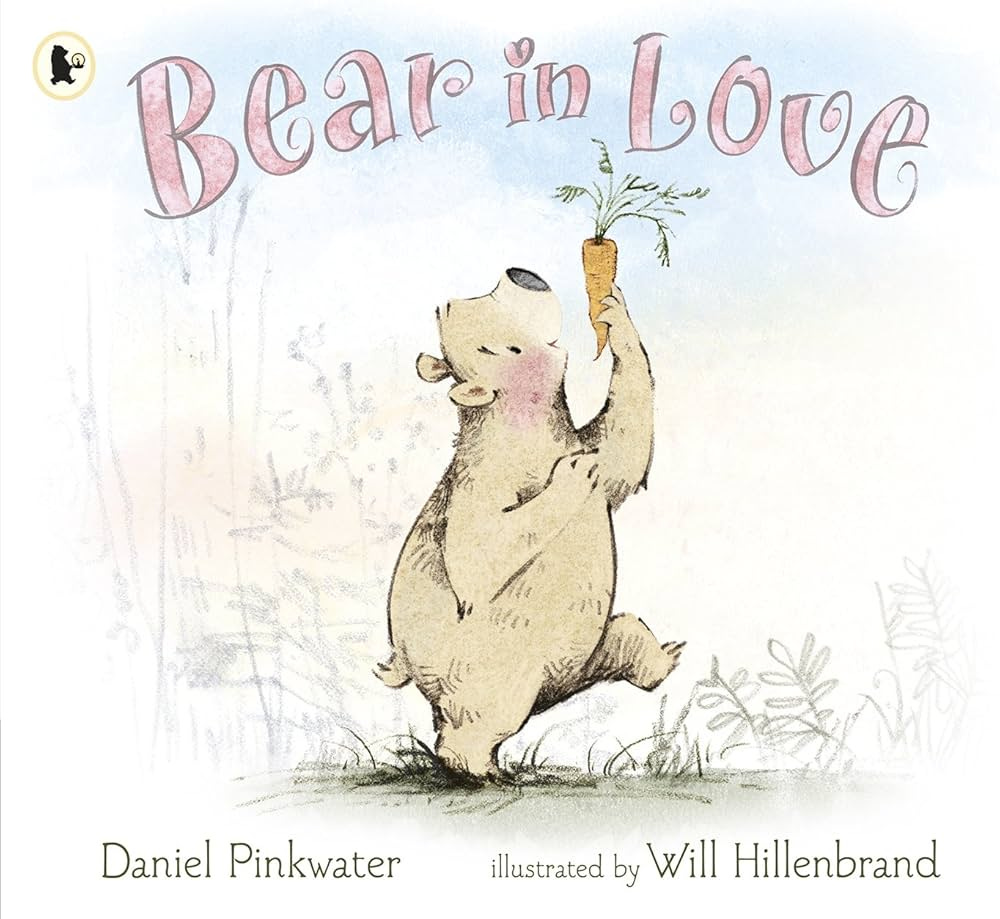
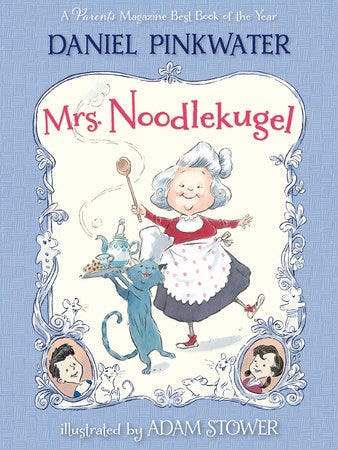
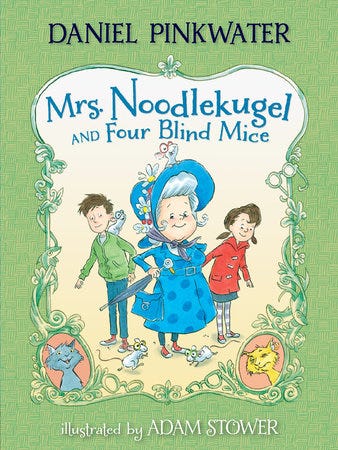
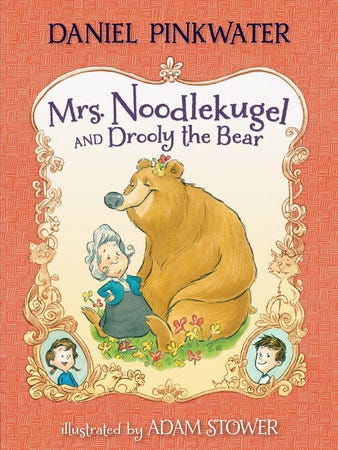
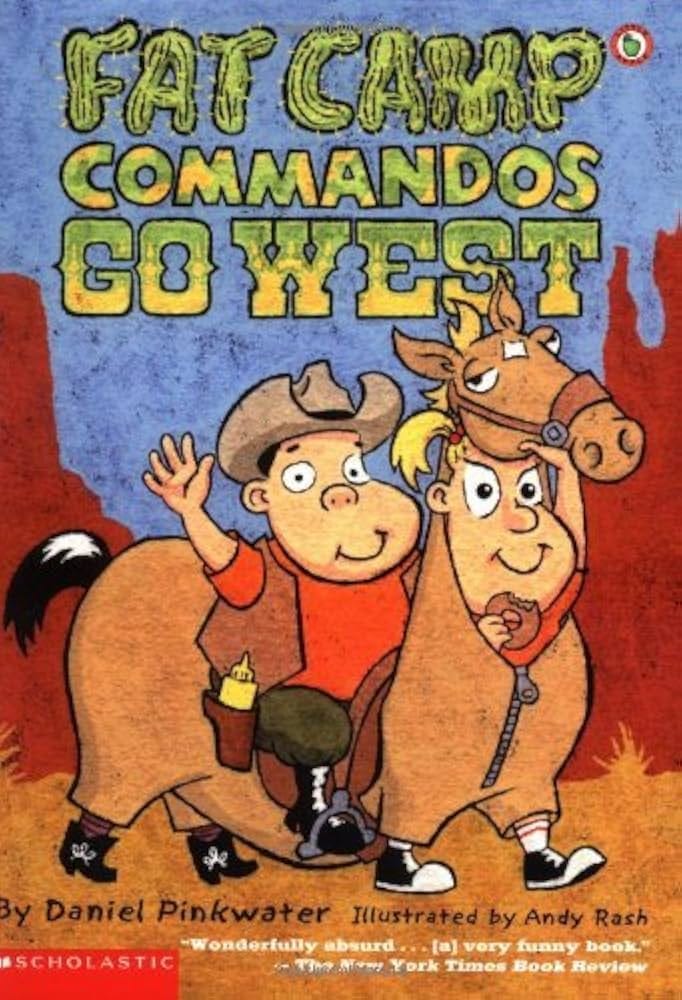
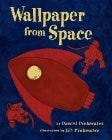
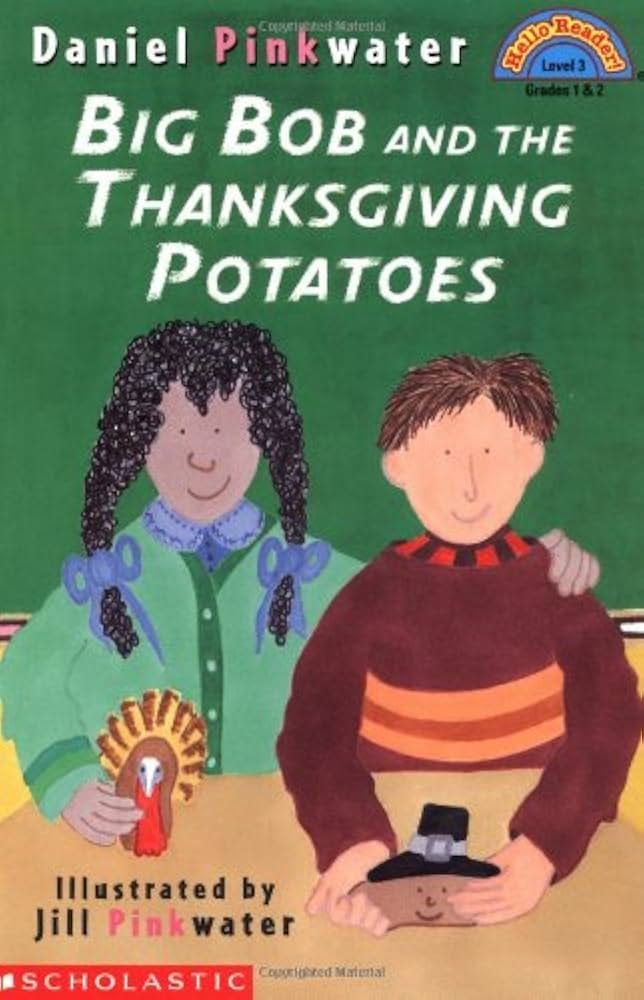

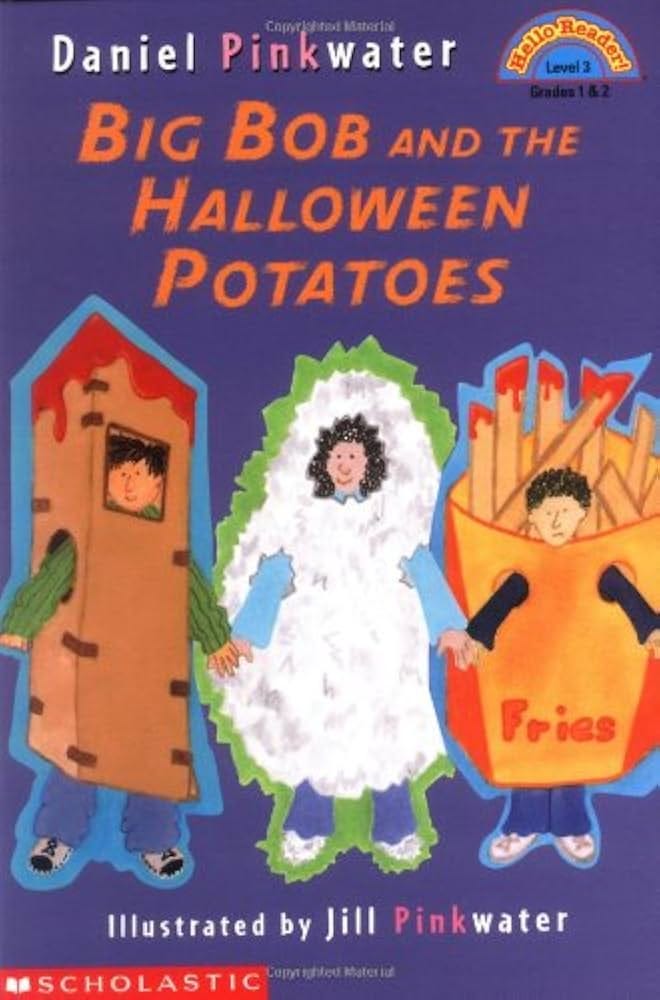
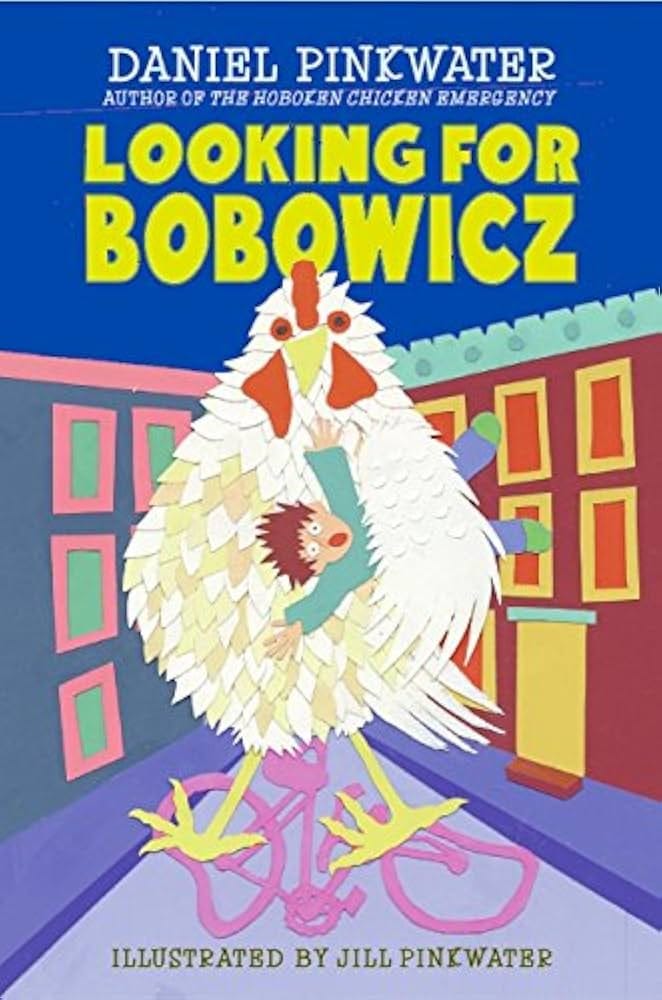
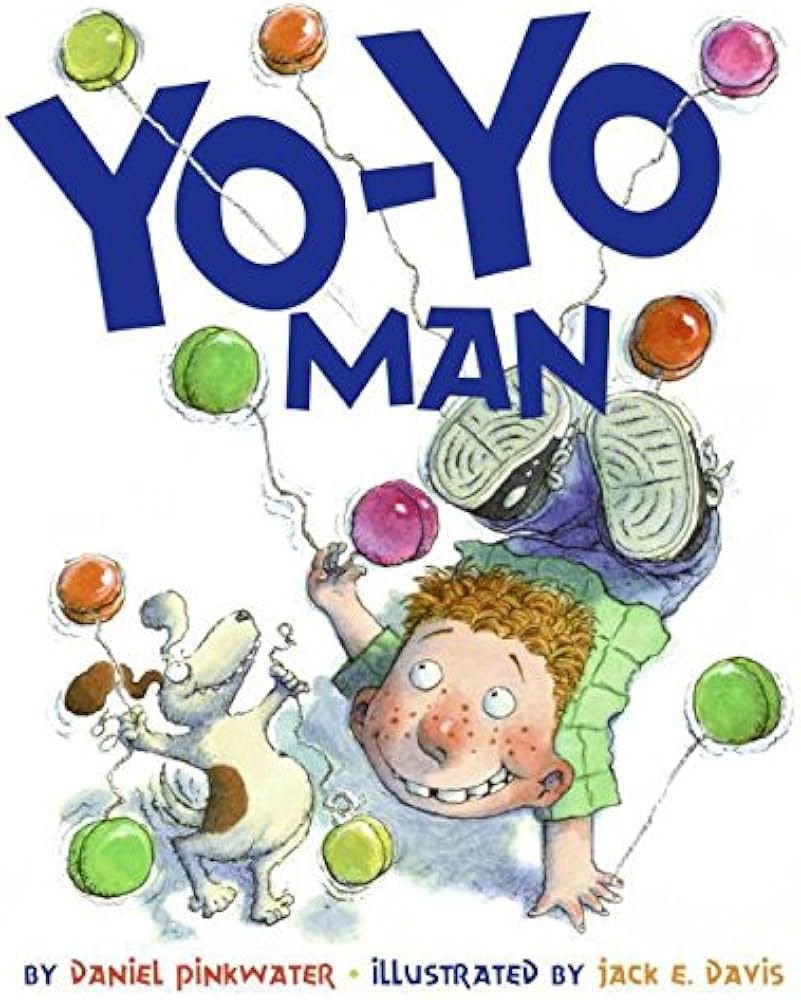
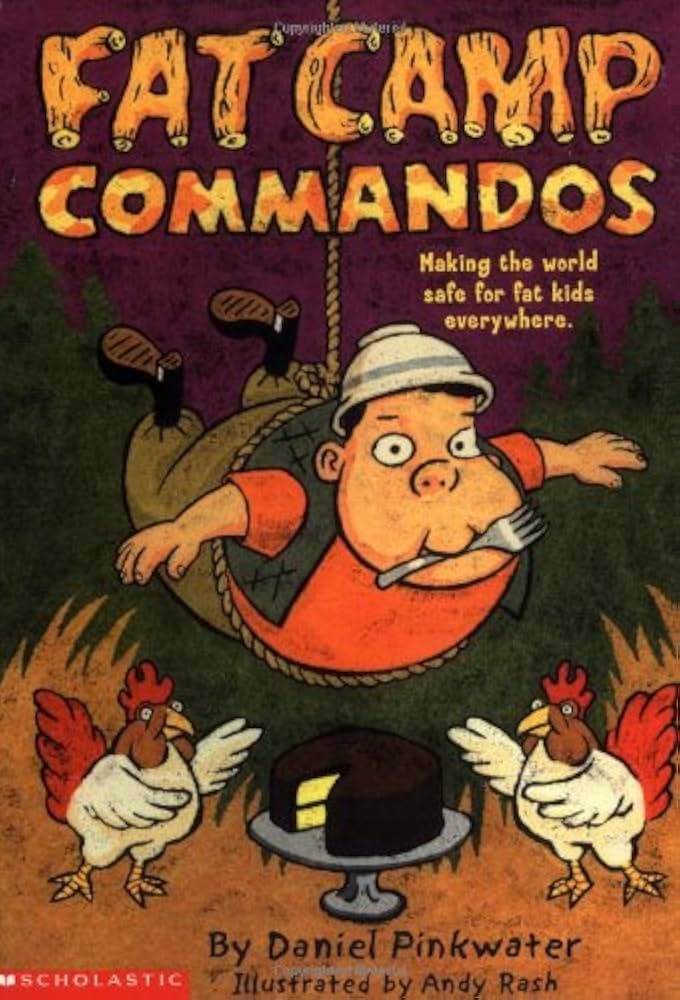
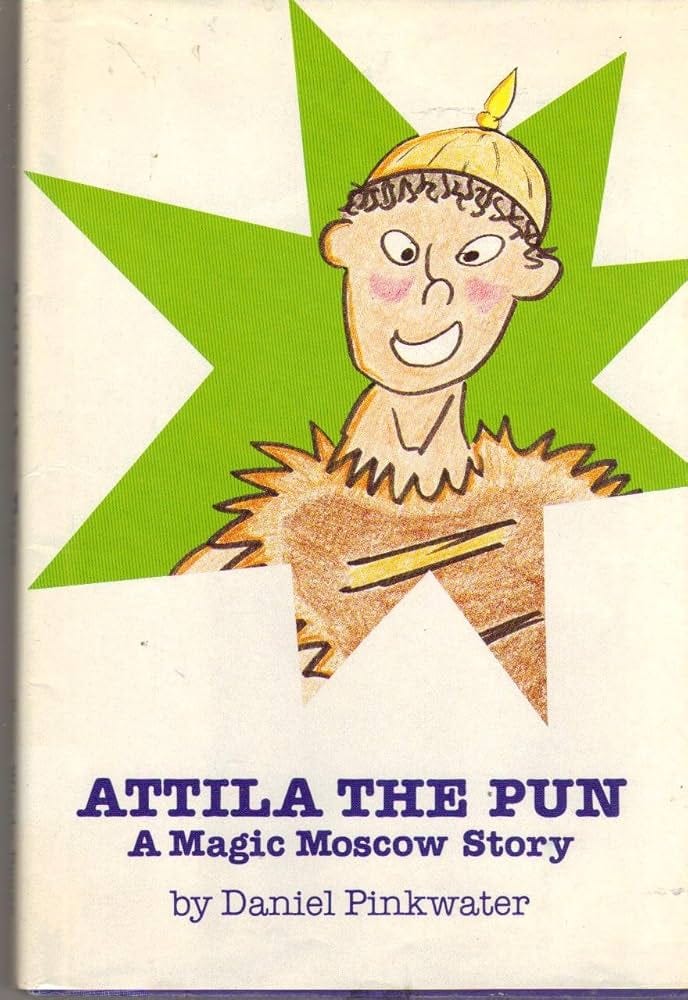
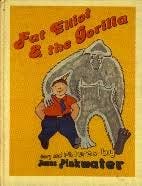



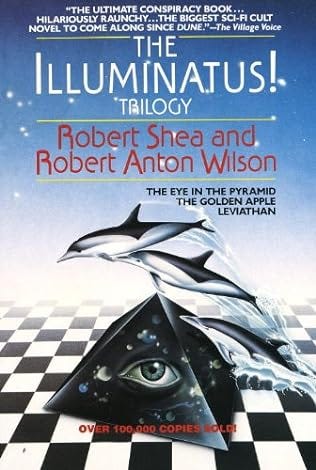

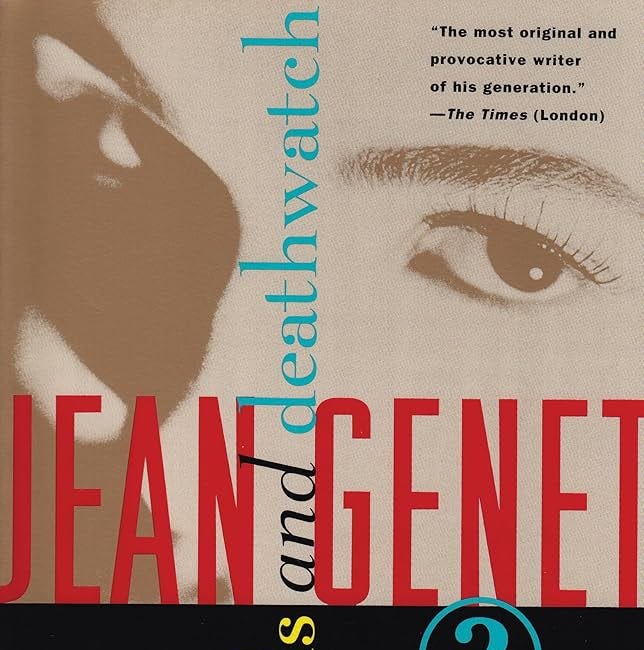


As I read your list, I was struck by uncertainty about a foundational question: did I know who DMP is? I had definitely read The Big Orange Splot, while others sounded vaguely familiar. The art style(s) rang some bells. However, DMP's name didn't trigger any memory senses.
I have been reading some of the shorter books and, so far, sampling longer ones. Is your ranking order also the order in which you would suggest reading DMP's books?
It seems that DMP's life is nearly as comically absurd as some of his books. To give a sense, from Wikipedia:
"[he] was training to become an art therapist, but found he was unsuited to the work and dropped his studies. However, he attended a meeting of an unspecified cult with a therapy client. He and his wife Jill later joined the cult, then eventually left it.
[...]
He adopted the name Daniel in the 1970s after consulting his cult's guru, who said his true name should begin with a 'D'."
Part of what really gets me about this is the total lack of identifying detail about the cult.
However, to my taste, the most ridiculous episode concerns the use of one of his short stories in a standardized test fiasco. To whet your appetite, consider facing the following question on a SAT-like exam:
"When the moose said that the pineapple has some trick up its sleeve, he means that the pineapple
A is wearing a disguise
B wants to show the animals a trick
C has a plan to fool the animals
D is going to pull something out of its sleeve"
The reading and test questions: https://usny.nysed.gov/docs/the-hare-and-the-pineapple.pdf
A New Yorker article about the incident: https://www.newyorker.com/magazine/2012/05/07/food-groups
How wonderful to find someone who appreciates Pinkwater even more than I do! Fantastic. I agree about Alan Mendelsohn, but I'd put Baconburg Horror higher up. I'm fine with absurdity and no enlightenment sometimes, or perhaps a Ferris wheel on fire is the transcendent experience?
Also , you say that a jitterbug is a food, and imply that a borgelnuskie is perhaps a fictional version. What is a jitterbug?? Just try googling for it and you'll see that the internet is no help with this question. (What is real, and what is not? I will never forget my astonishment, in 1990, when I saw an actual Wartburg car. I'd always assumed it was a fictional name.)
Your analysis also made me think about the sad lack of weirdness and enlightenment in wider American society today. I have always thought that Pinkwater ought to be better known, and that disaffected weird teenagers should not have to go through life without him, which most of them do. Self-proclaimed incels perhaps suffer most from this and I can't help thinking that reading Lizard Music and so on would be better than living in the darker corners of the internet.